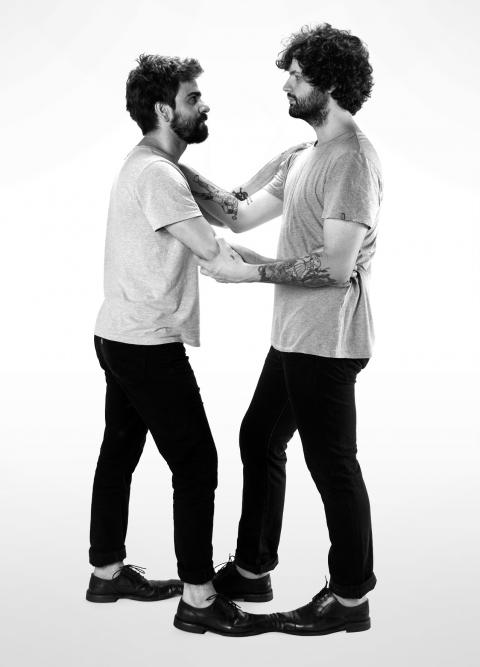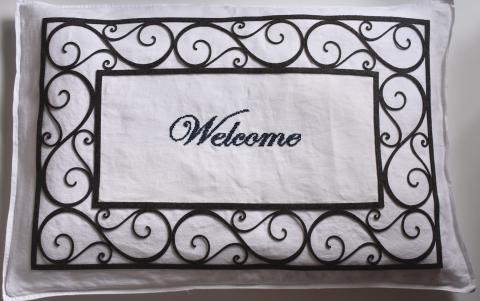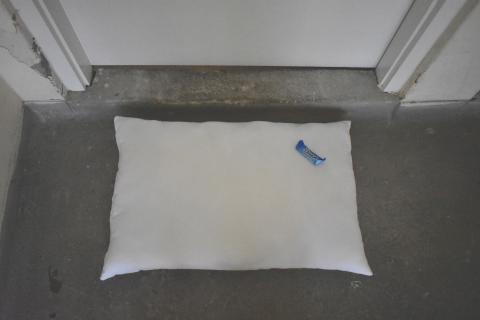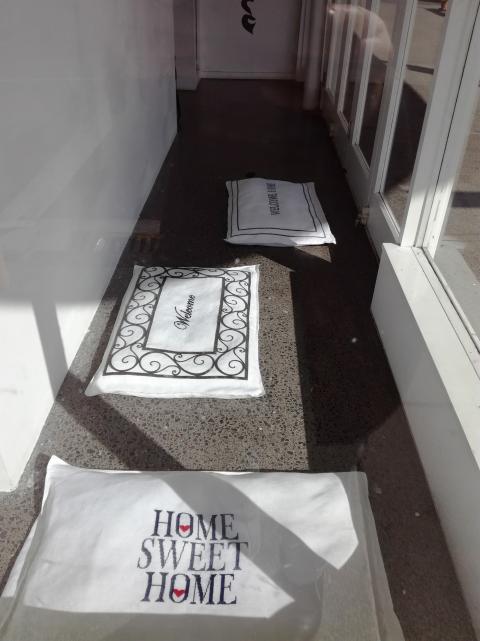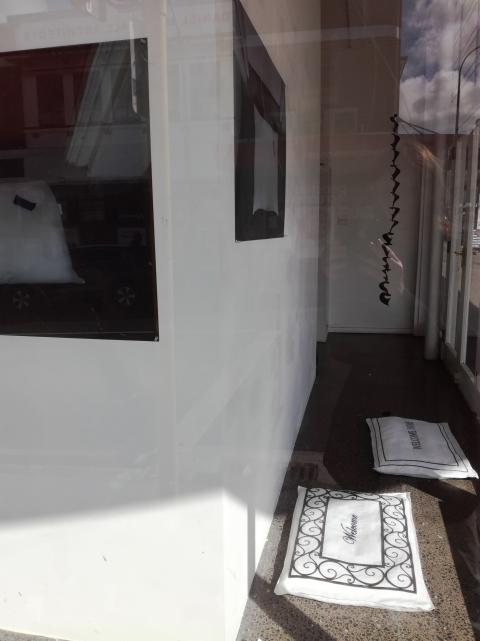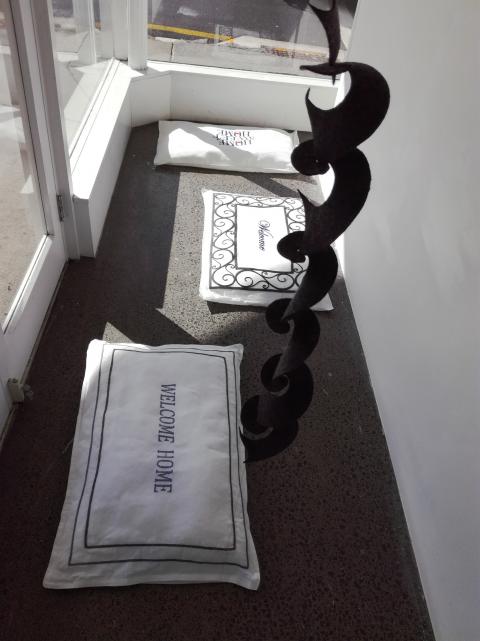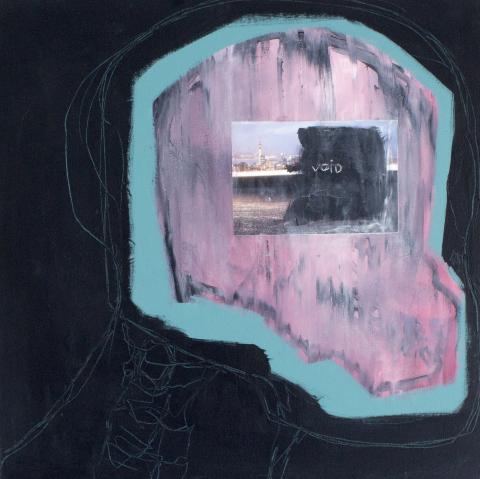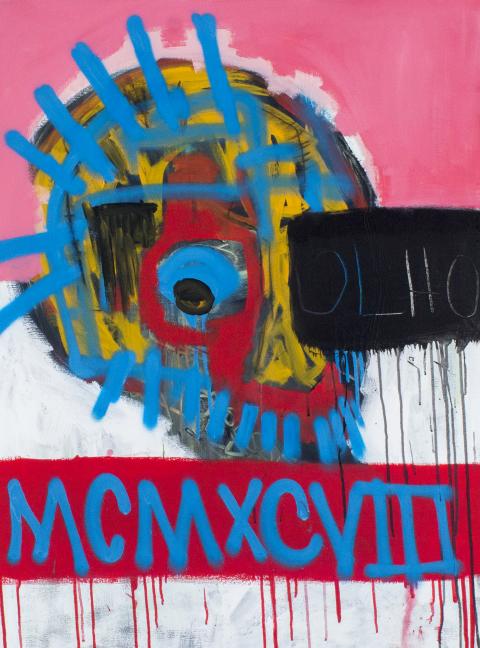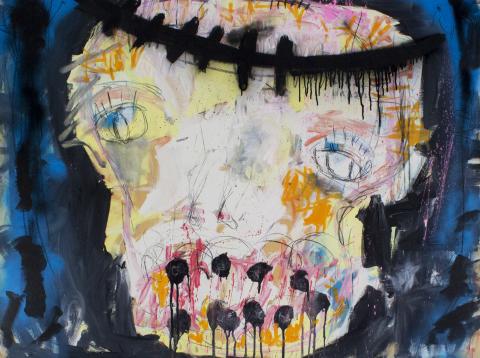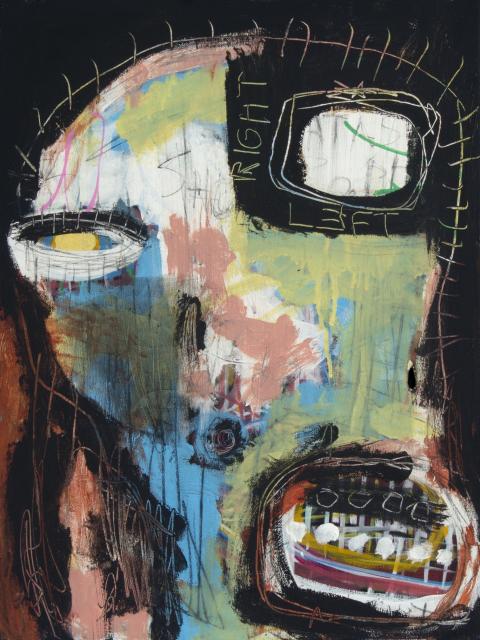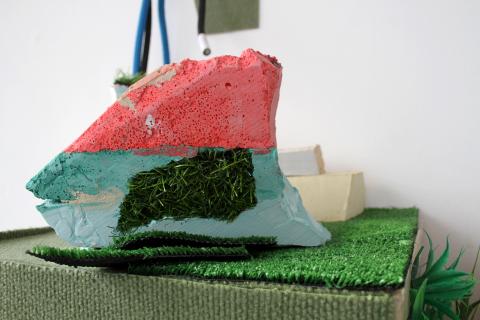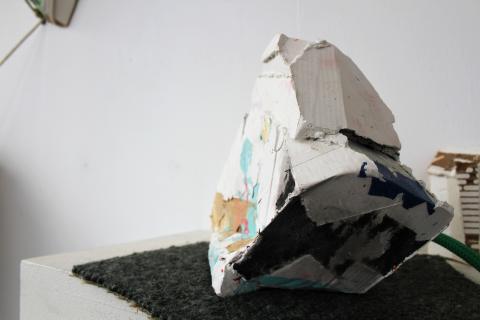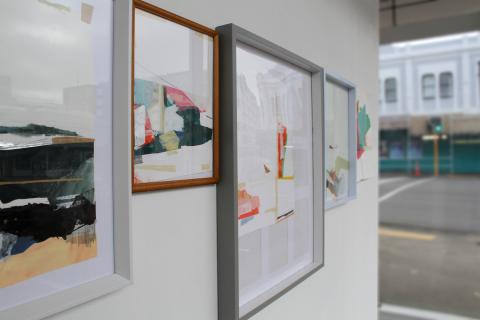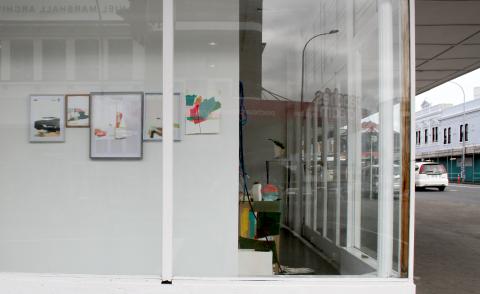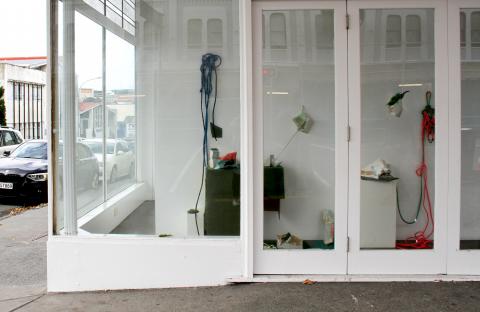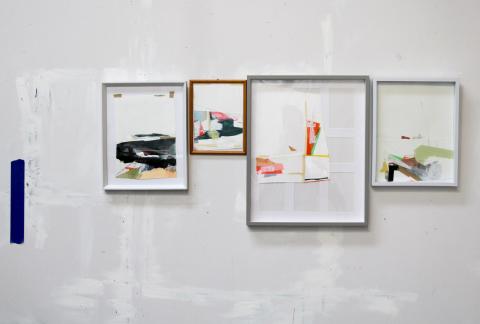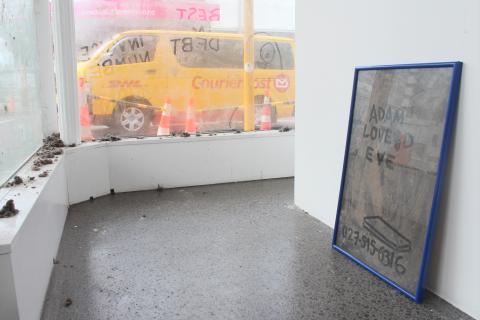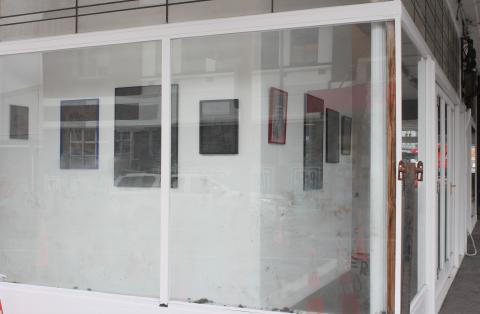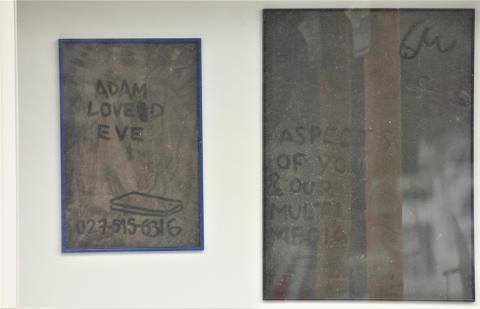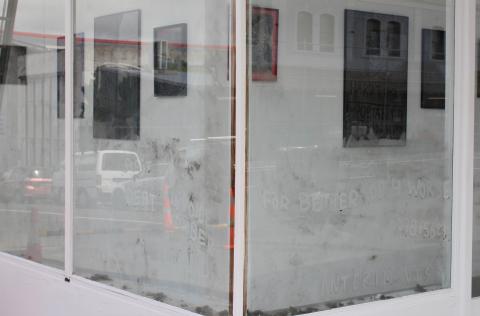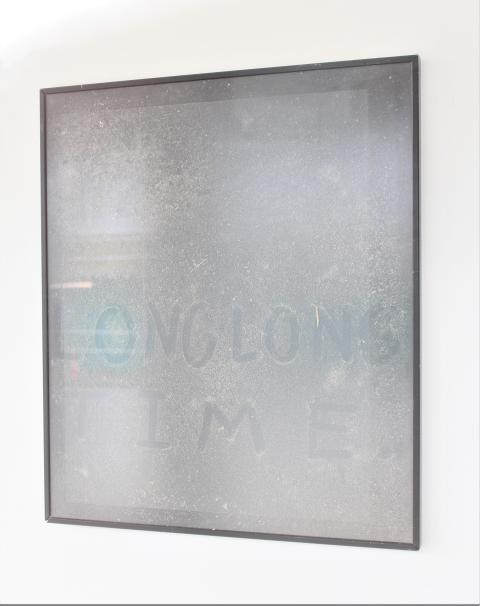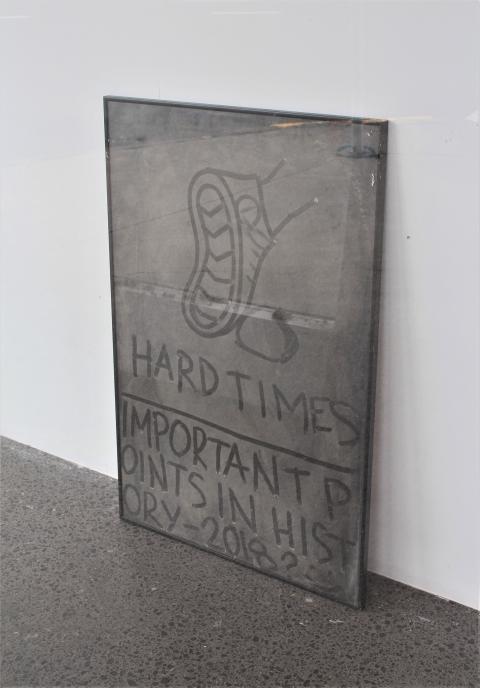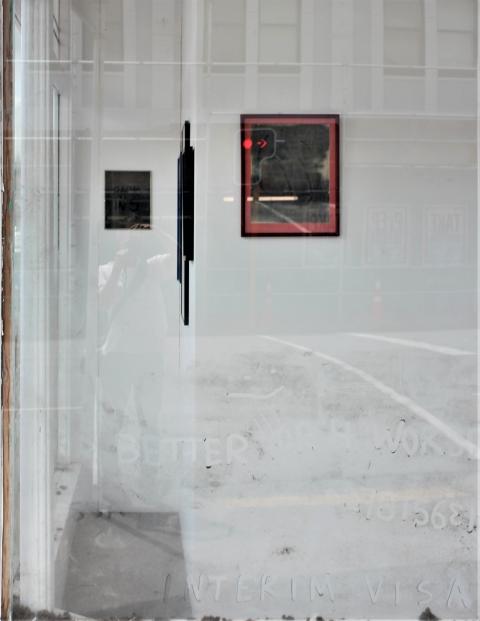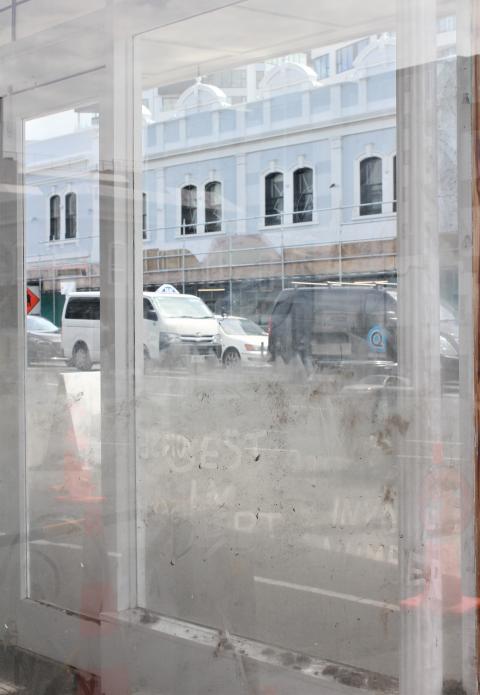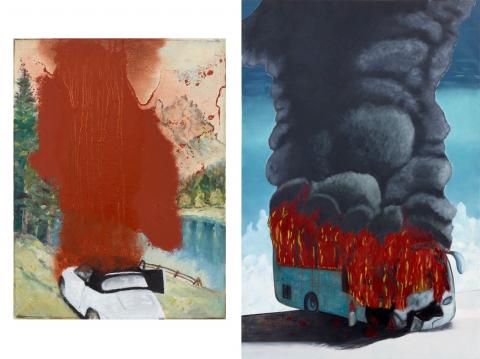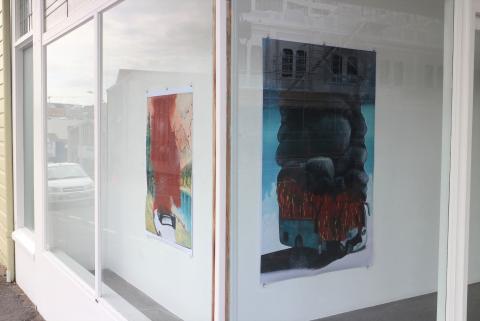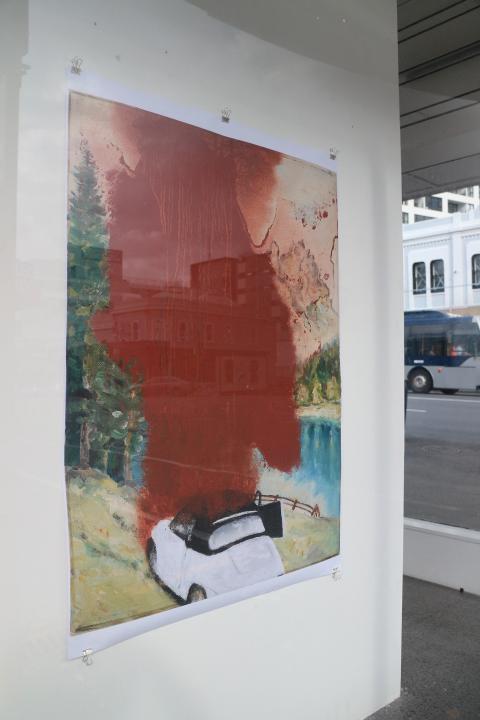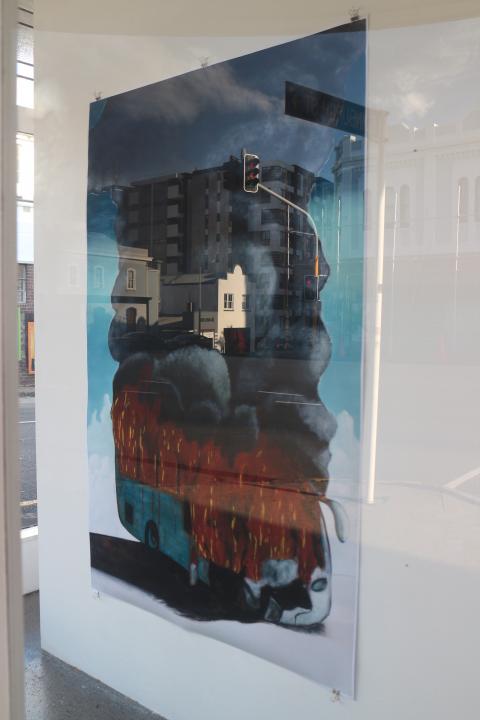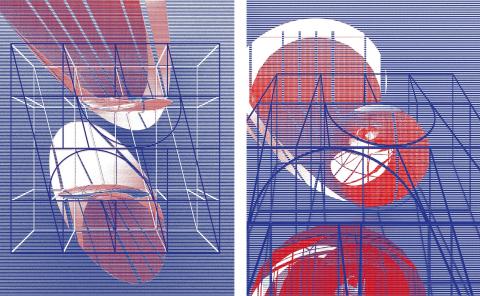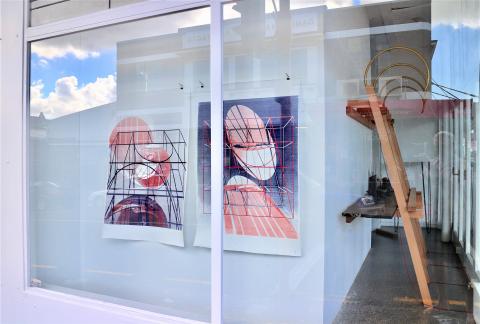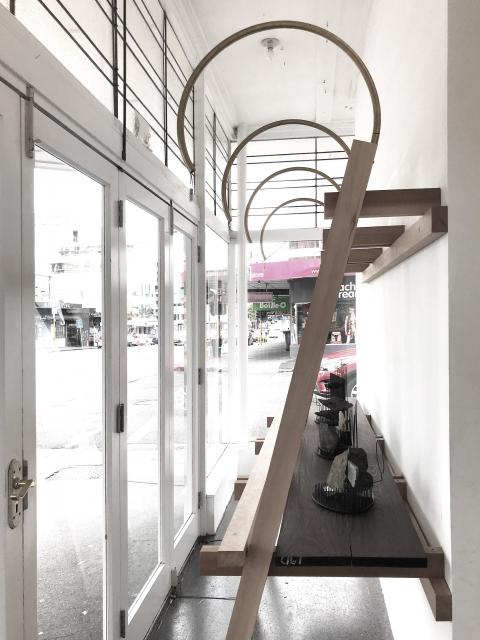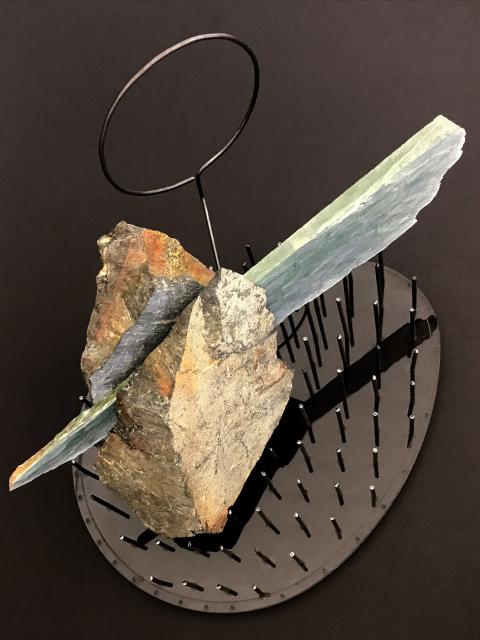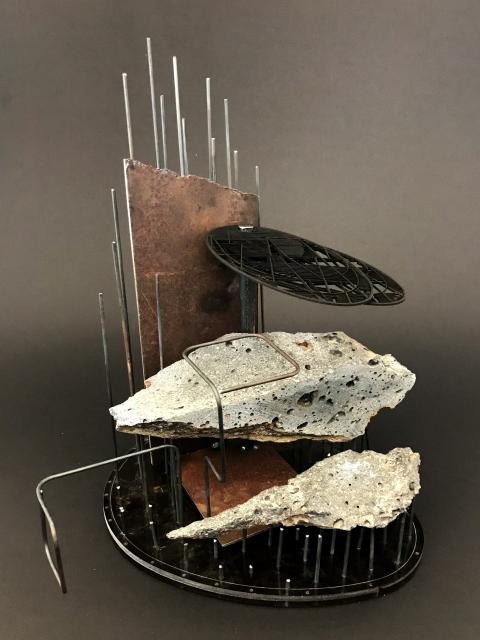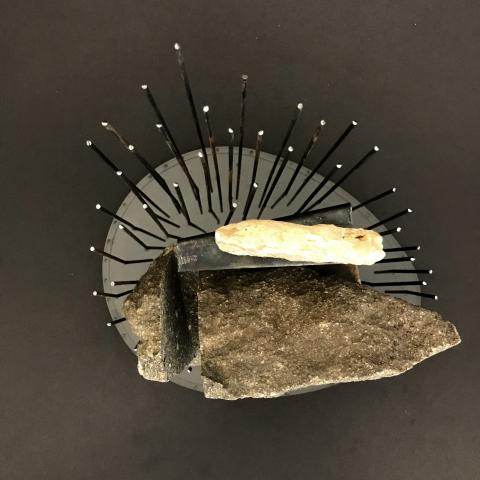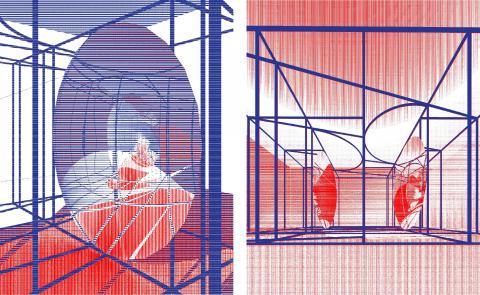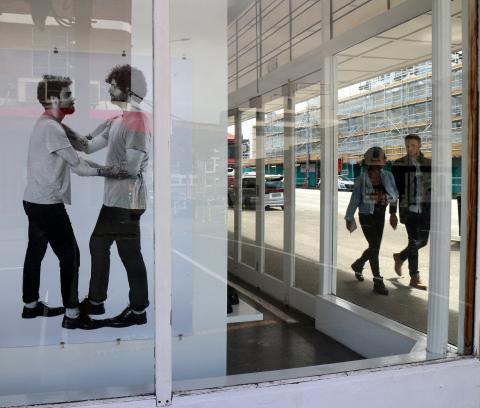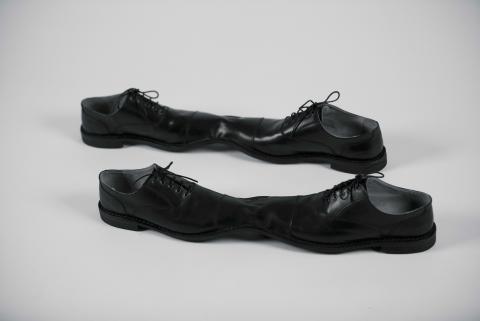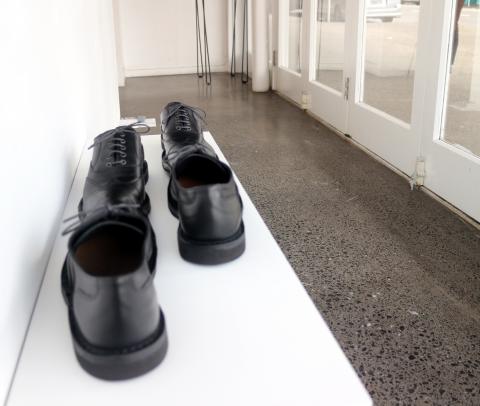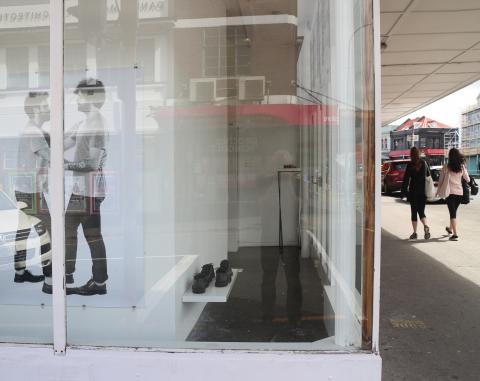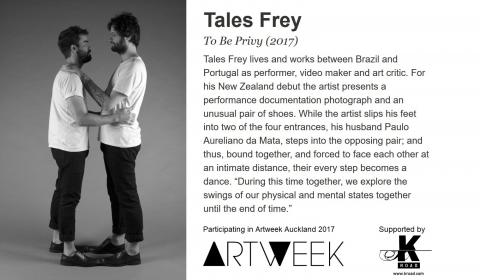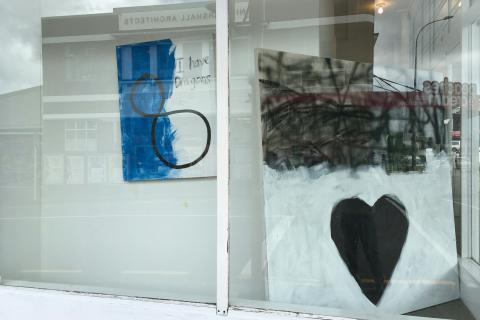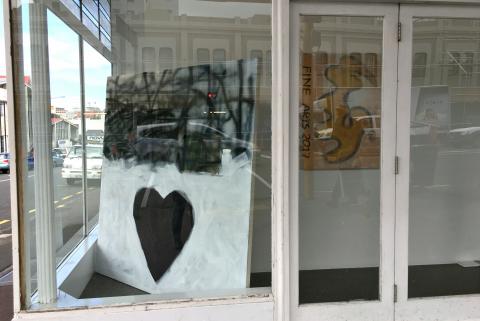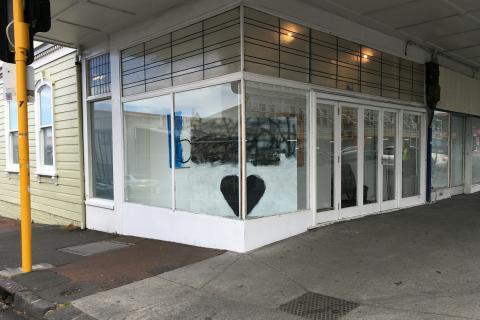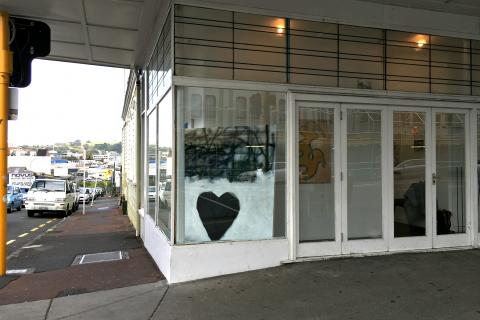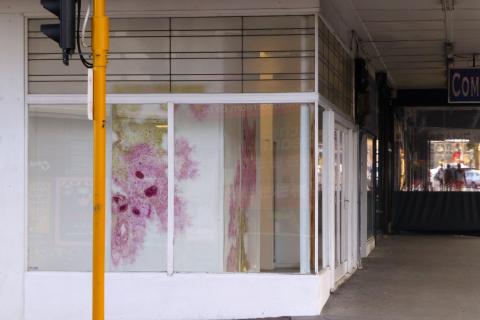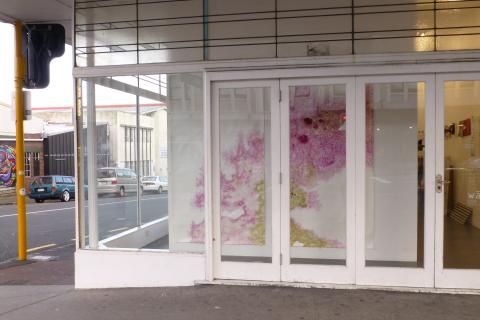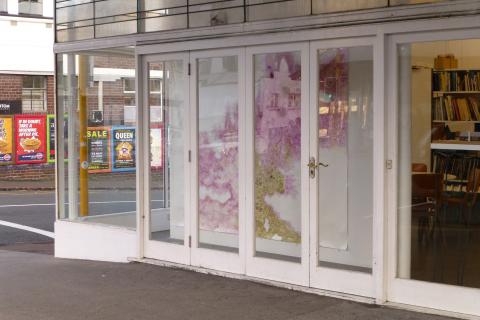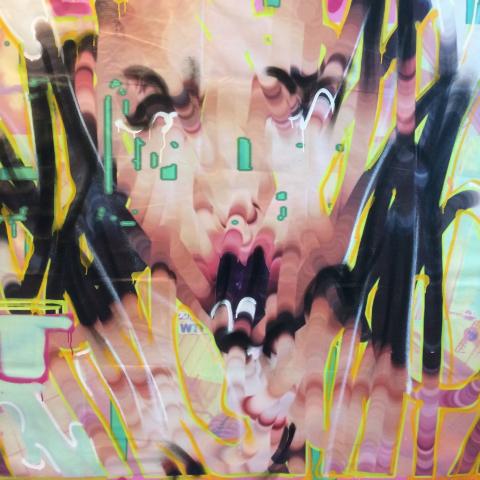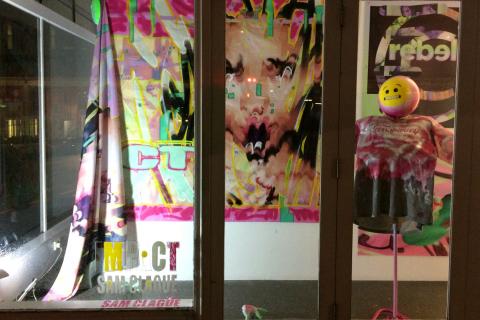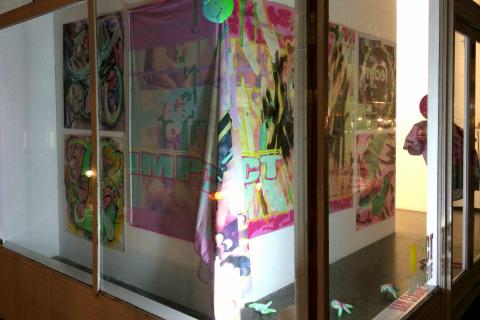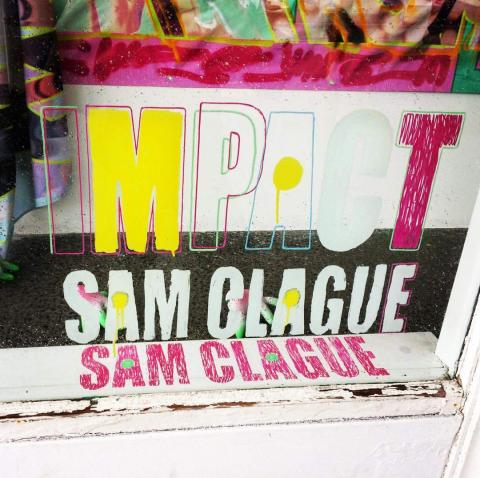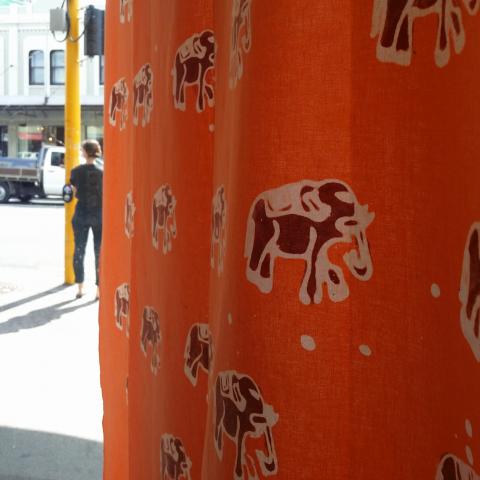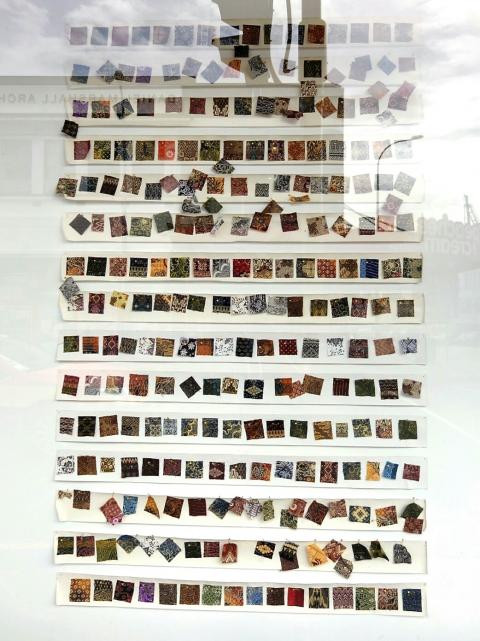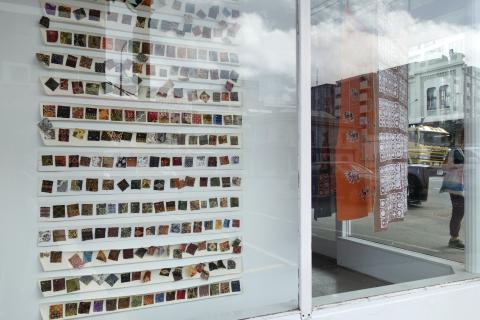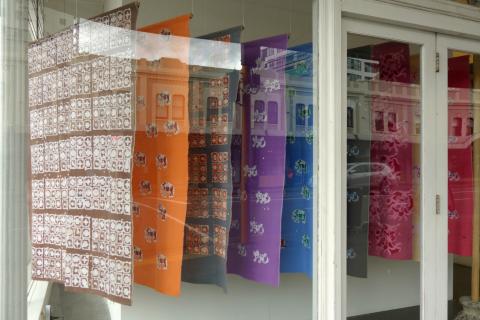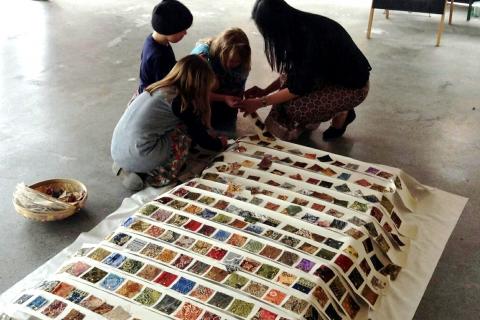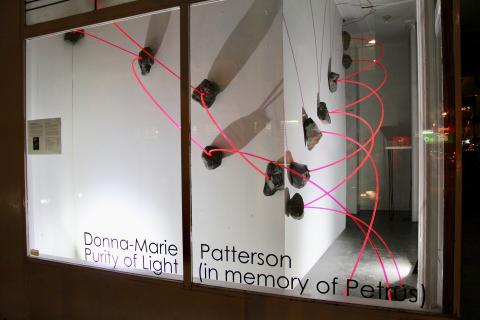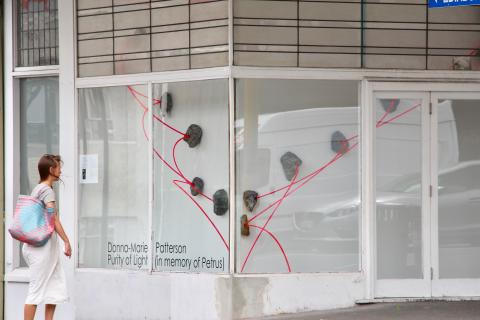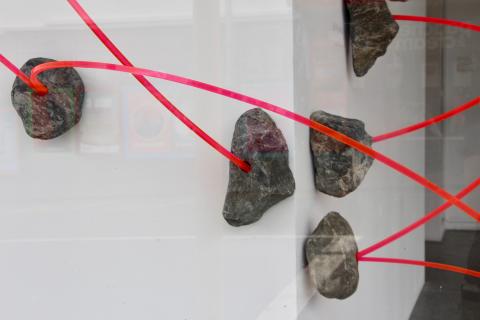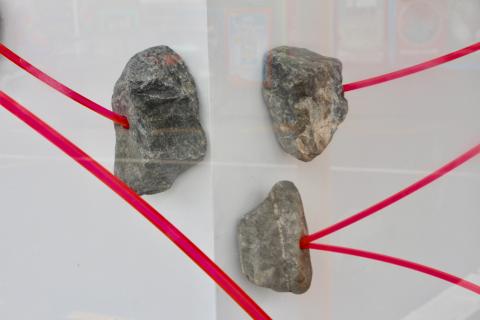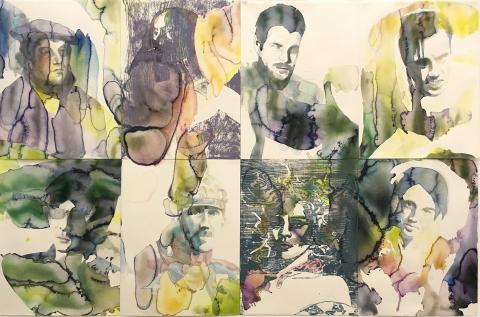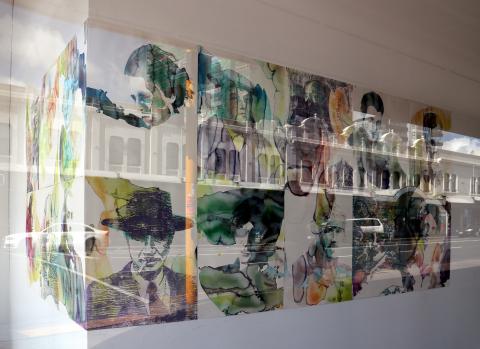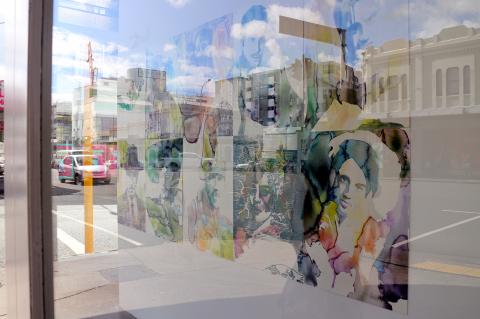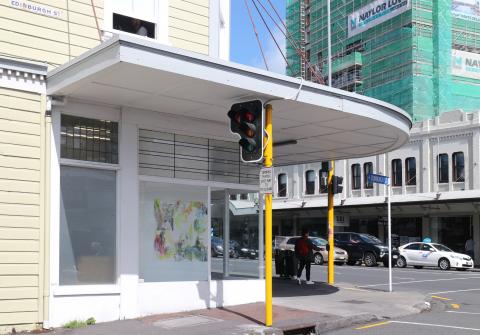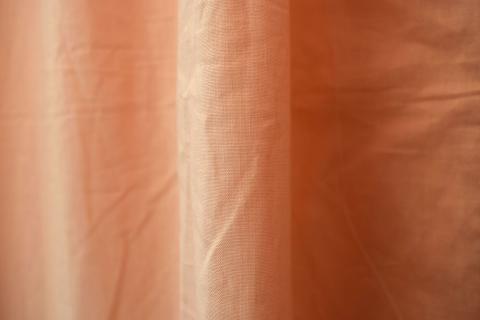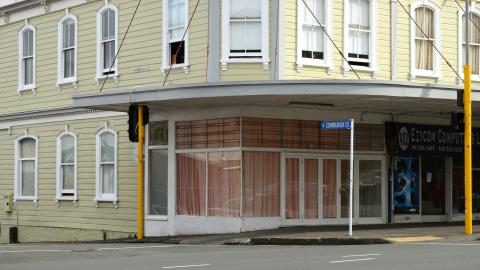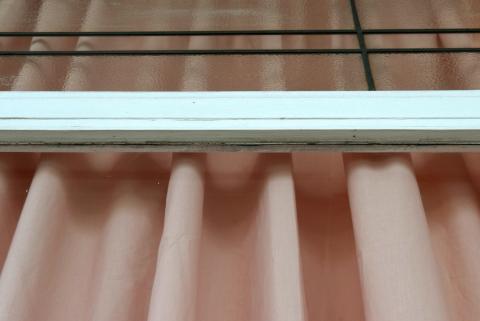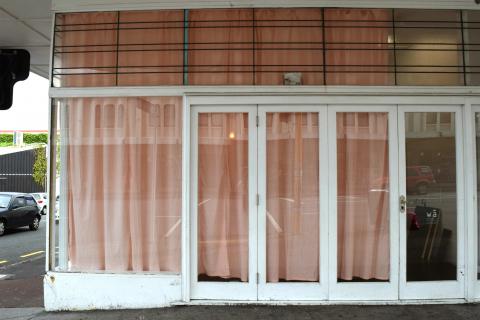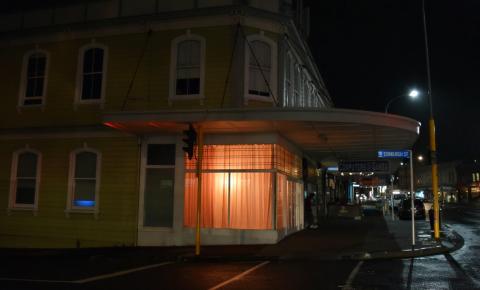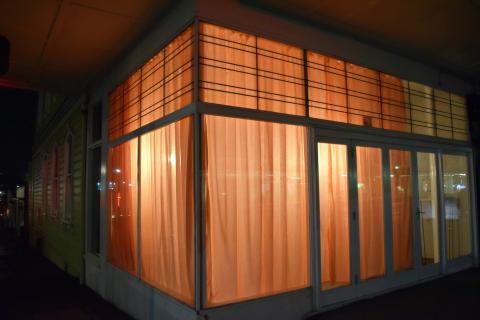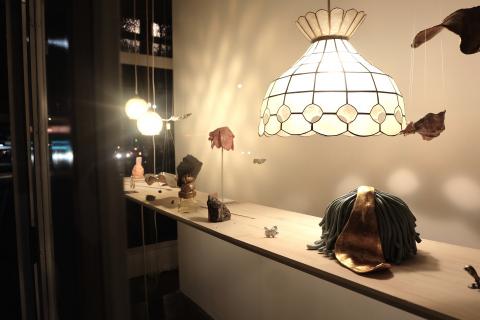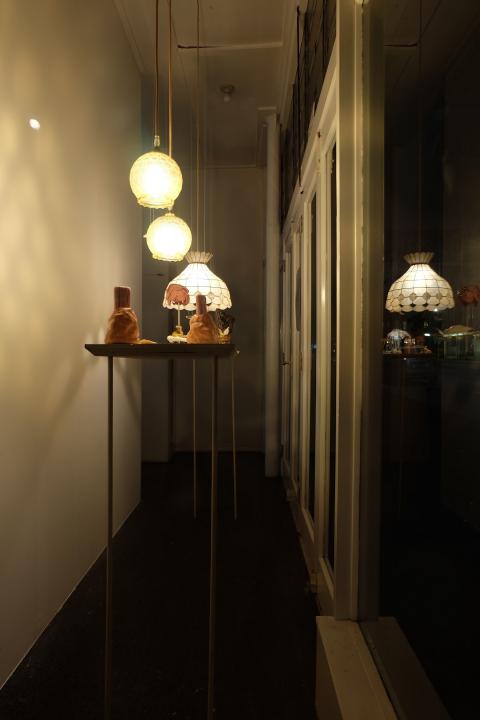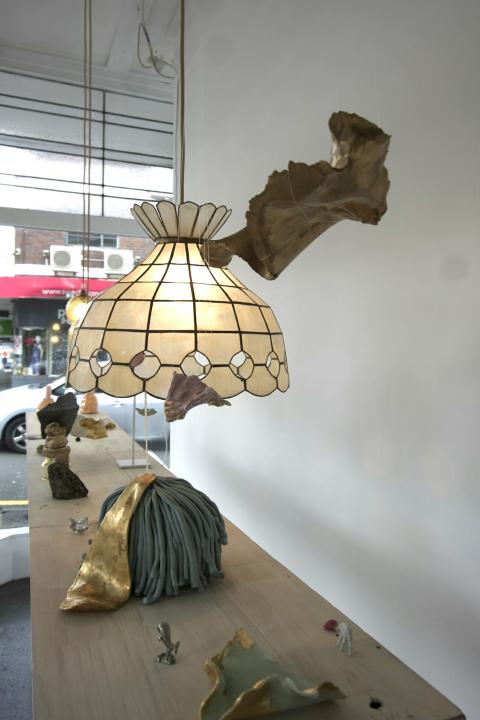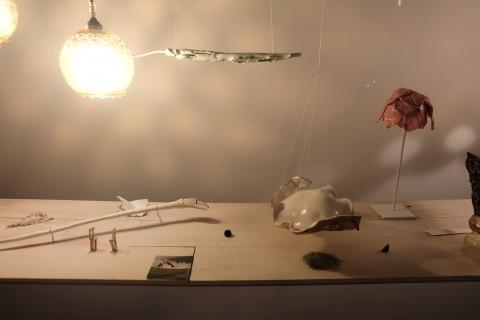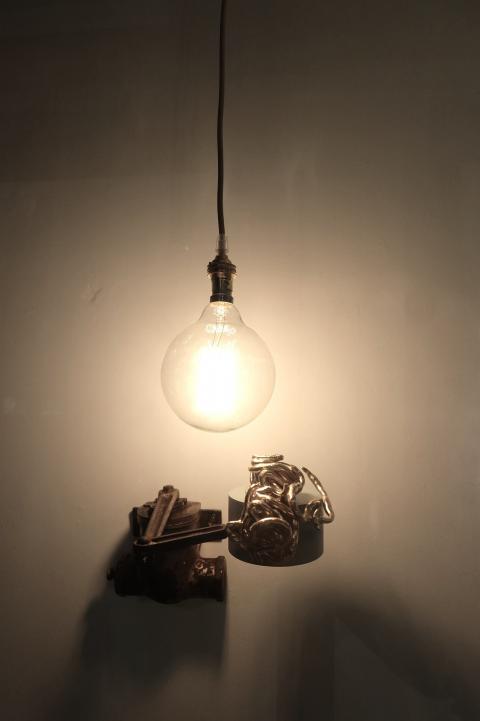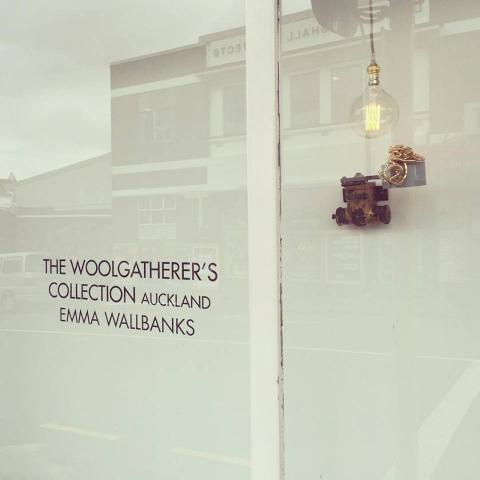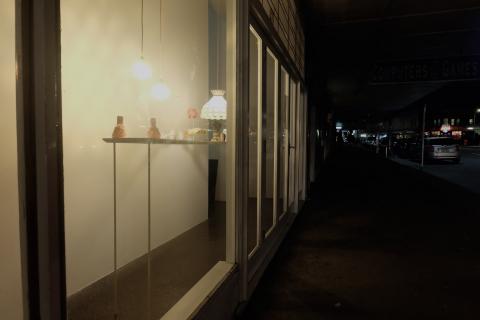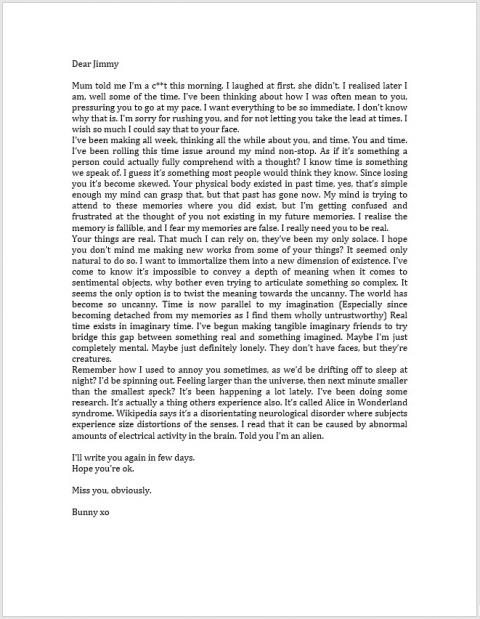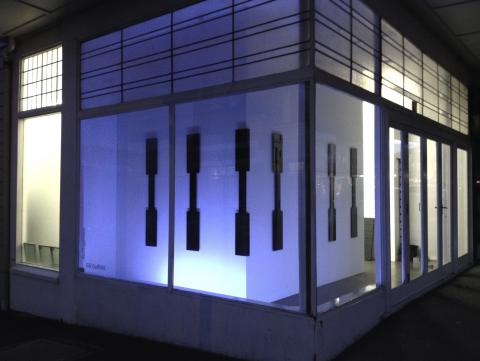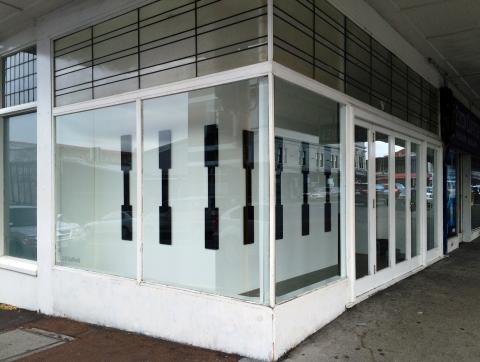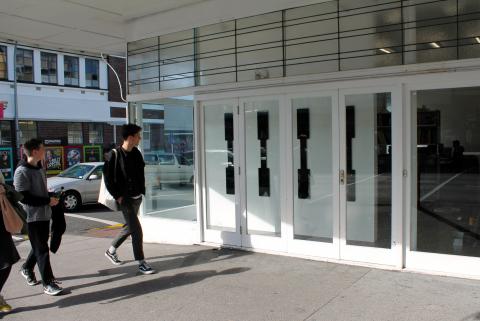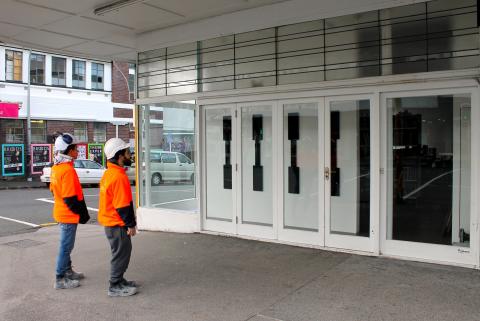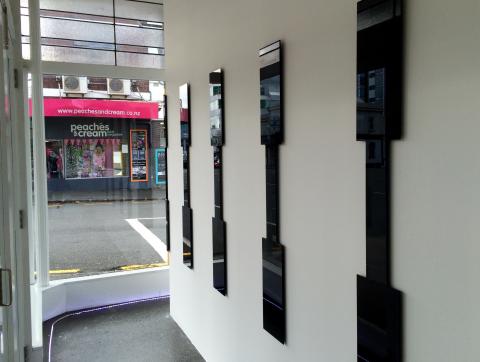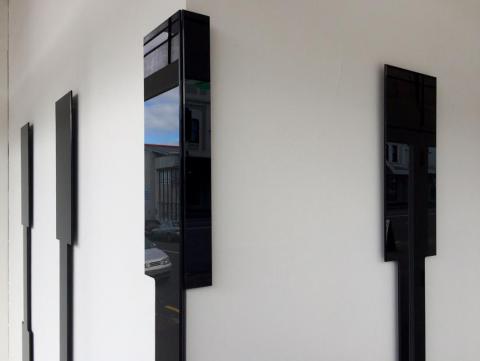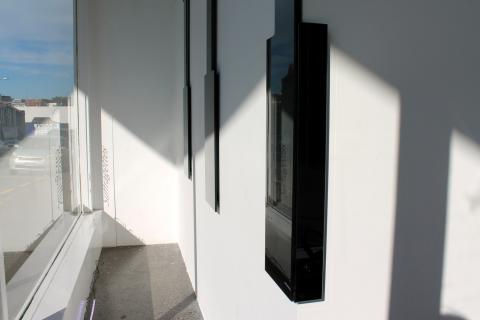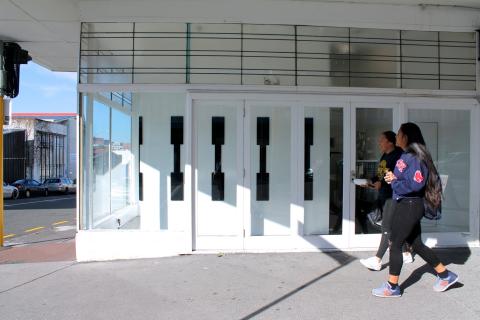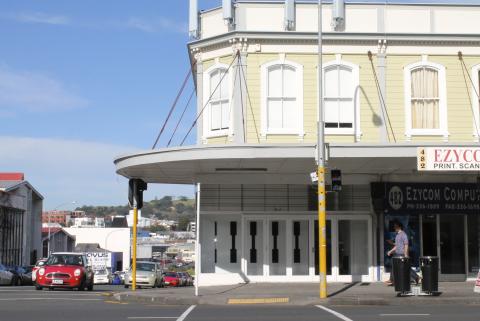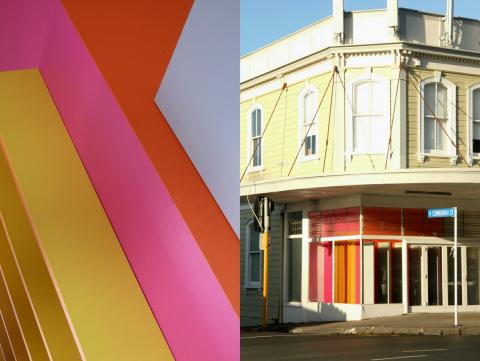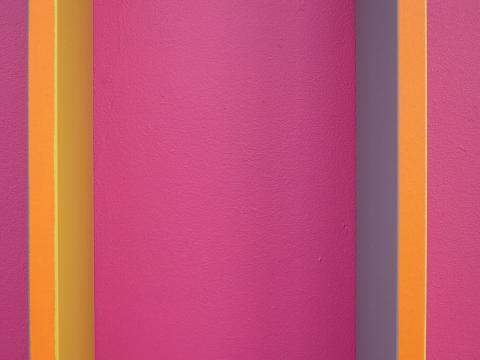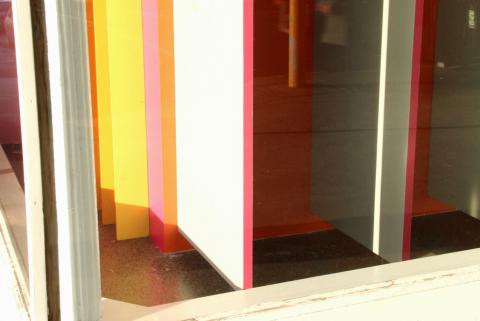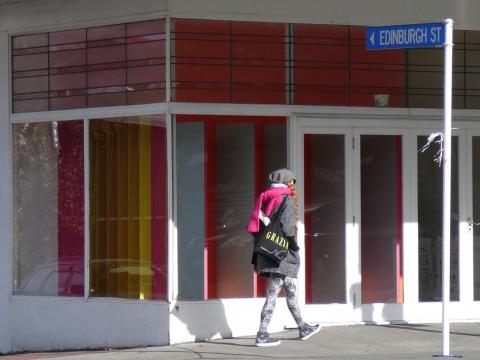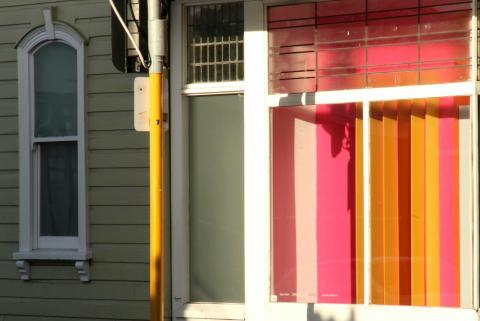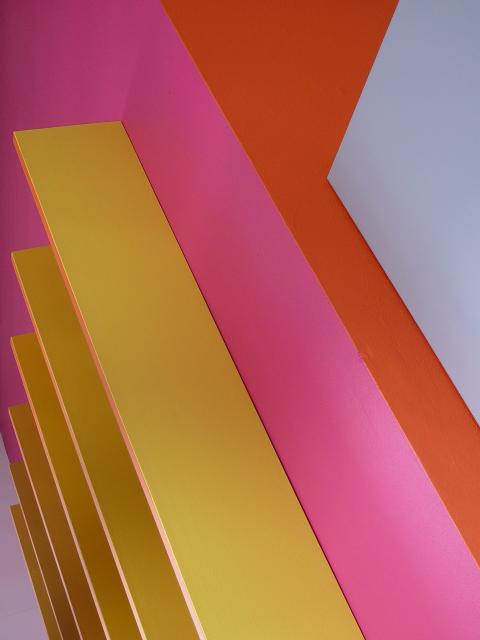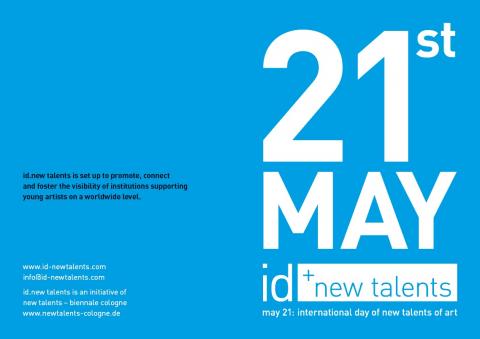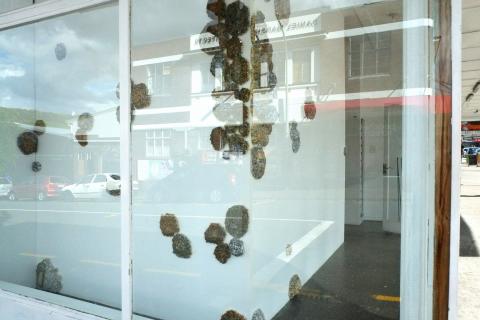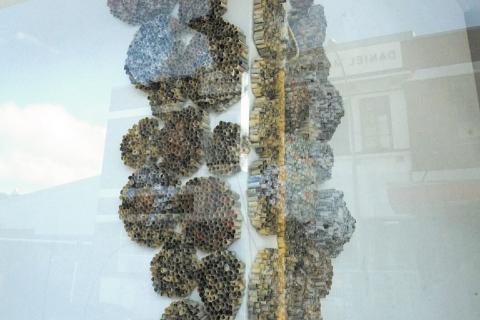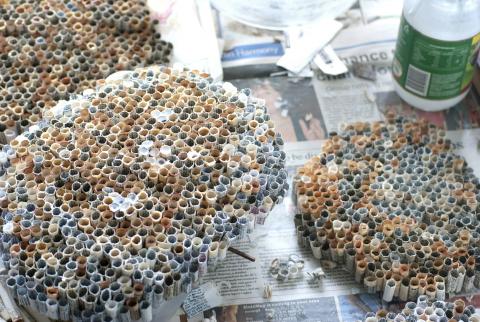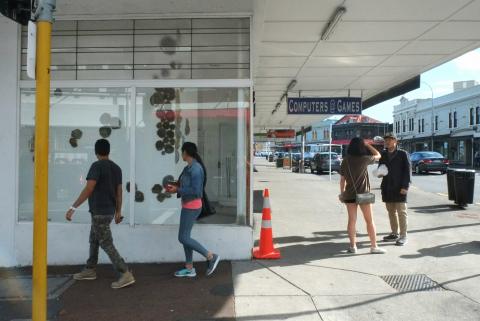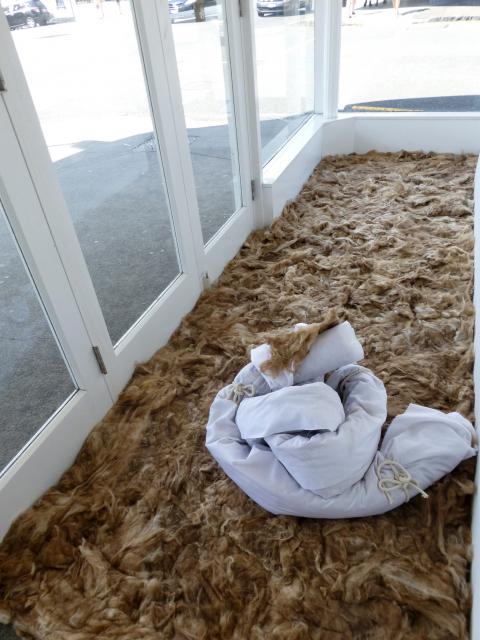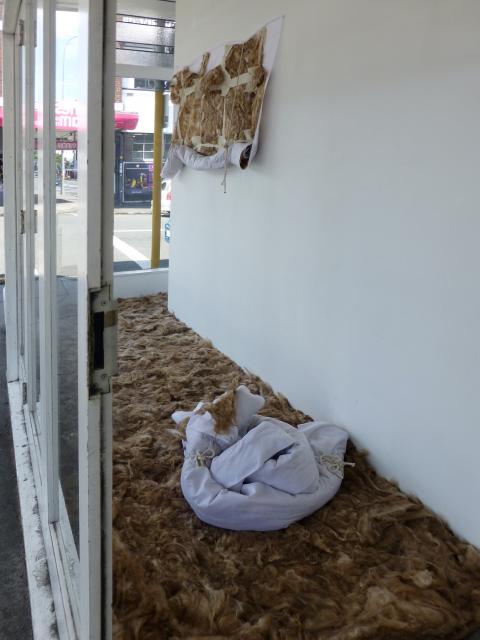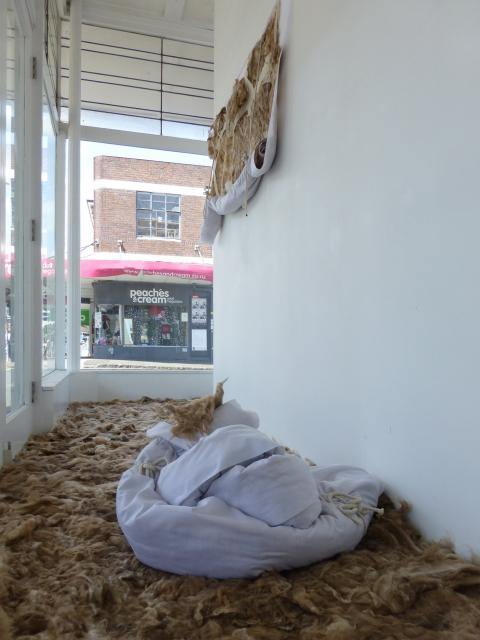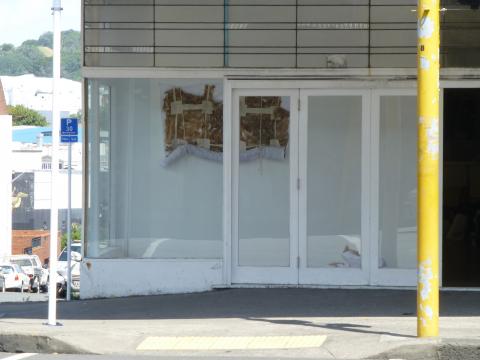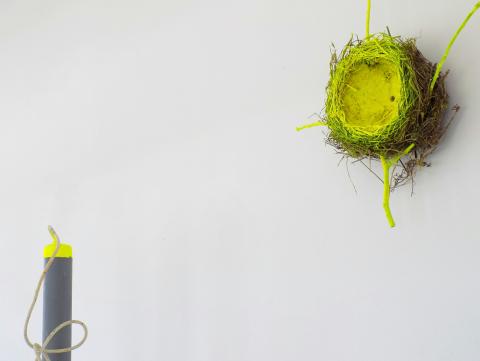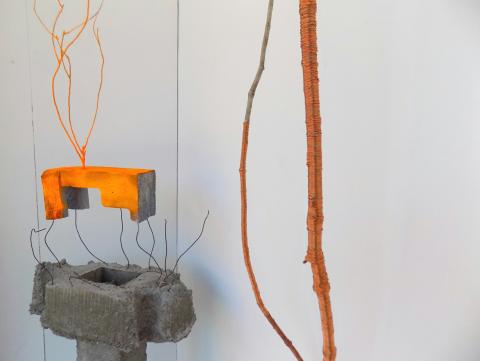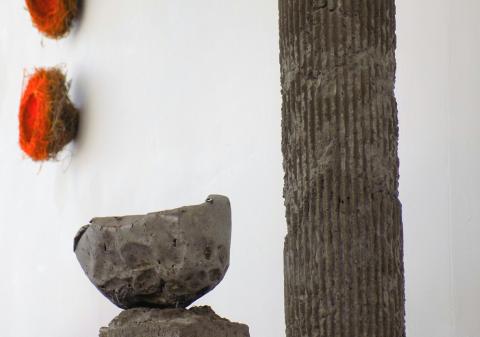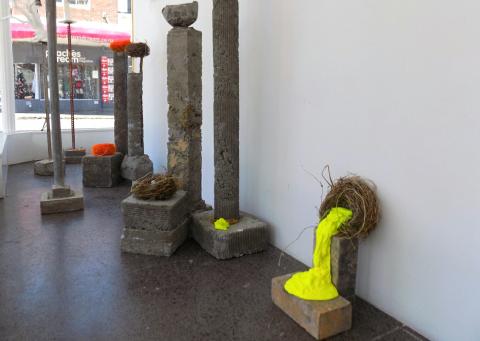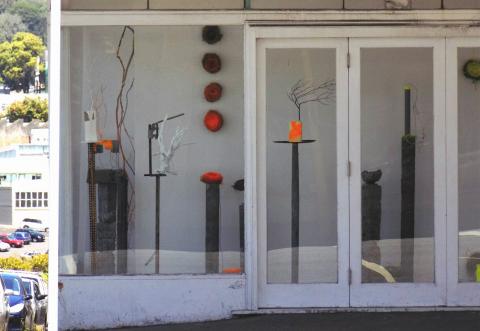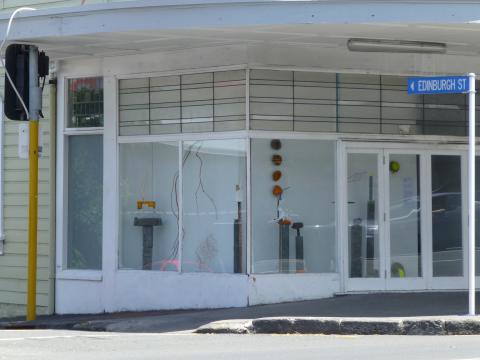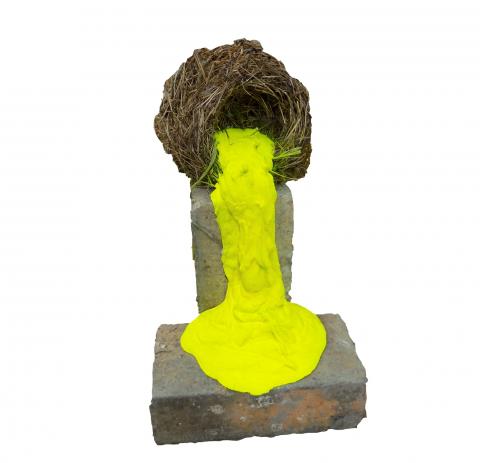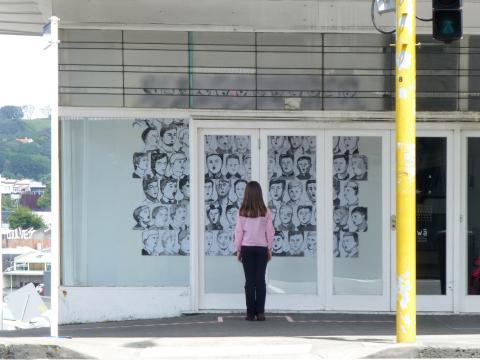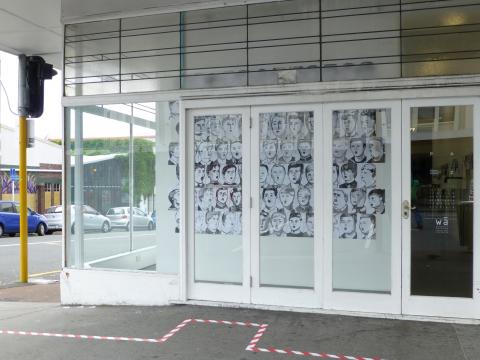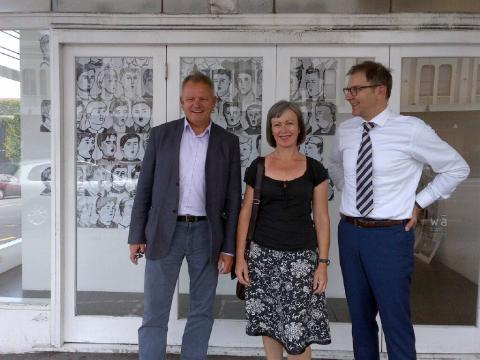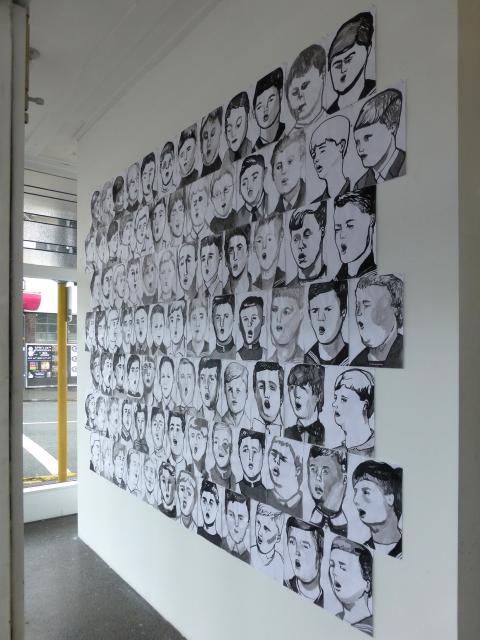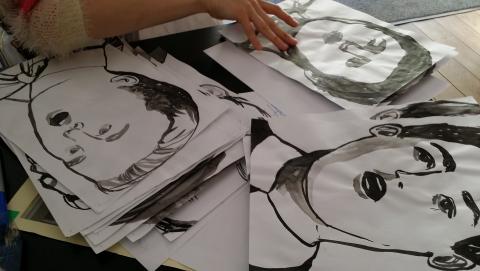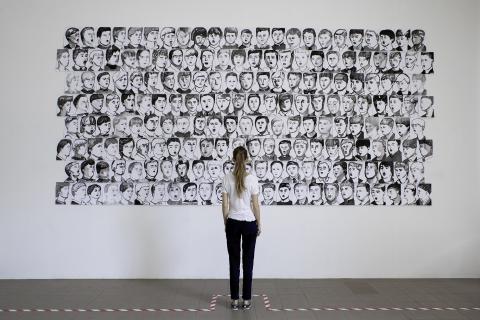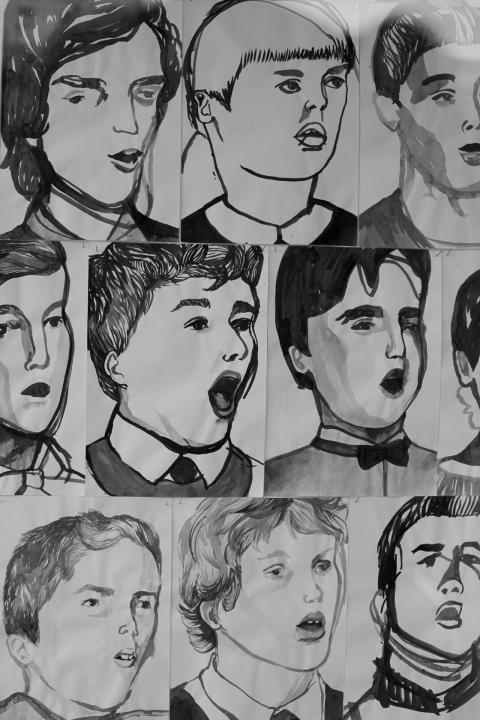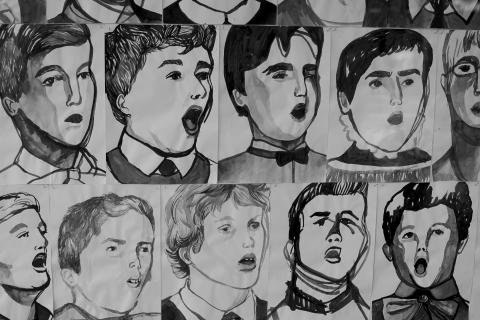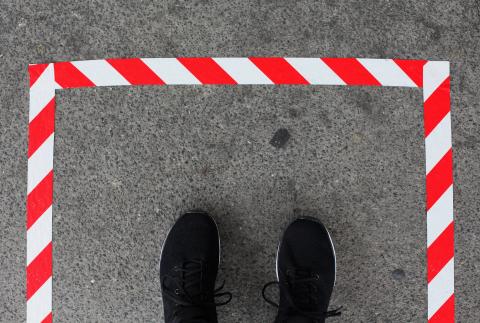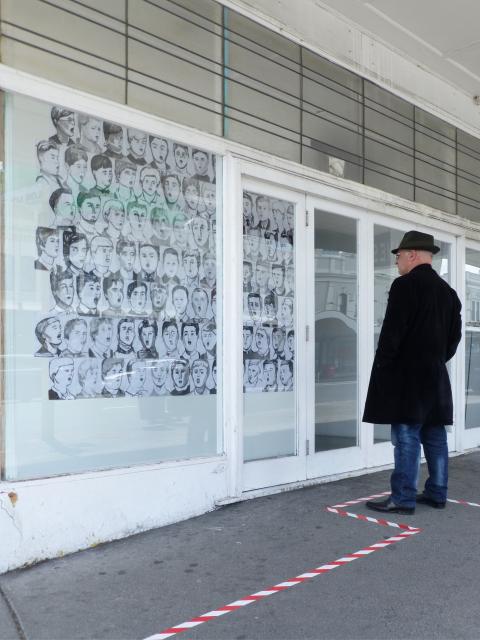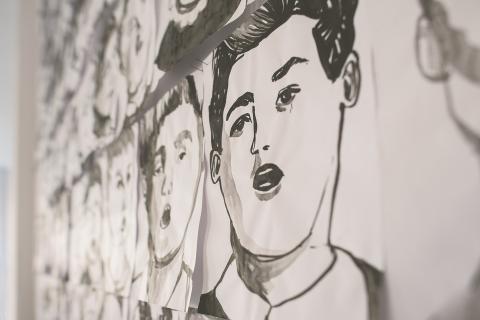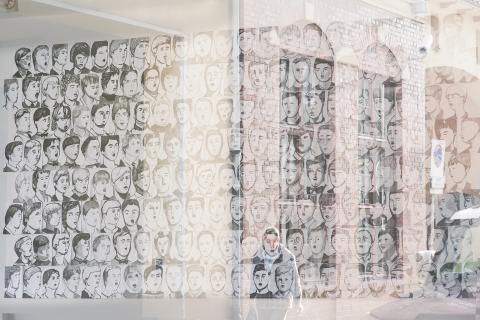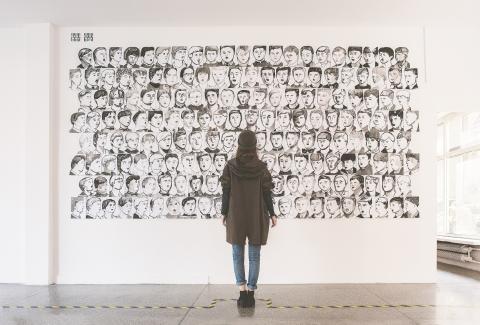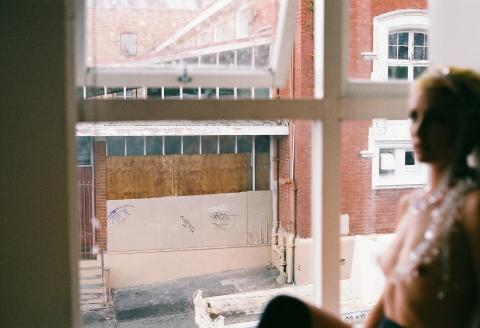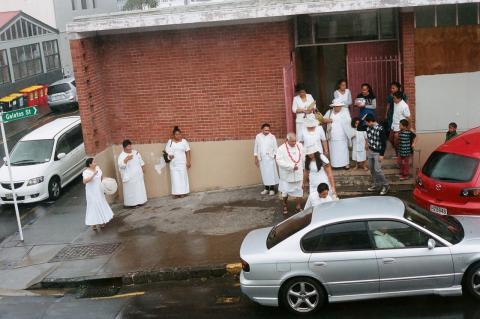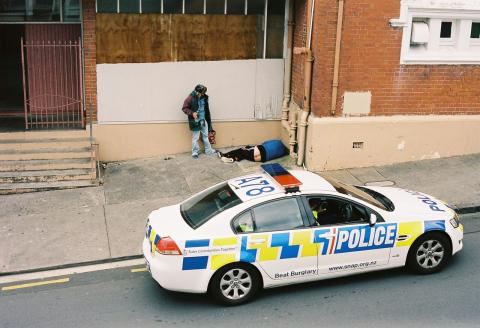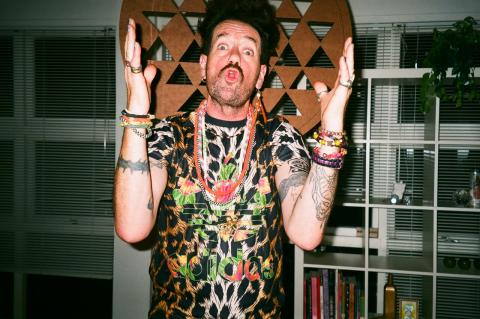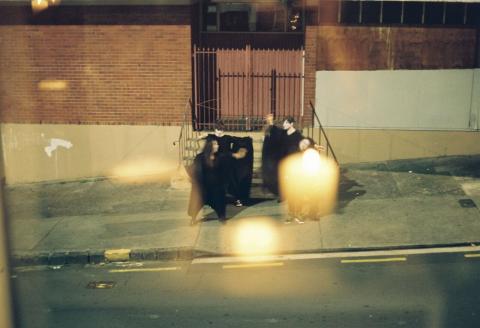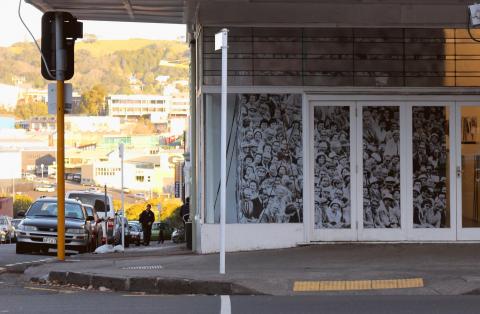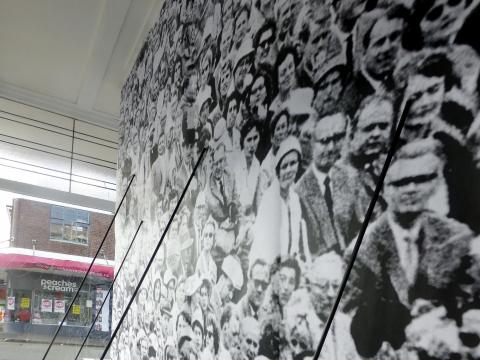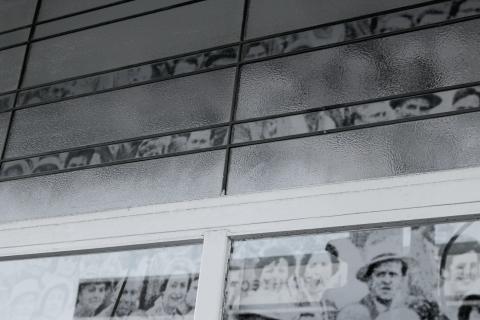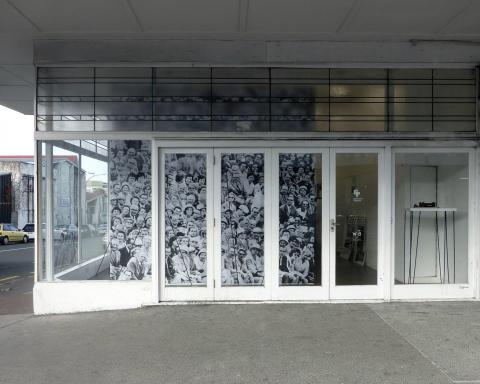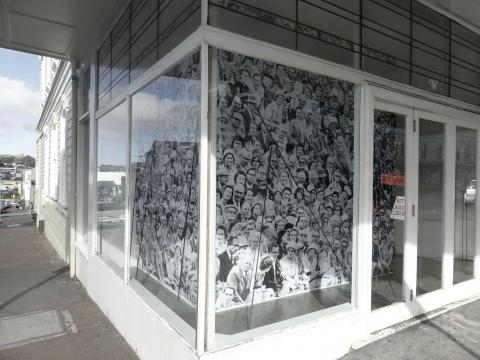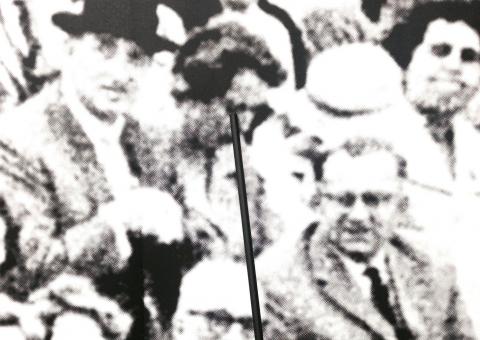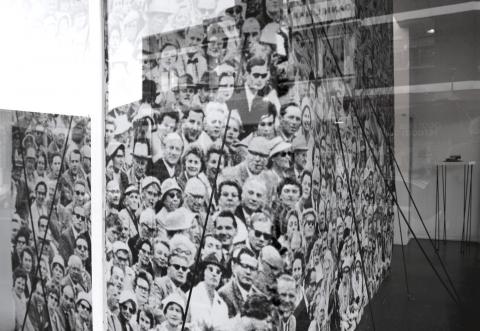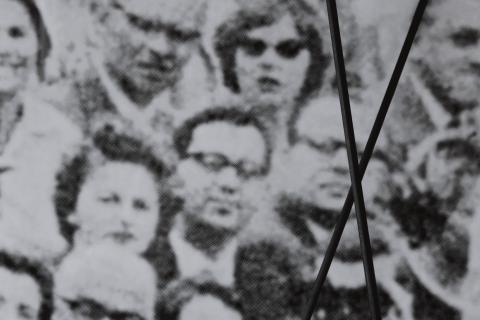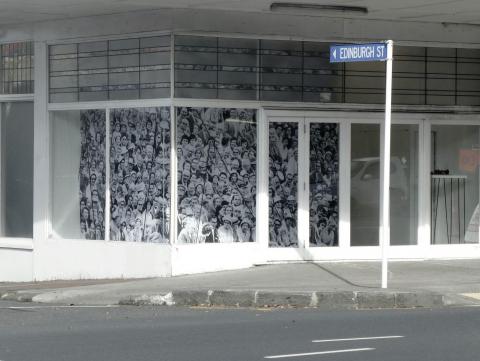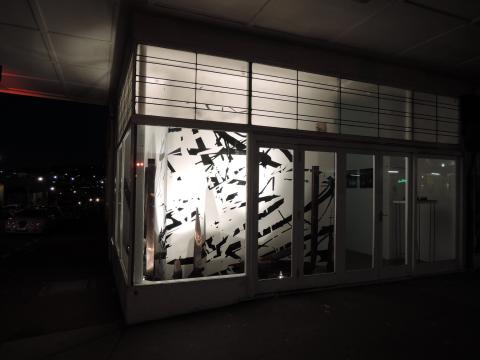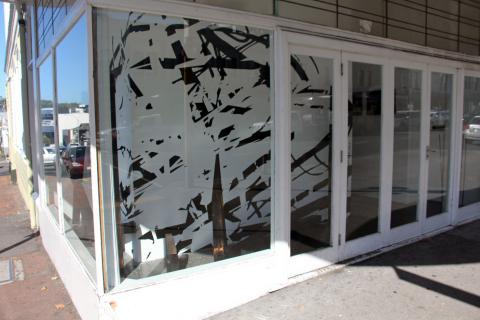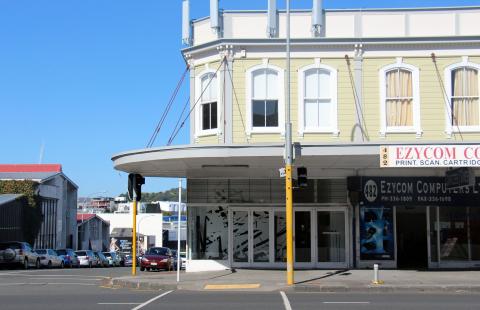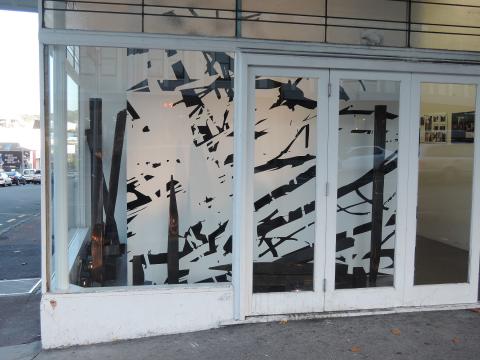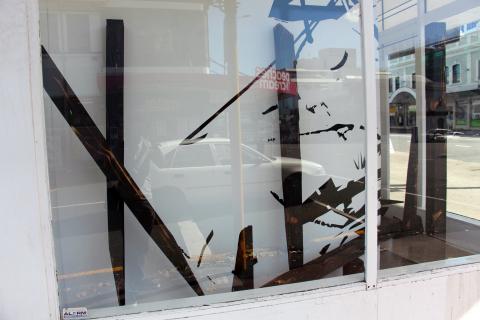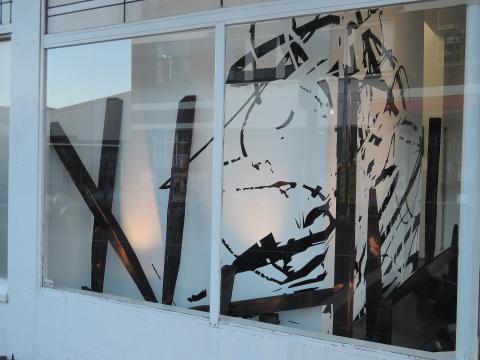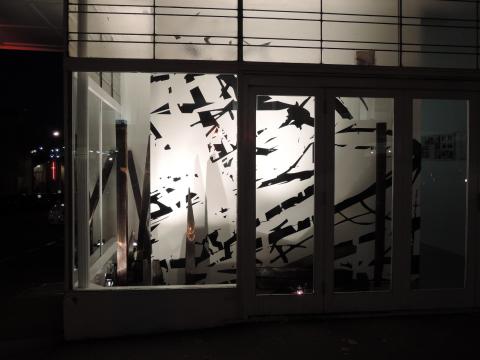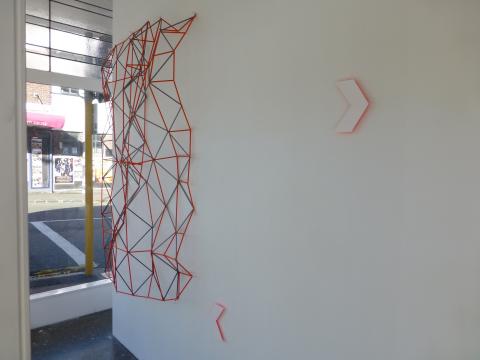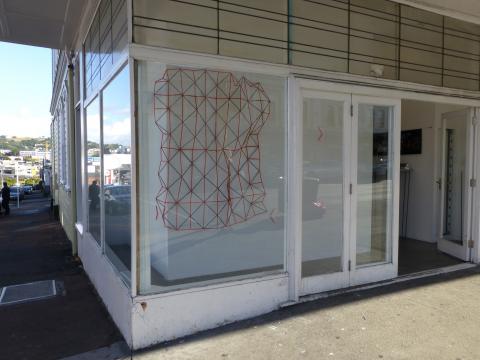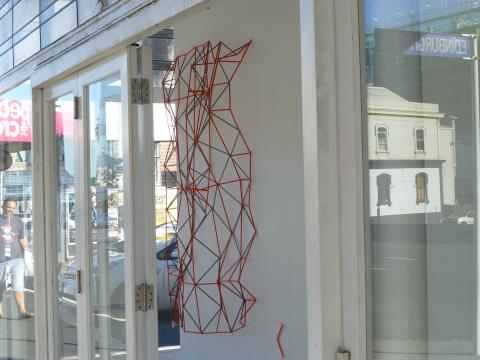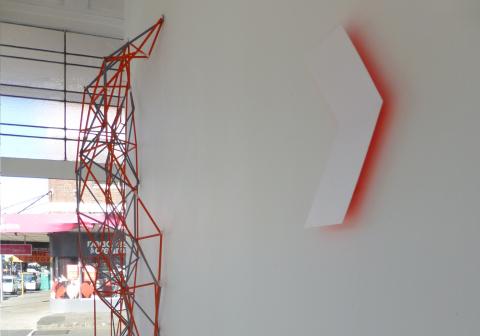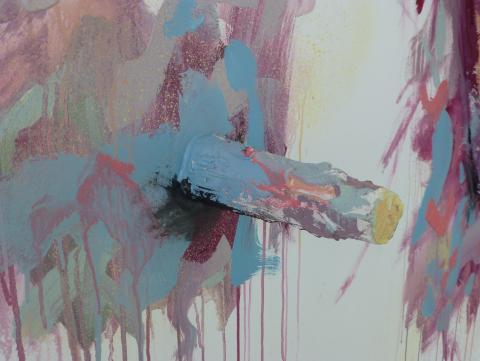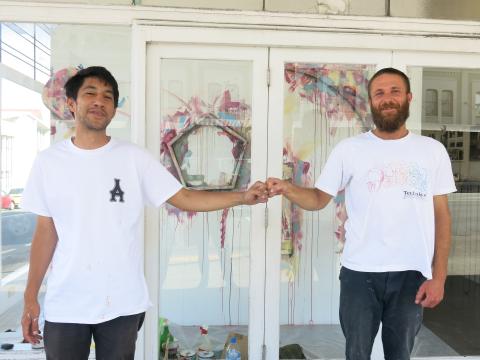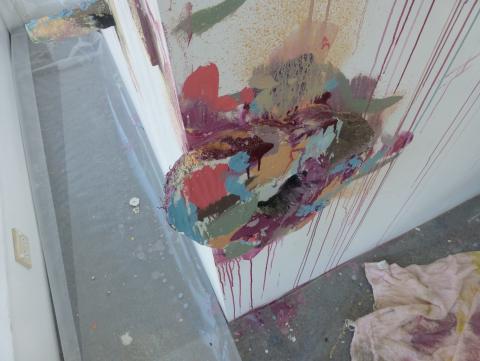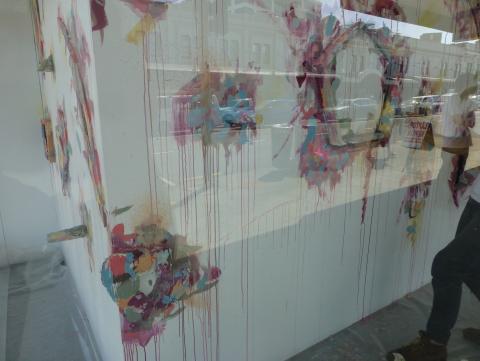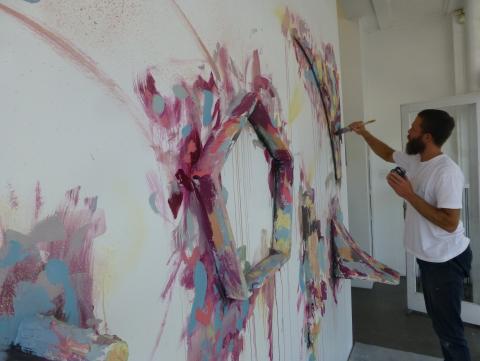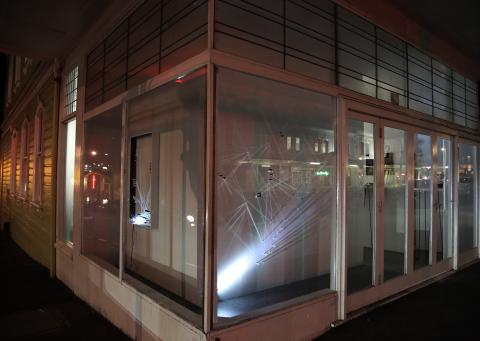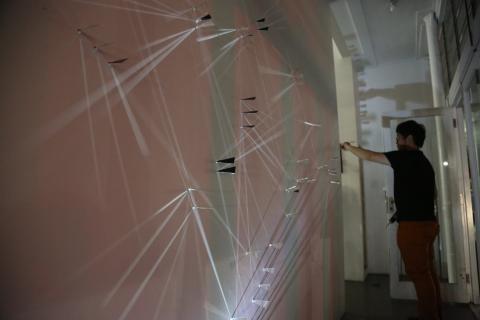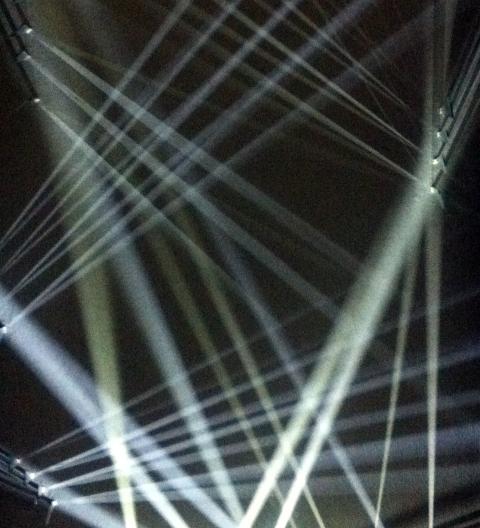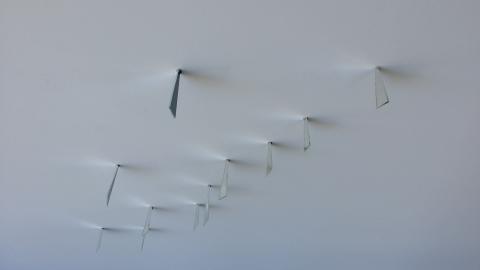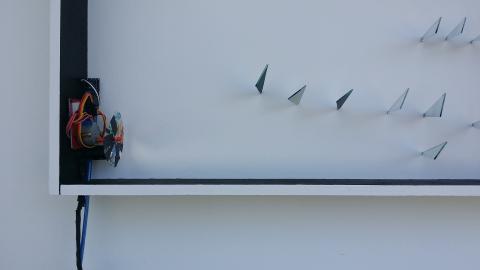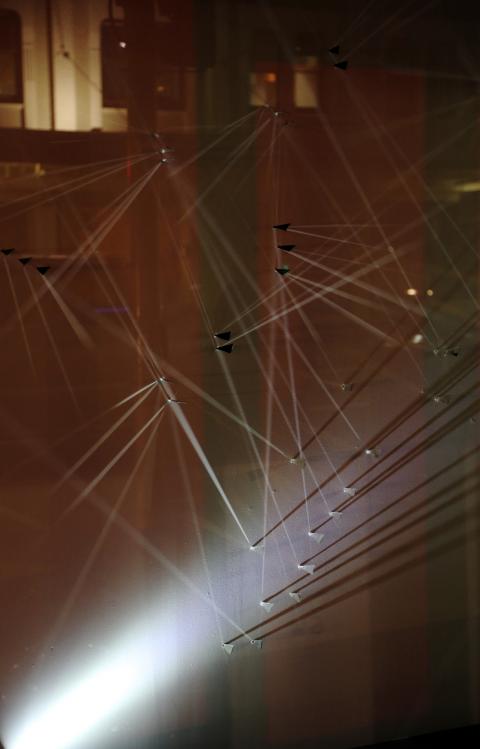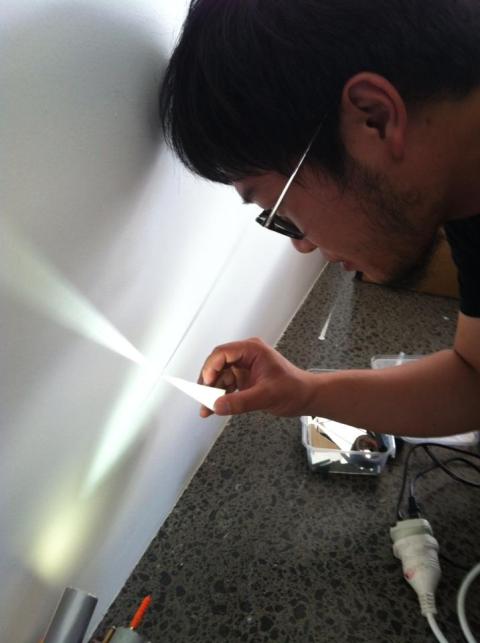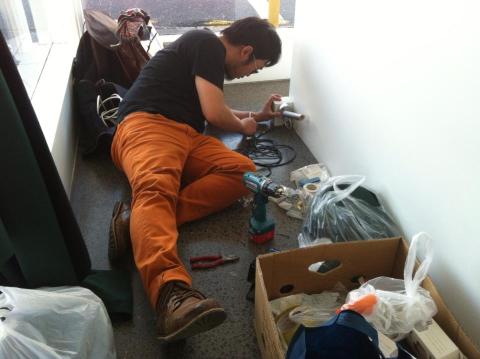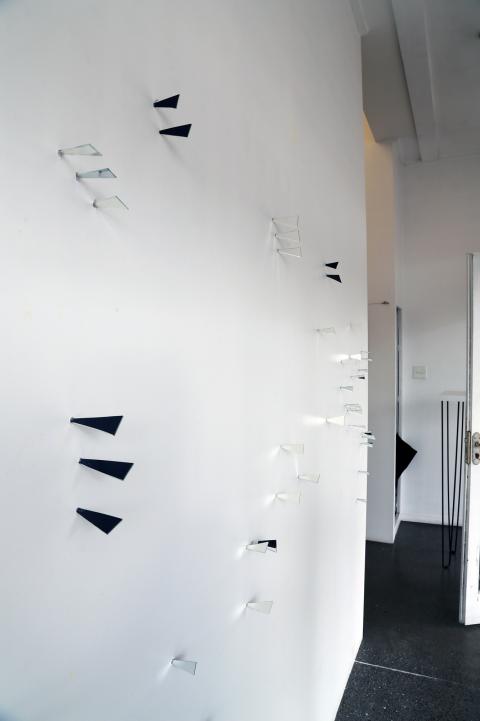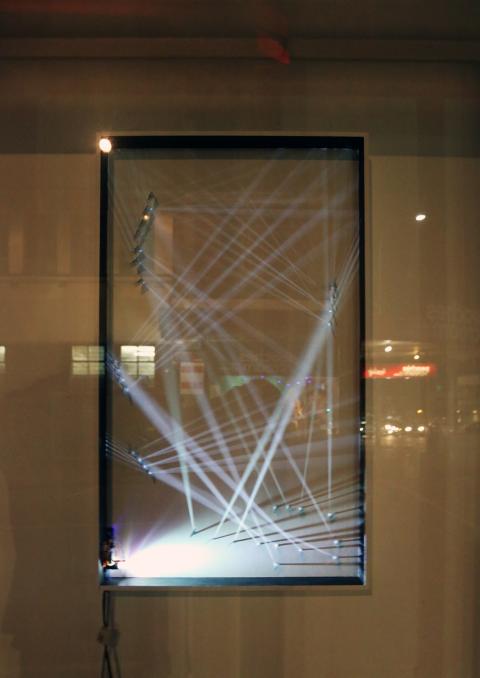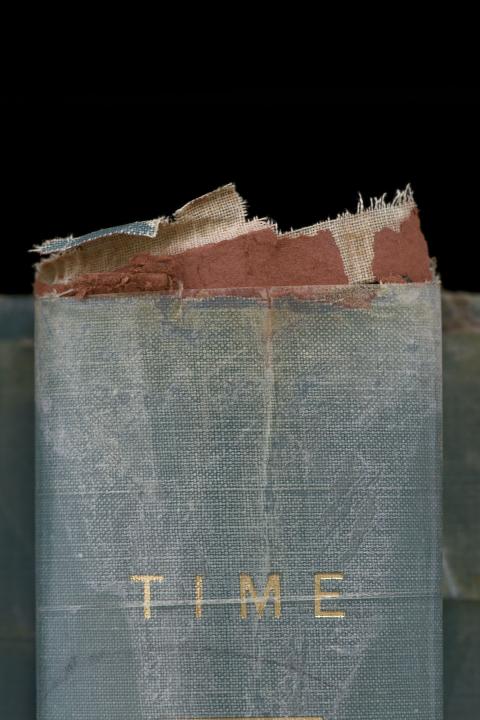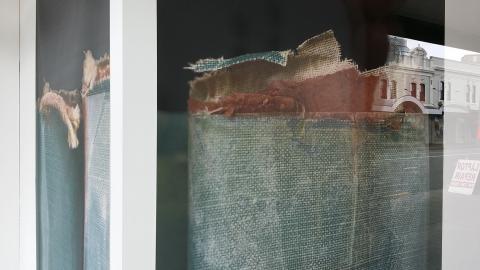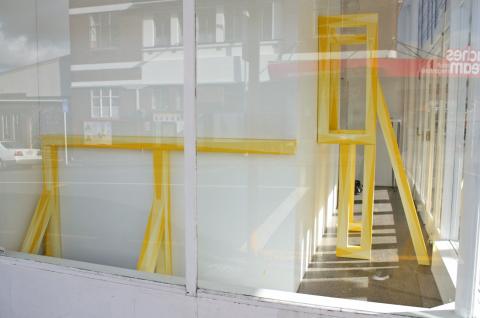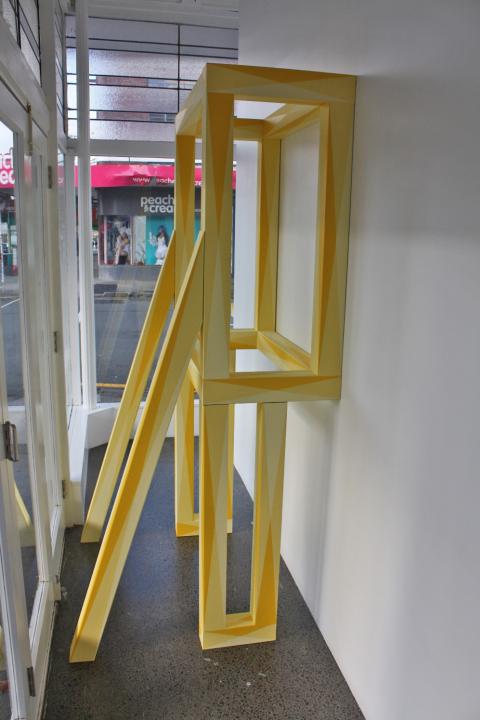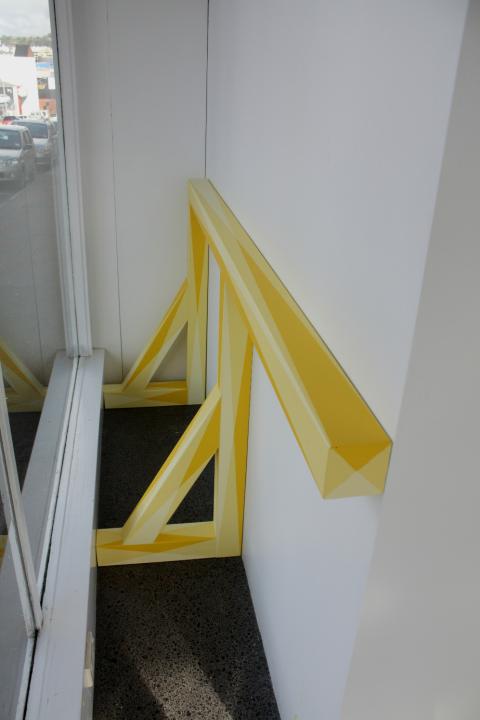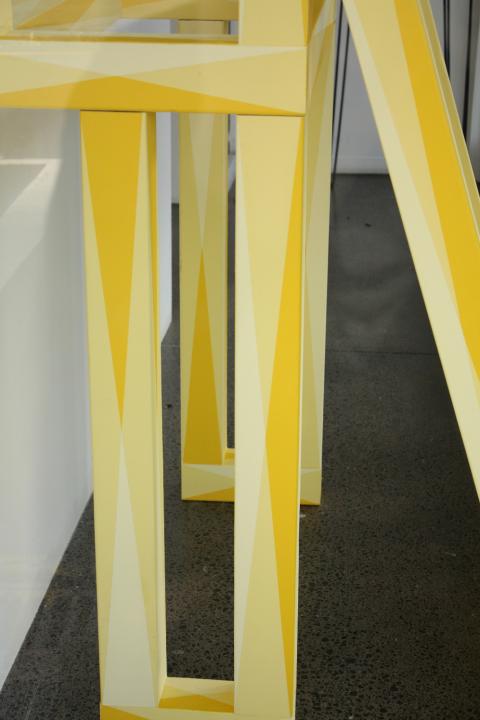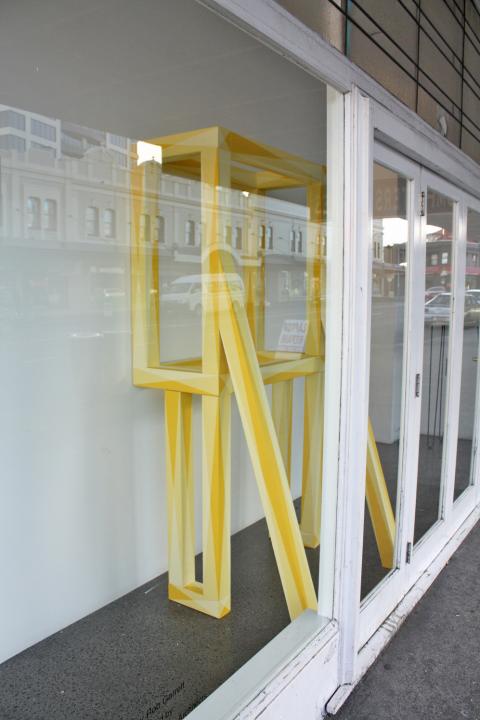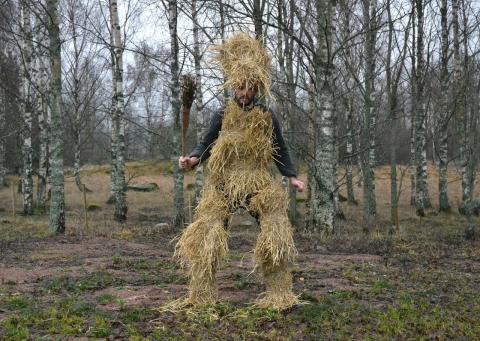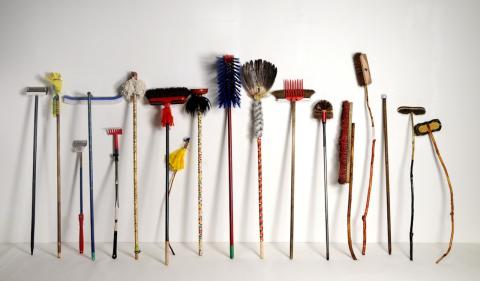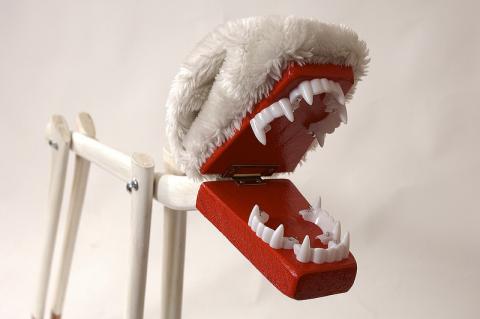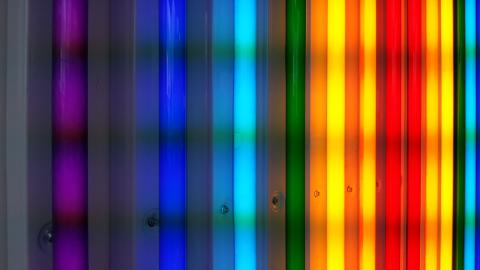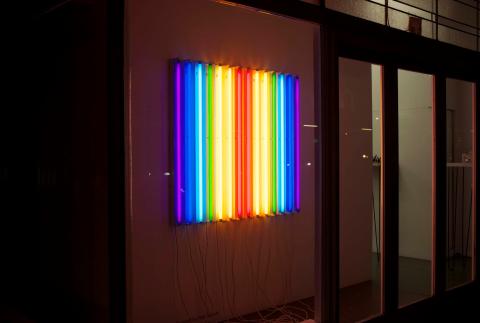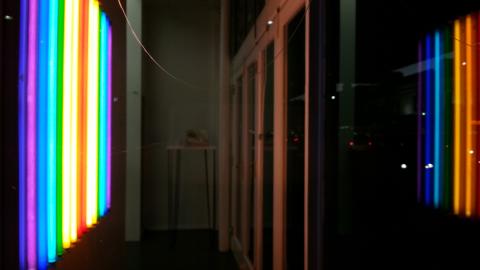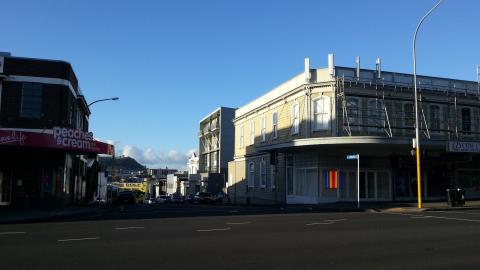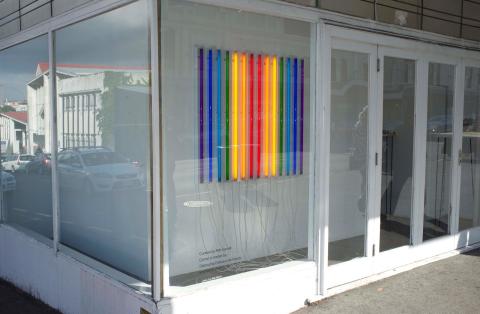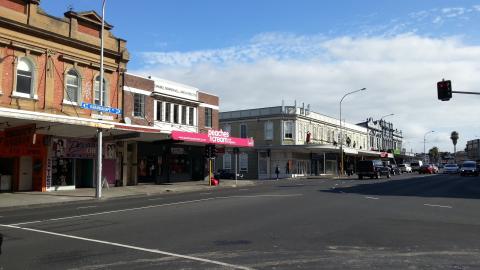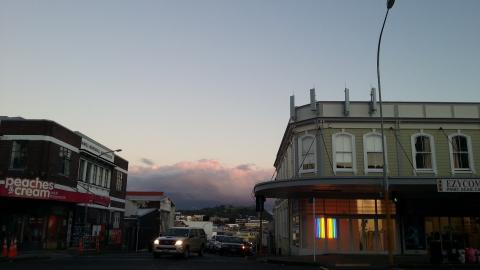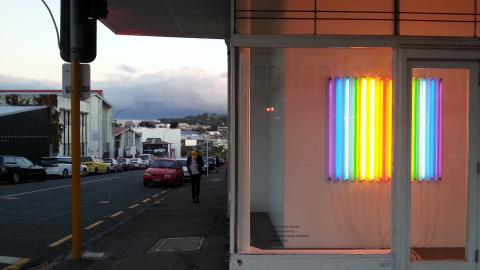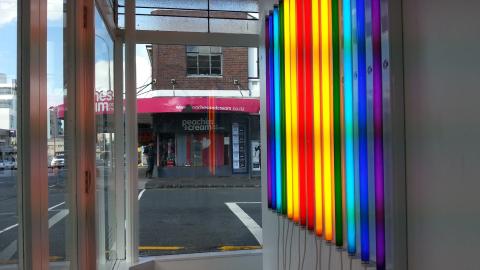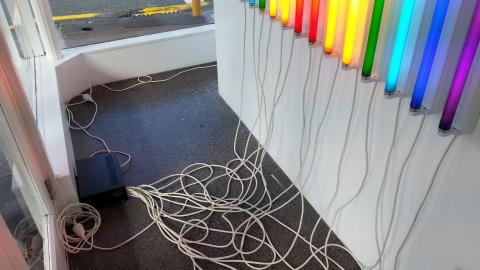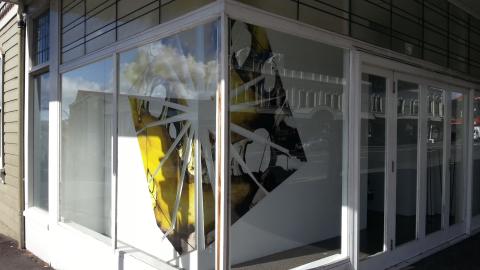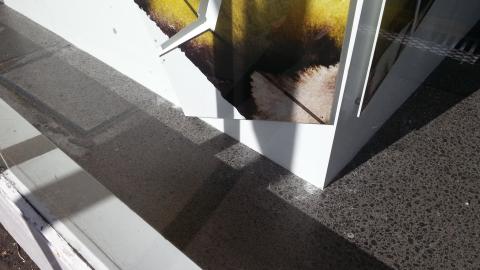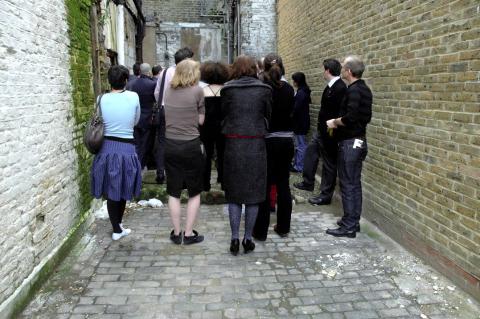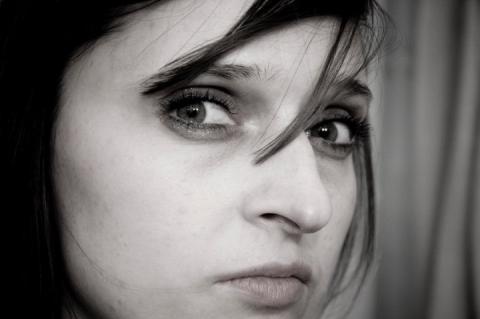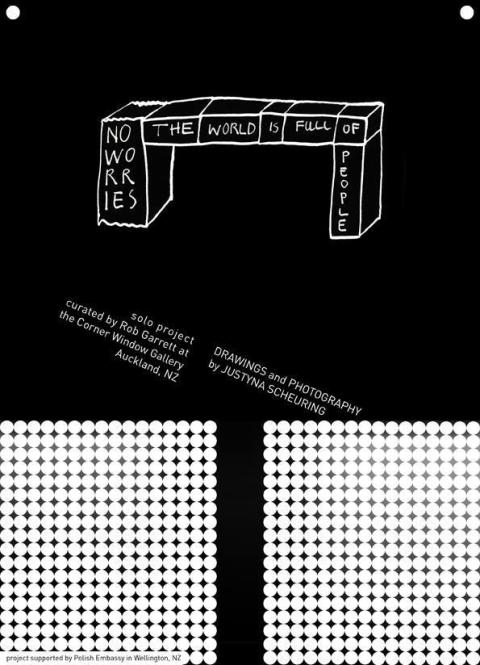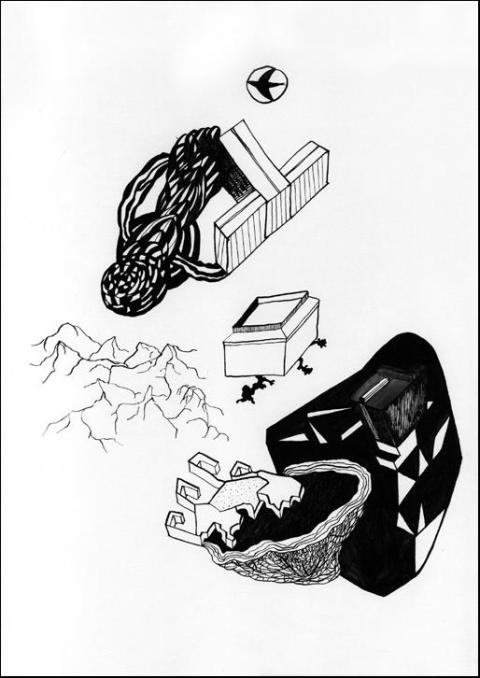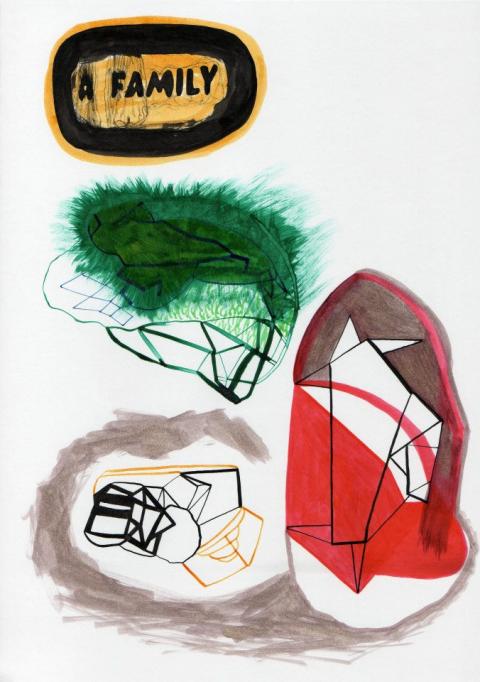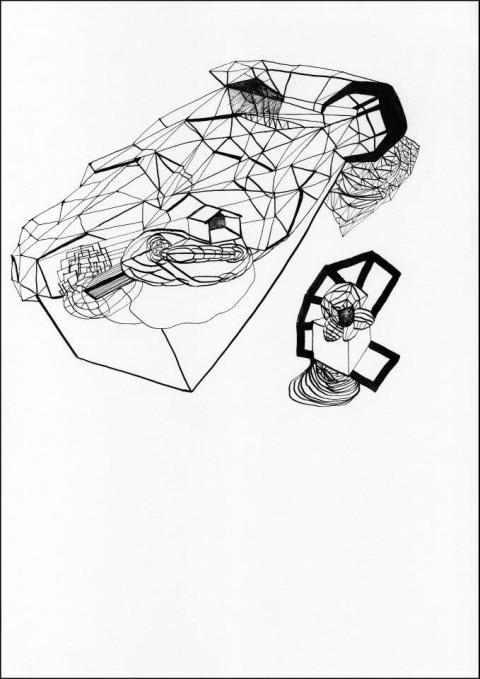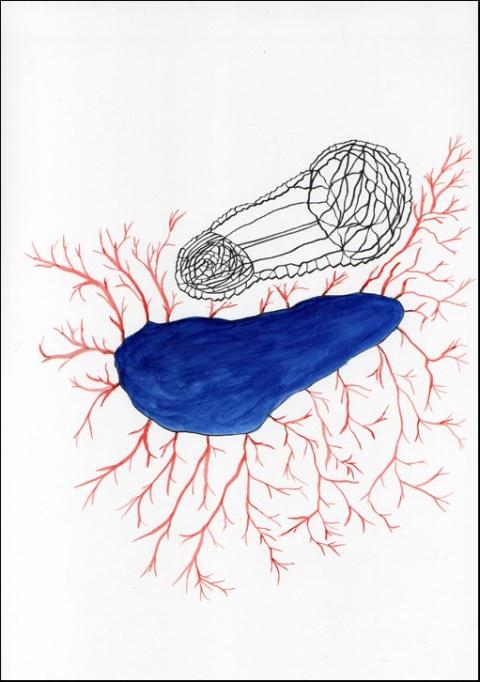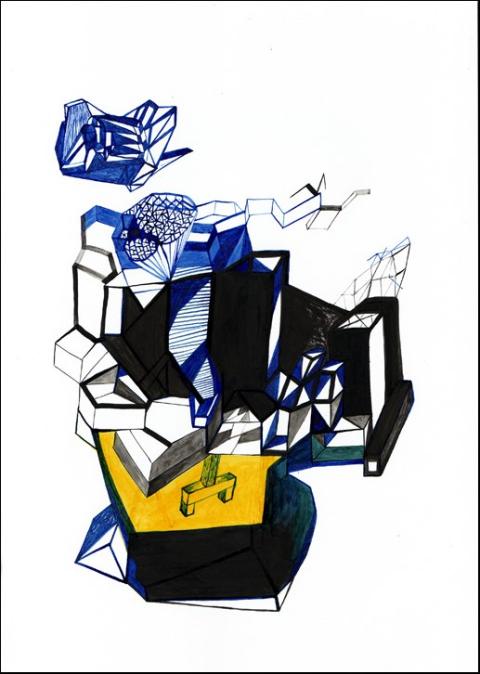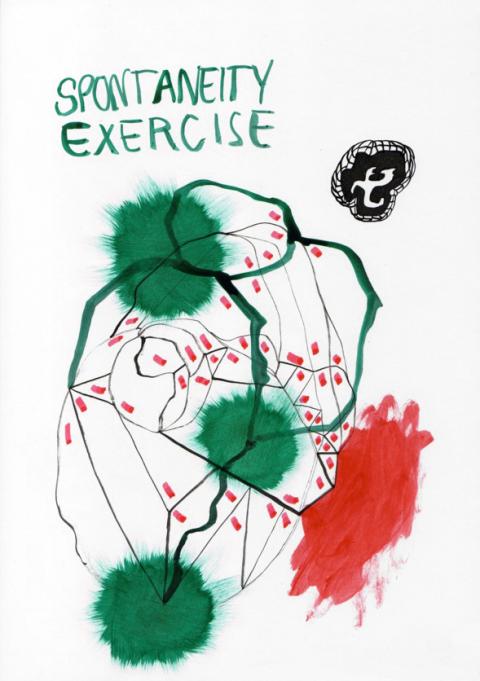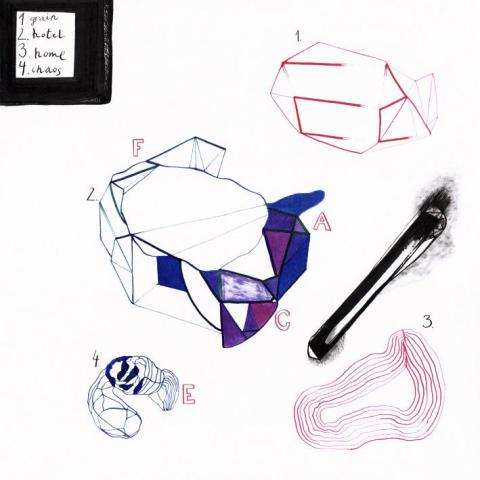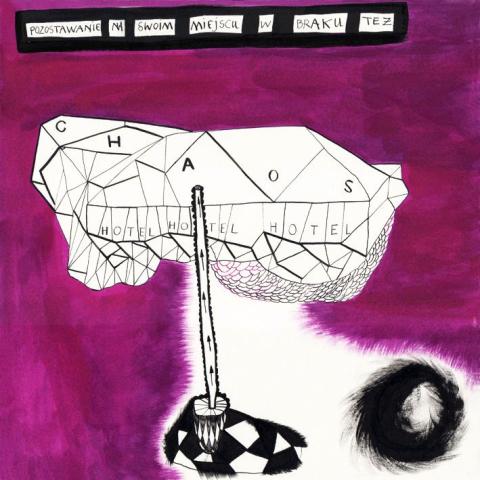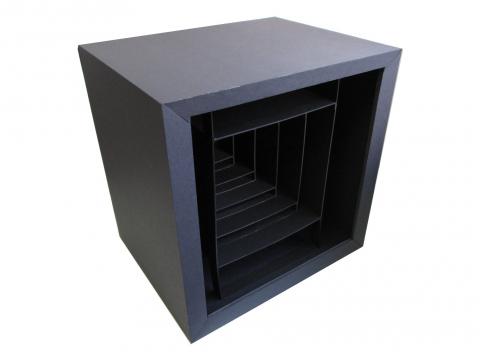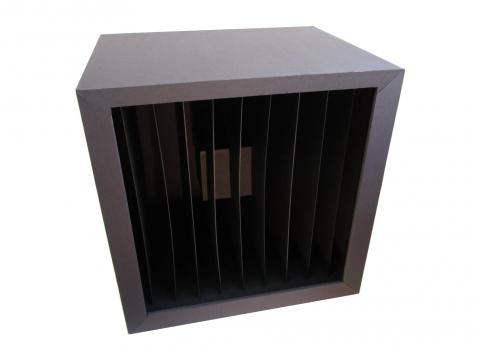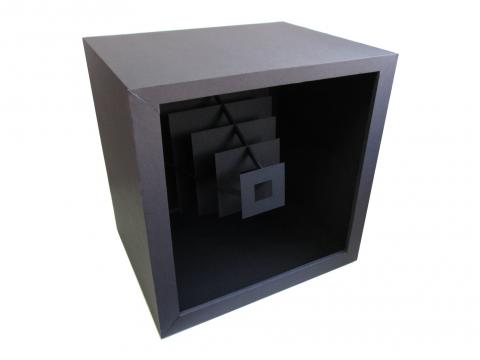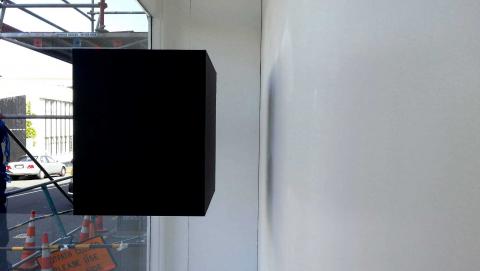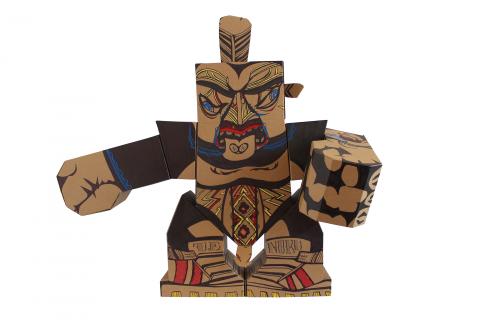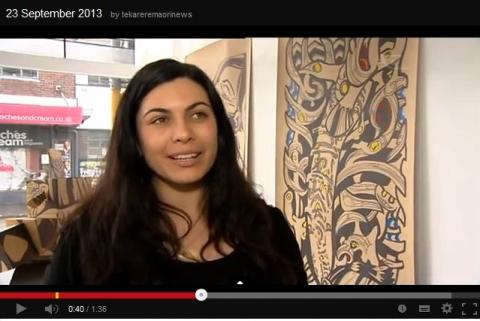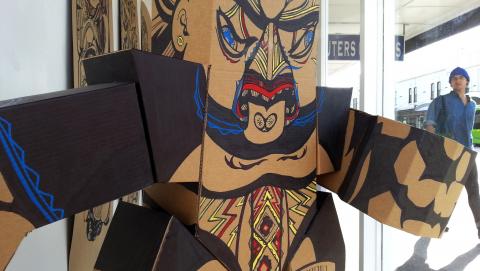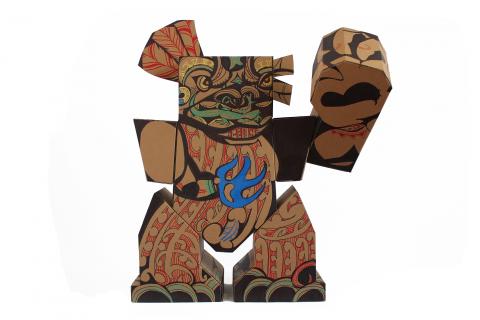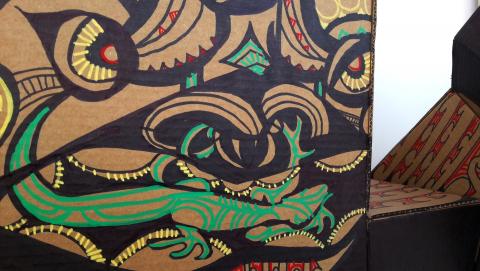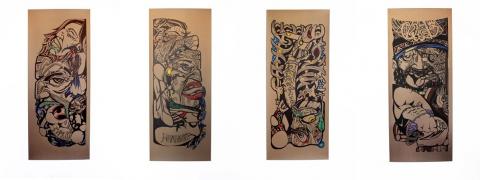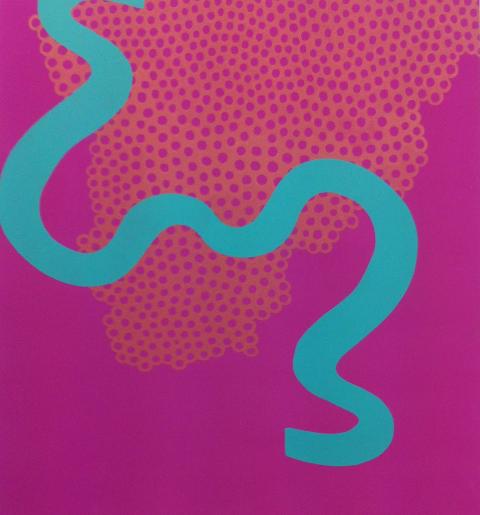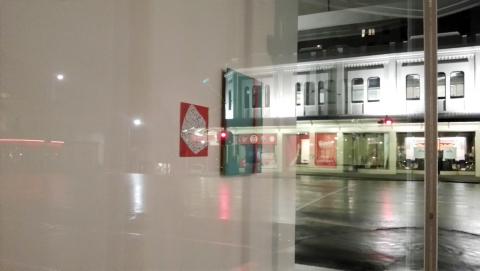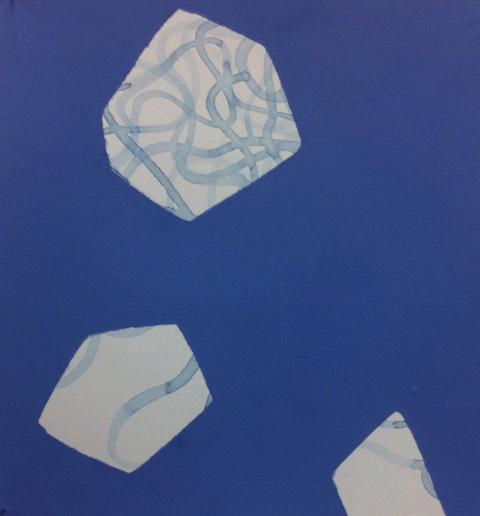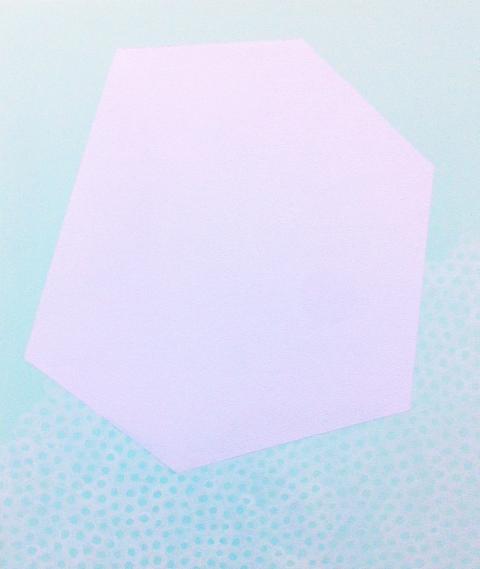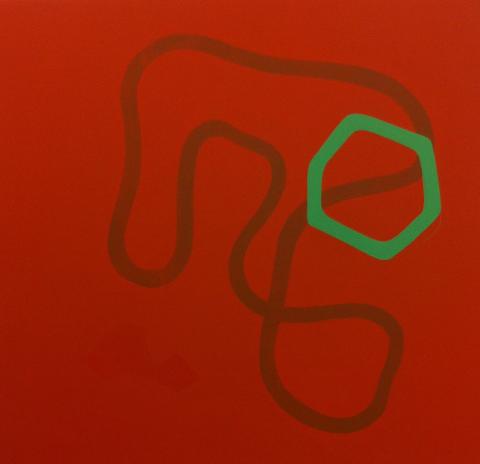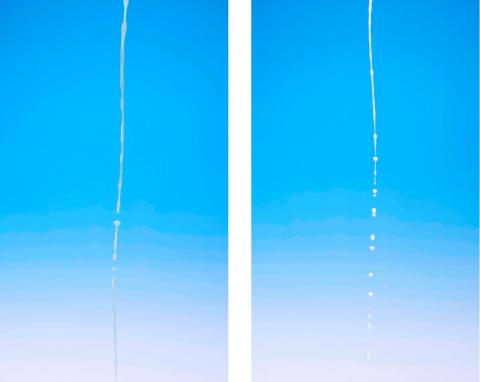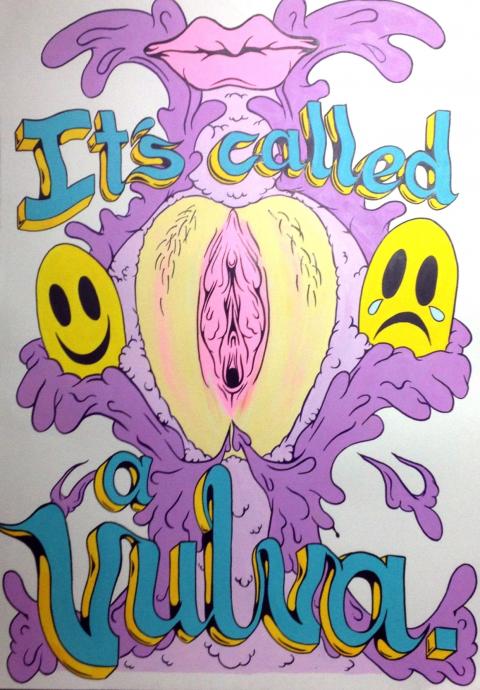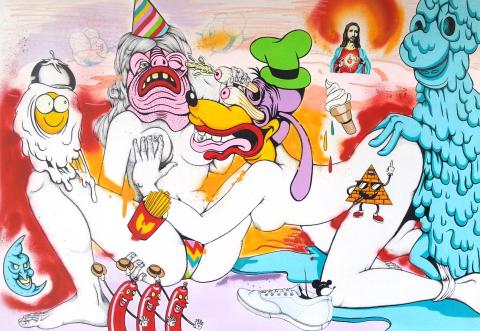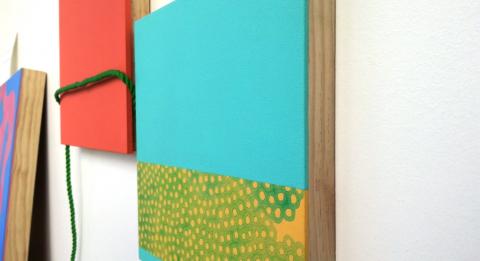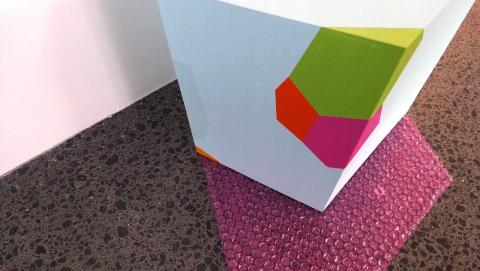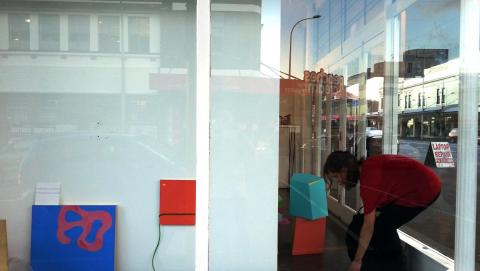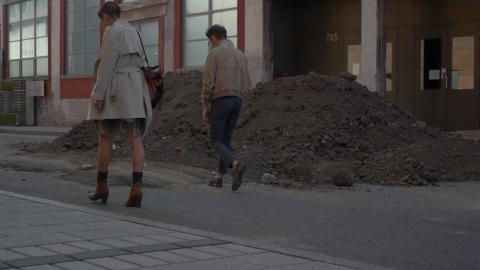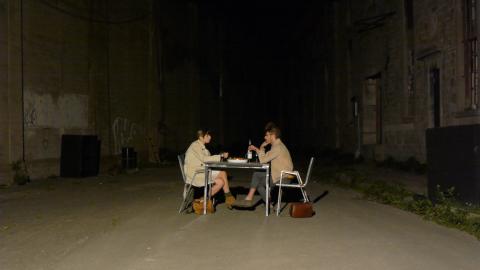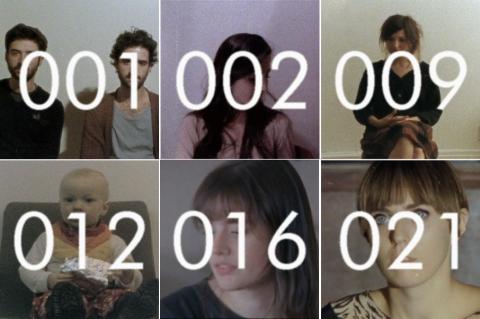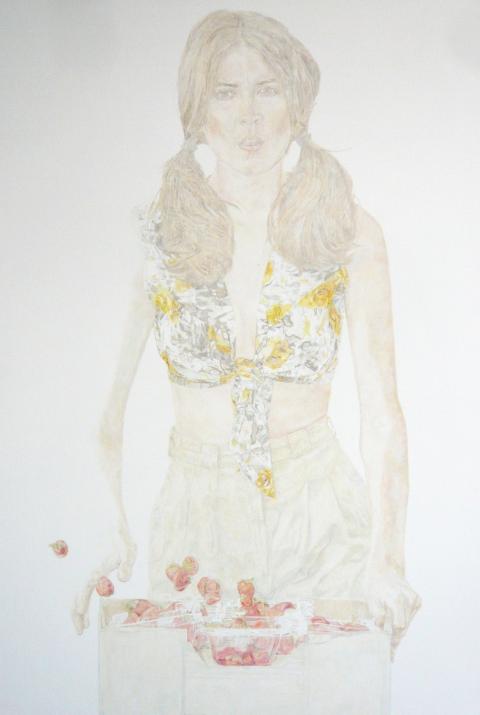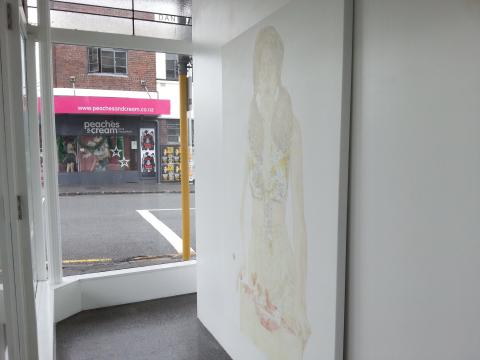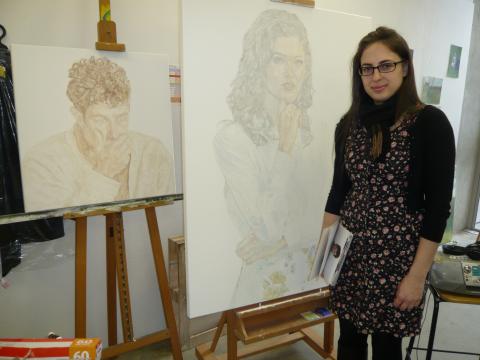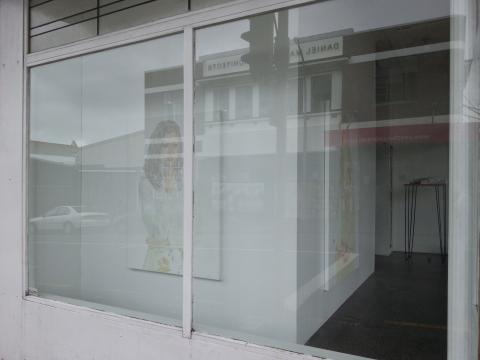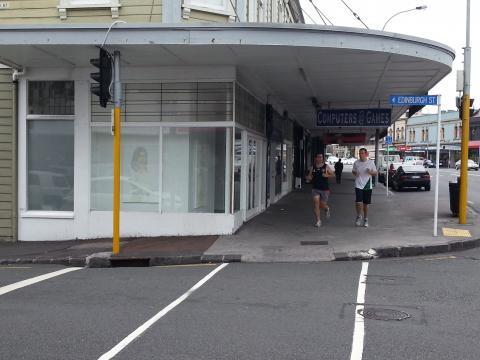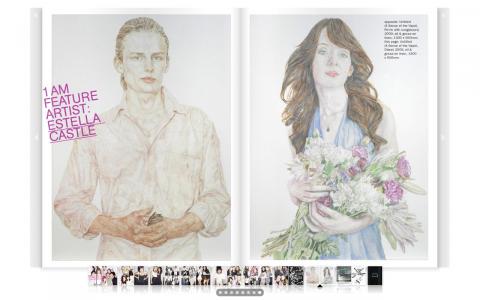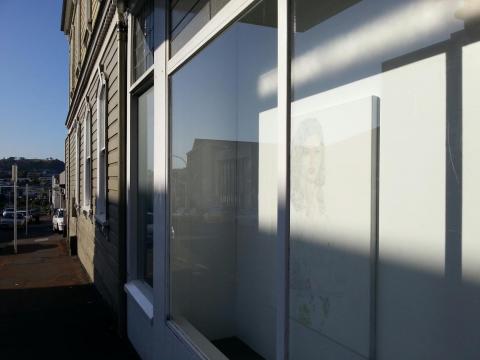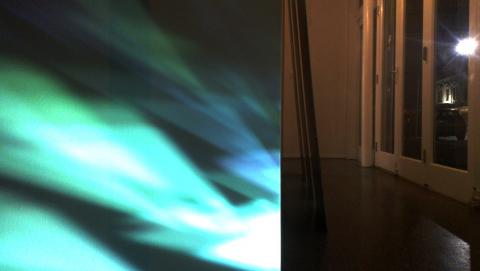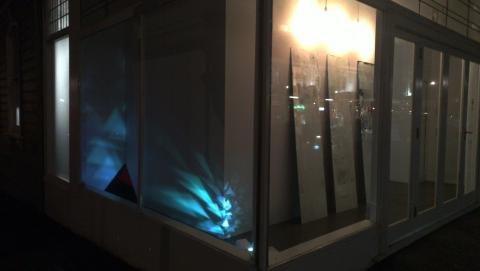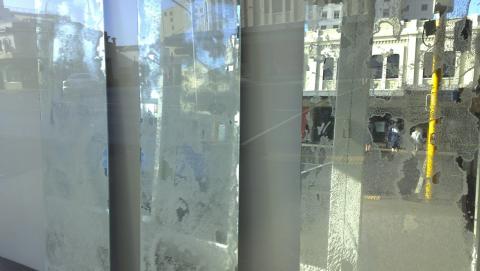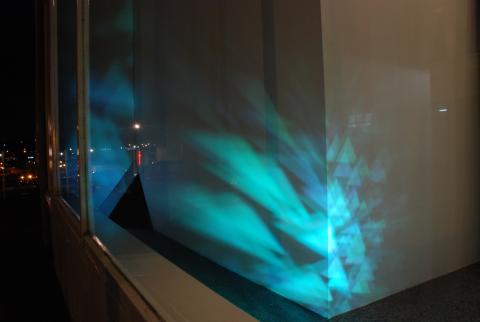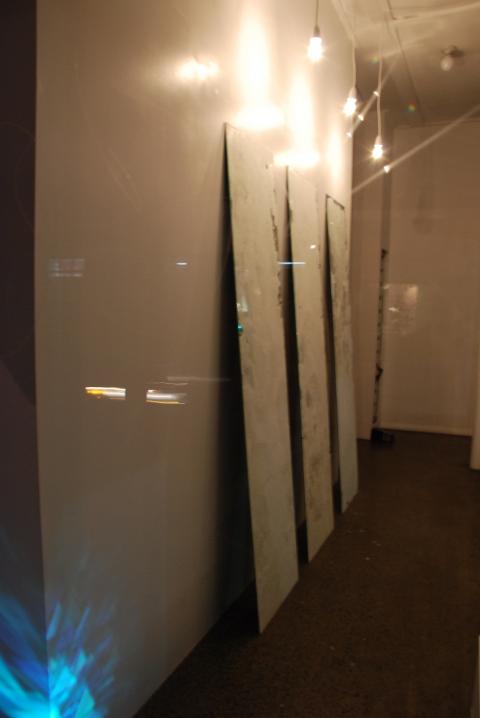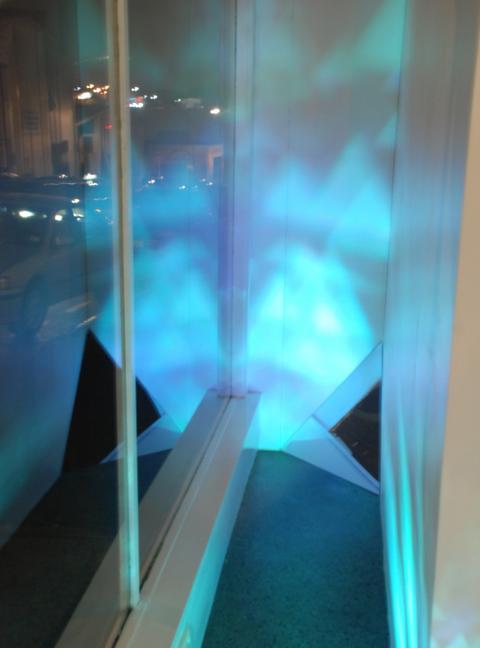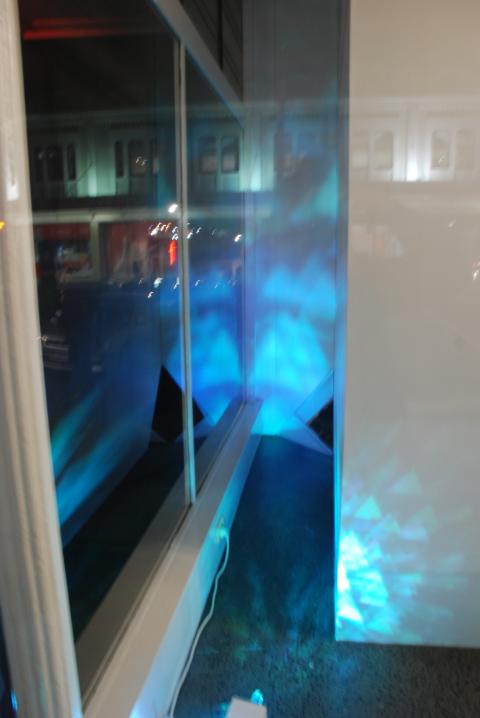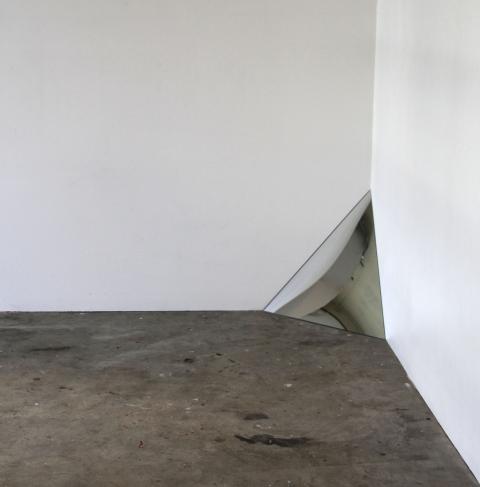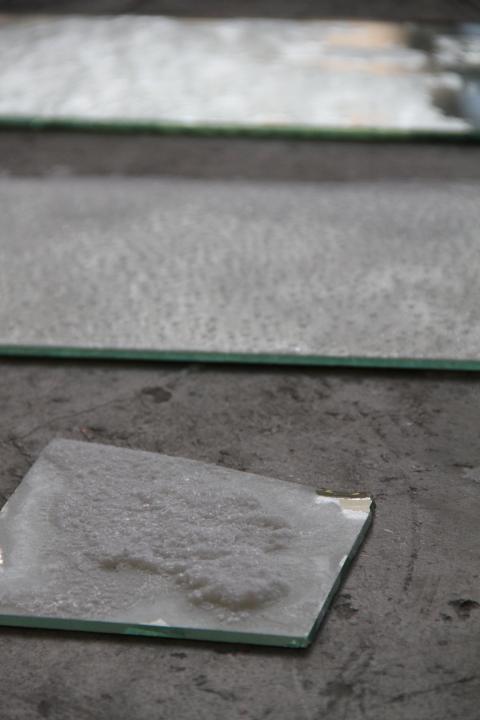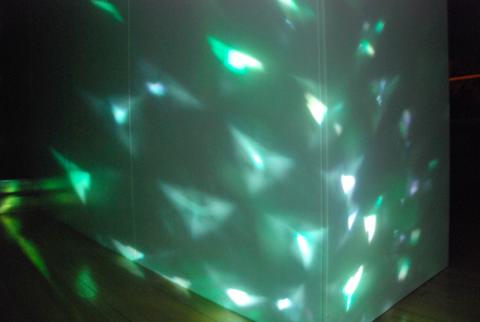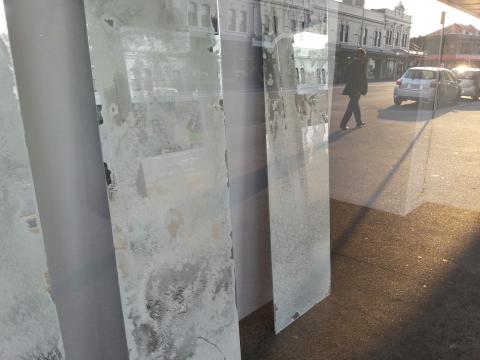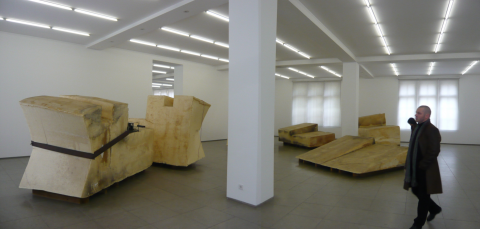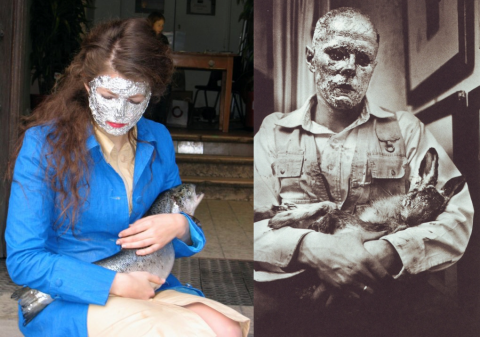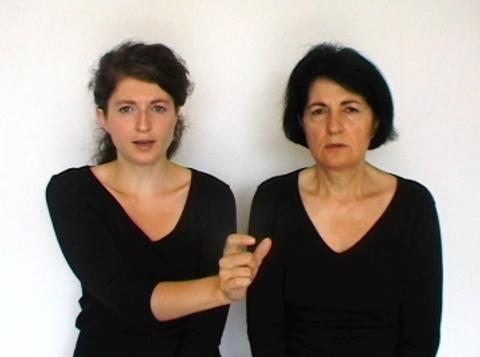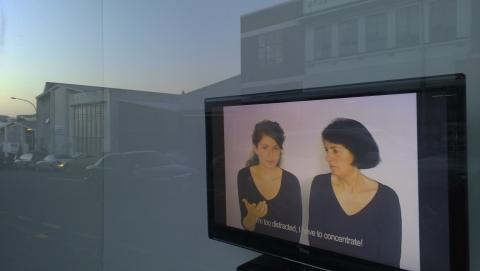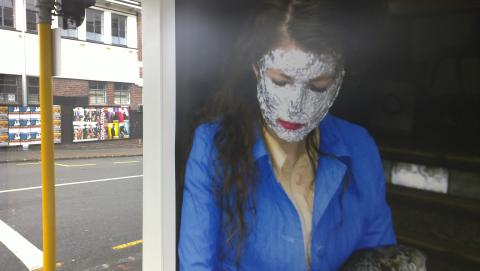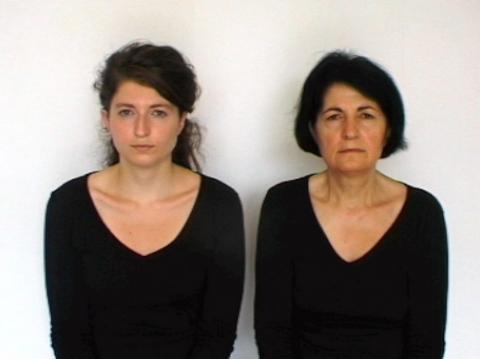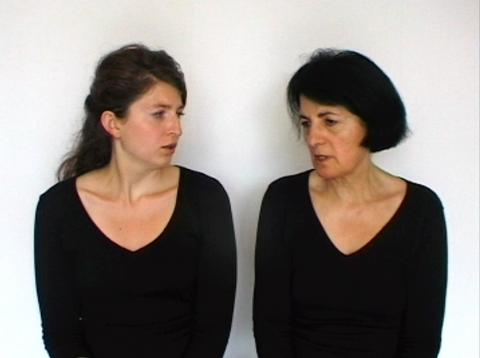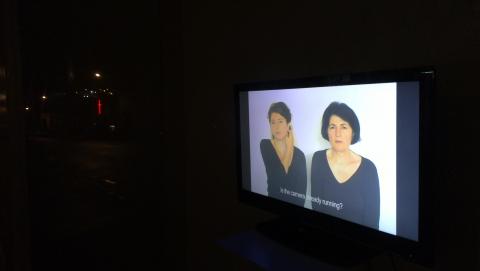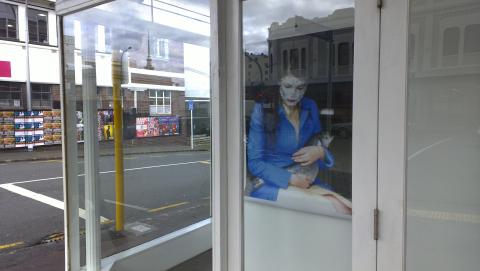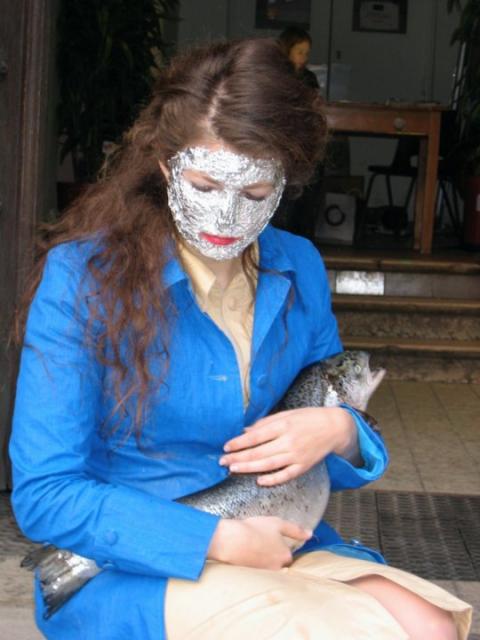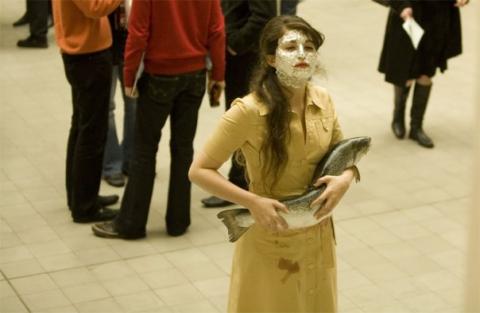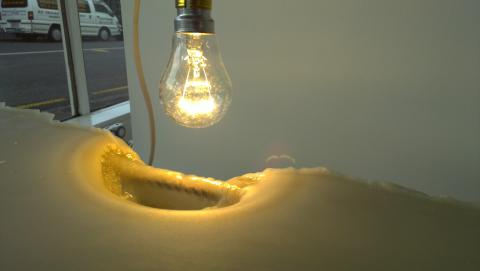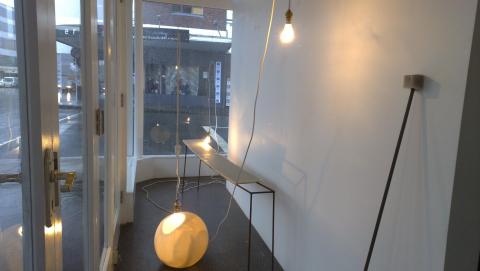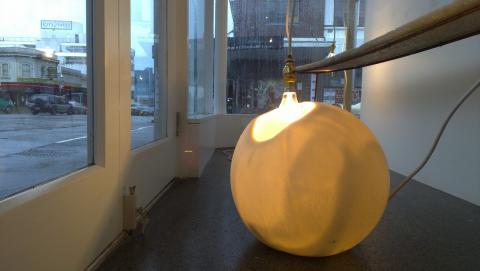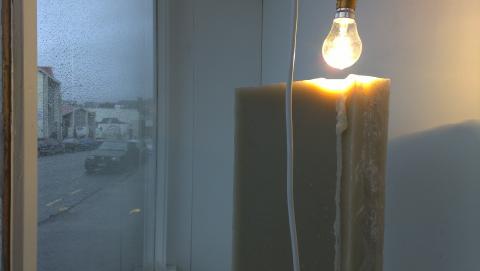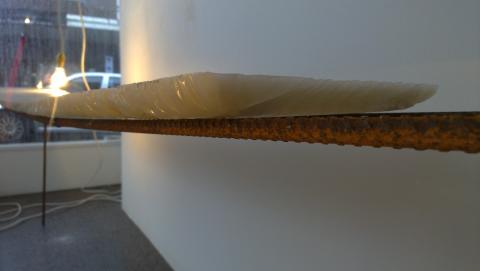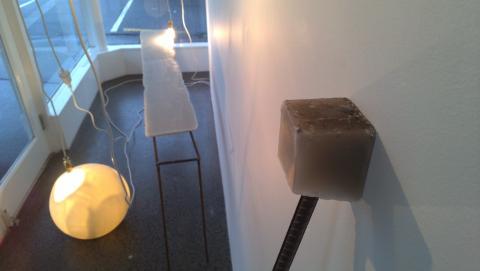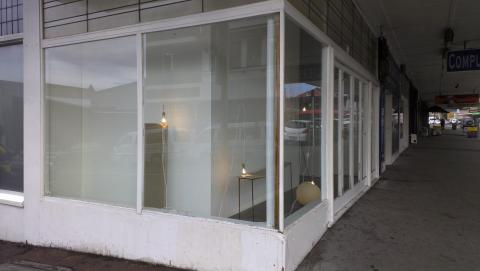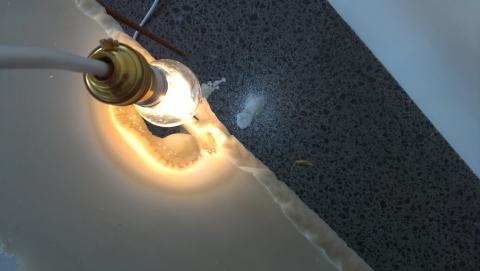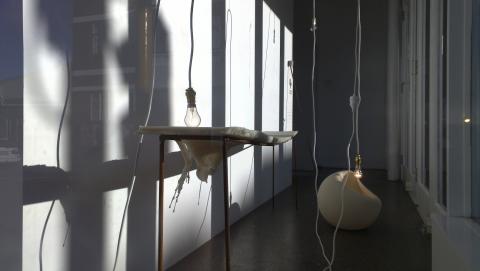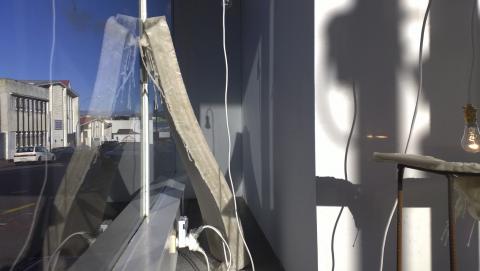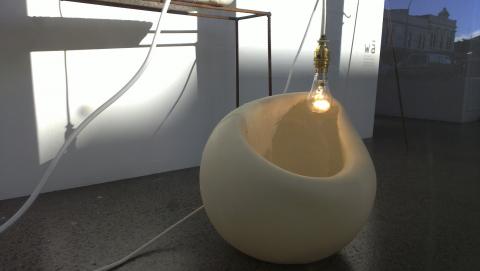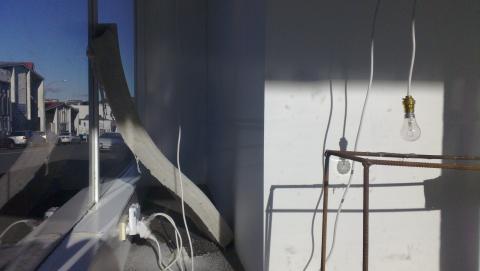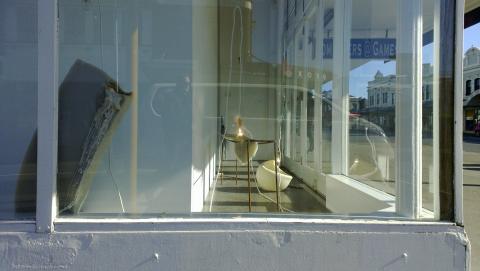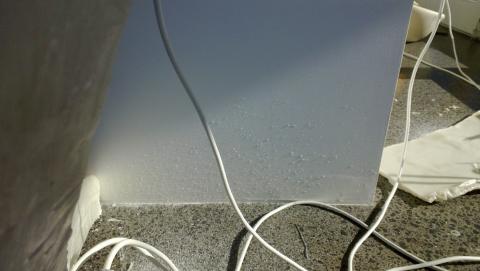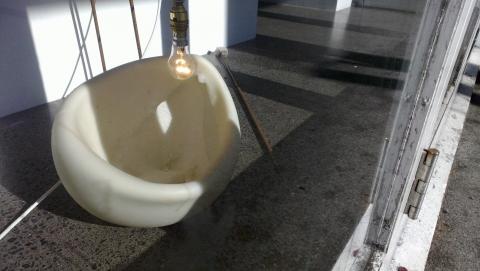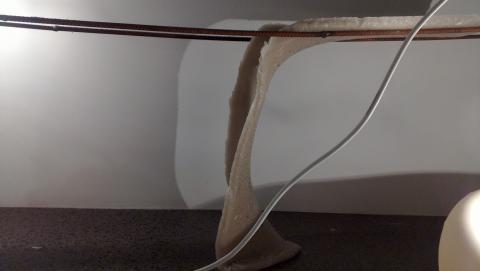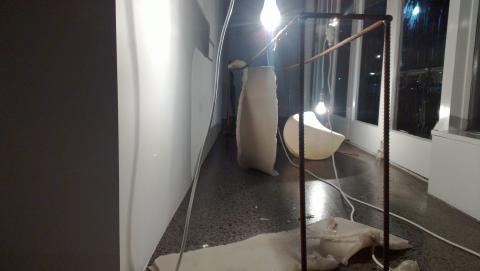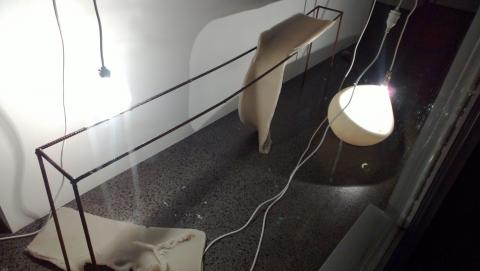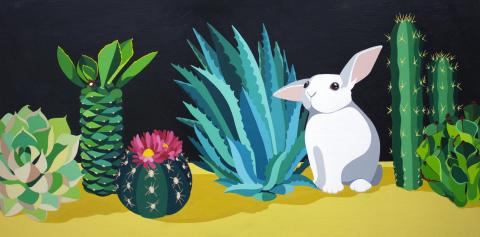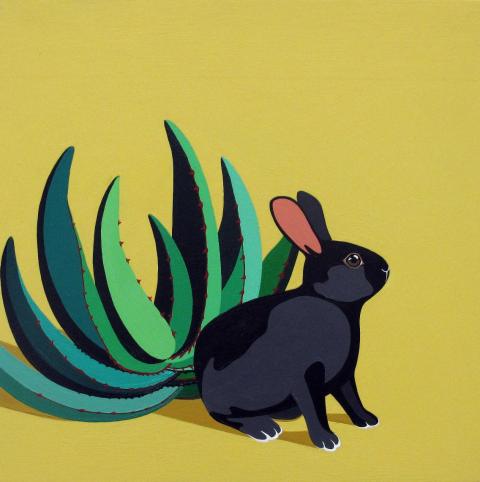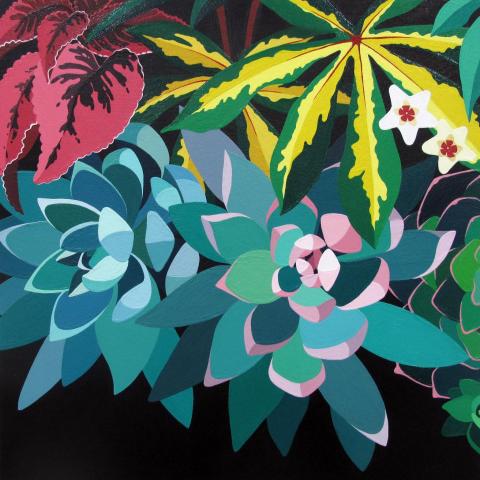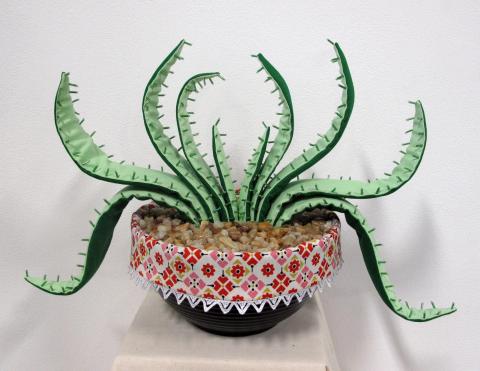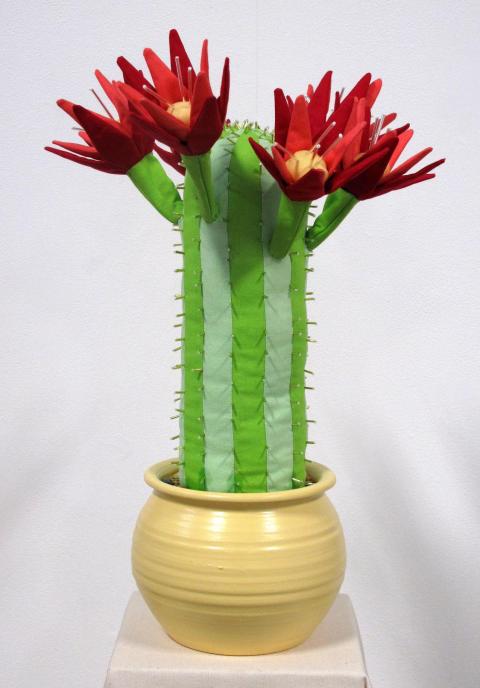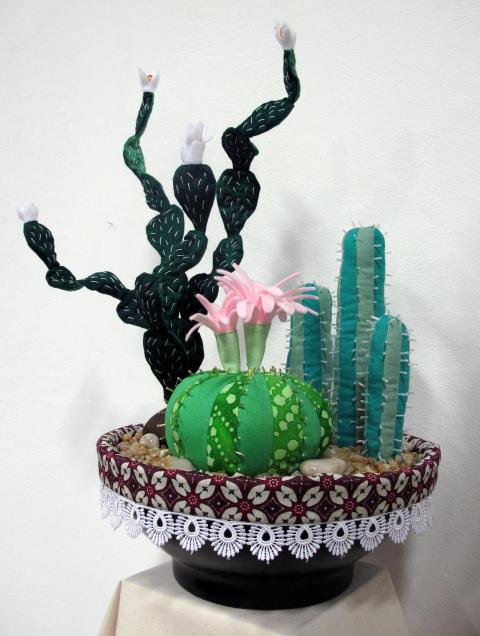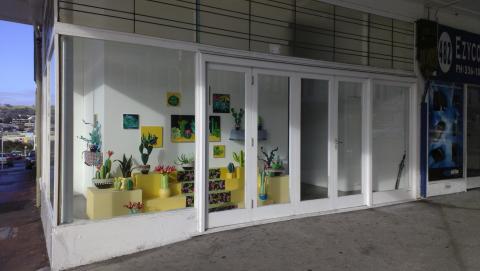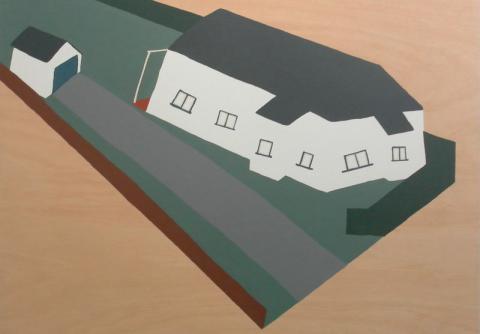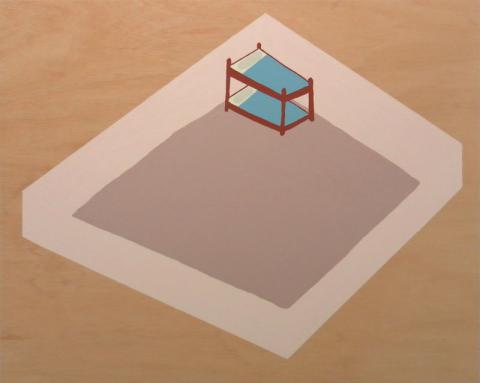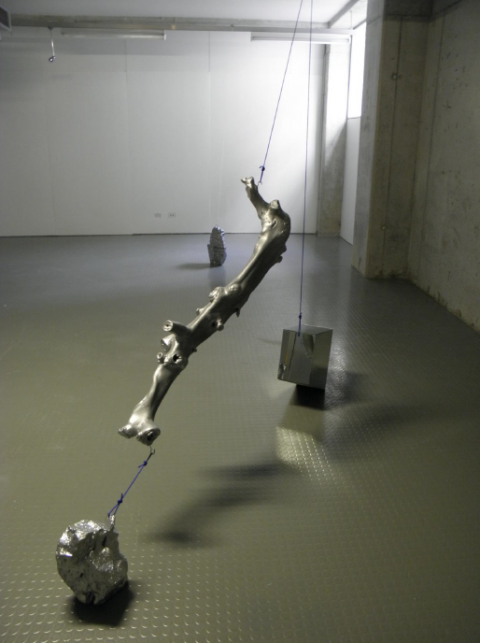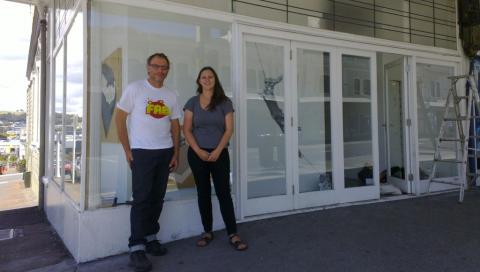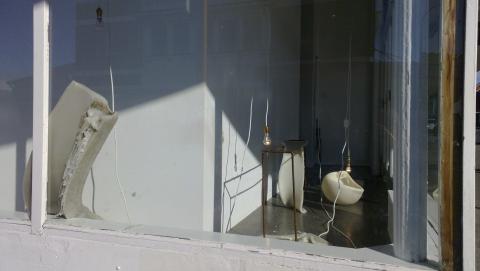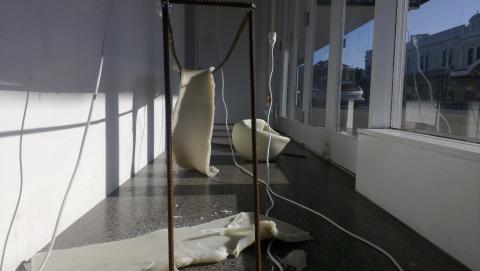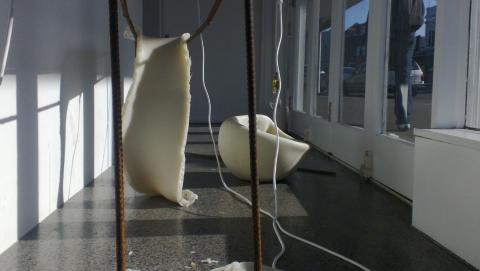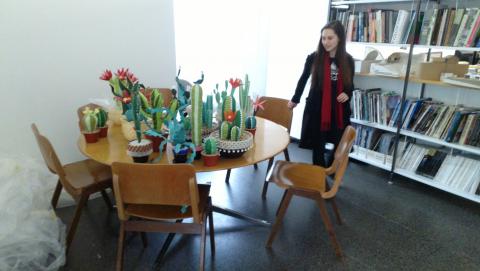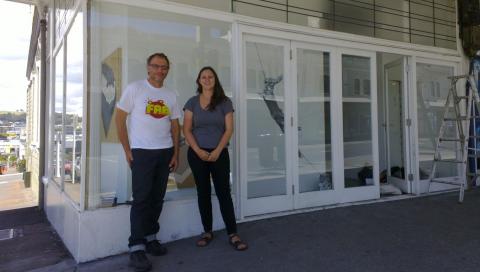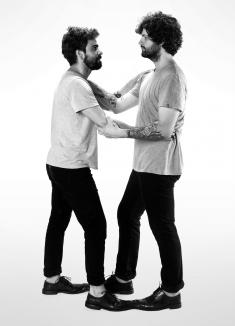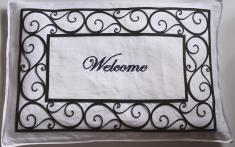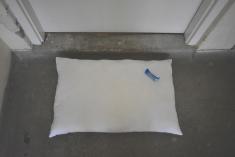Corner Window Gallery
Projects 2012 to 2018
About Corner Window Gallery
Corner Window Gallery (from February 2012 to September 2018) was a non-commercial project space at the corner of Karangahape Road and Edinburgh Street in Auckland, with a programme of emergent practices by New Zealand and overseas artists, designers and architects. As a public-facing, street-level window space, the gallery was 'open' to the public free of charge 24/7. The programme was curated by Rob Garrett and hosted by PAC - Paterson Architecture Collective and Athfield Architects. During its 7 years, Corner Window Gallery selected artists by direct invitation and through an international Open Call. In 2016 the gallery was selected to participate in the "id.new talents International Day of New Talents of Art" for its ongoing support of young artists; and it was a regular participant in Artweek Auckland and Auckland's White Night Festival.
Corner Window Gallery closed on 14 September 2018. Because our kind architect hosts moved their offices to a new location within Auckland, the Corner exhibition space was no longer available from September 2018. After nearly 7 full years of programming and 45 projects, I wish to thank all the amazing artists, volunteers, curators and supporters (such as the K Road Business Association and Artweek Auckland) who have MADE the program and also our SUPER KIND hosts who donated the use of the space to me and gave me a completely free hand to curate the program as I wished. Brilliant. Amazing. Thank you to EVERYONE!!
Project 045 (Final Project): Colleen Altagracia (NZ)
The Slide (2018)
An installation of soft sculptures (embroidery on linen, cut felt) and photographs
Dimensions variable
9 August – 14 September 2018
Artist’s statement:
The catalyst for the project The Slide was several evictions that had taken place in a social housing apartment block I live in. Also, an observation that front doors would sometimes have a doormat with a welcome message on it. In times of trouble for the occupant, the doormat would be removed from view only to reappear later when things had calmed down.
The works at Corner Window Gallery include some of the photographs I took for the project as well as some soft sculptures. The photographs were taken after a series of evictions: occupants either left or were forcibly removed, for others I wondered who would be next. In the place of the missing/removed doormat I placed a bed pillow with a piece of chocolate on the floor in front of each apartment door. I also wondered what would happen to the former tenants – what their options were when displaced and if they’d be out on the street.
The three soft sculptures in the exhibition were made as floor works and were developed from the photographs and my observations of the tenants’ doormats. These sculptures show a juxtaposition and shift of associated values between a front doormat and a bed pillow. Words that were on the doormats were taken and embroidered onto the pillows using cross-stitch. Each soft sculpture has a different word embroidered on it: ‘Welcome Home,’ ‘Home Sweet Home’ and ‘Welcome.’
The drawings I made as part of The Slide project are also being exhibited this year in Auckland, at Studio One Toi Tu, from 27 September to 27 October 2018.
About the artist:
Colleen Altagracia is an emerging multi-media artist based in Auckland, New Zealand. She completed her BVA at Manukau School of Visual Arts in 2003 and has an MFA at Elam School of Fine Arts at the University of Auckland (2008).
Since graduation her interests have been exploring seemingly inconsequently actions and movements, to reveal their processes as well as what some of these impacts could possibly be. Particularly those actions associated with material that are ephemeral in nature as well as having a perceived notion of having no great importance and being valueless, combined with overlooked spaces or those taken for granted to reveal possible elements of co-existence. By embracing the marginal, the perverse, the excluded the invisible becomes visible. The relationship of the impact of the action and movement being carried out also becomes apparent. The impact could have an immediate effect or perhaps consequences for the future. The impact could be felt between the action itself, individual human, the environment or even humanity. Materials used to date have included spherical shapes such as the egg and bubble, handwritten correspondence, facial tissue, foam and pockets. Some of her latter works (sculpture/moving image) were shown in an installation at the Blue Oyster Gallery, Dunedin (2011) – The Fullness of Empty Pockets – which included a live public performance at the Dunedin Fringe Festival (and the artist was the recipient of the Festival’s best original concept award).
Project 044: Fauze Hassen (BR-NZ)
Adiós Fax Machine, So Long Mankind (2018)
Paintings
Dimensions variable
14 June – 9 August 2018
Artist’s statement
Adiós Fax Machine, So Long Mankind deals with the idea of making self-portraits during times of anger and despair; and is based on memories of a distant childhood in the outskirts of a big city, played out in times of virtual friends and turmoil. Overall, my art practice gives form to the invisible chaos and the marginal aspects that go unnoticed by individuals today. The subjects are shaped by childhood memories and fuelled with a restless countercultural appetite. I like to think of my practice as a visual extension of my poetry work, and the main channel between the outer world and my voice as an artist. My compositions are constantly seeking for a lack of stillness, supported by a mostly primitive colour palette and an intrepid use of abstract mark making. I also enjoy exploring the duality which text itself brings to my artworks when associated with the other painted figures, and how this combination allows a simultaneous desire for and a rejection of meaning. For me, expressing ideas and telling stories transcends the medium itself. Some ideas fit a painting, some others are better conveyed with words in a poem, some even end up as a film or a photograph. I like the physicality and energy which comes with painting, but I also enjoy the endless possibilities poetry allows me to delve into; and with film things can really come to life in a dreamlike way. Being able to externalise my narratives through different channels keeps the creative process always very challenging and interesting. These elements bring to life works that shout at the audiences and yet, interact with the viewer in an immediate and accessible way.
About the artist
Fauze Hassen is an emerging visual artist and poet born in 1985 in São Paulo, Brazil. His work is influenced by his childhood back home, where the big city environment, the hip-hop and graffiti scene as well as his own cartoonist aspirations played a big role in his artistic view. He started writing poetry around 2007 and his first collection of poems, Yellow Street Light Madness has just been published. In 2009 he gained his Bachelor of Communications with a Major in Film-making and in 2011 he moved to New Zealand where he started his practice later in 2013.
His practice dialogues with his poetry work through recurring themes such as urban chaos, routine and human behaviour. The images he produces are raw and yet cartoonish and sarcastic, often employing elements of street-art and graffiti within a neo-expressionist spectrum. These images depict an invisible collective madness and the endless sea of failures which form the decayed pillars of today’s society. He is continually refining his visual repertory, exploring the many possibilities which unorthodox and discarded materials such as cardboard boxes and recycled wood allow in his visual collages. Fauze’s main goal is to become a full-time artist. He currently lives and works in Auckland, New Zealand where he divides his time between his studio practice, his writing and his job as a film-editor.
Artist’s website
Project 043: Sena Park (KR/NZ)
Fragments, fascinated by (2018)
Site-specific installation
Dimensions variable
23 April – 7 June 2018
Artist’s statement
In 2017 I travelled to South East Asia for 3 months. While I was travelling in Laos, Myanmar and the region’s provincial cities, I felt they are in the middle of chaos from rapid developing and overflowed cultural inflow. The complicated electric cable installation and disordered buildings created unexpected harmony. The buildings are tightly packed with new and old structures standing side by side like a patchwork quilt. The modern spaces incorporate green elements within the concrete, adding nature as an after-thought for its aesthetic value seems not only artificial, but also it was an interesting combination. All the tangled electric cables over the head, it seems like representing their complexity of life as its present. It was a joyful chaos.
Since I came back from my South East Asia trip, I developed series of work from my memories and experiences. As time goes on and as my work progresses, my memories have become faded out and fabricated. My Corner project, Fragments, fascinated by shows what I remember now from my trip. It shows the pieces of my afterimages and all the images are recreated and refigured.
Another work from my South East Asia series, Where I have been, is part of the group exhibition #Update that is currently on exhibition at the Corban Estate Arts Centre (until 28 May 2018).
About the artist
Sena Park is Korean-born multi-disciplinary NZ artist. She completed her BVA at the University of Auckland in 2002 and her MFA at Elam School of Fine Arts in 2015. She uses 2D and 3D forms to create interactive and engaging installations.
Recent Projects include: Re_journey to raw (solo), Savoie de Lacy, Dunedin, NZ (2016); #Update, Corban Estate Arts Centre, Auckland, NZ (2018), What I see, The grey place, Auckland, NZ (2017); Small Sculpture Prize Exhibition, Waiheke Community Art Gallery, Auckland, NZ (2017); Woo Space, Beijing, China (2016); murmur, Steel Gallery, Franklin Art Centre, Pukekohe, Auckland, NZ (2016); The Deakin University Contemporary Small Sculpture exhibition of finalists, Melbourne, Australia (2015); Small Sculpture Prize Exhibition, Waiheke Community Art Gallery, Auckland, NZ (2015); Here now, Casbah Gallery, Hamilton, NZ (2015); Living There Being Here/Living Here Being There, George Fraser Gallery, Auckland, NZ (2015); and Molly Morpeth Canaday Art Award, Whakatane Library and Exhibition Centre, Whakatane, NZ (2015).
Artist’s website
Project 042: Bent (CL/NZ)
time in material form (2018)
Site-specific dust and graffiti installation
Dimensions variable
1 March – 22 April 2018
Statement
The collection of dust on a window pane in the public space, may at times present itself as a creative opportunity, whether it may be for graffiti tag fuck boi, for a romantic pair to declare their romance or simply a joker who loves to scribble a well bent dick on a dusty glass pane. In the public space, a dusty pane is a premise of no value, were having a go has no standards to meet, doesn’t require any sort of licence nor fee, and just in this context any one type of application is as good as the other. Hence the use of dust for the Corner Window Gallery project seeks to engage with the public in a democratic way through a valueless material and a talentless technique.
About the artist
Bent was born in Santiago, Chile and is now based in Wellington, New Zealand. They are founder and co-director of artist run space Play_Station (www.playstationspace.com) and operator of Club 121 B.Space (www.instagram.com/club121b.space/)
Bent mostly works in the public space on unauthorized grounds or concepts but is against the idea of a practice, more so invested in process and mindset that the artist takes before, during and after making. Any medium any format is fine in their eyes, unevenly hoping back and forth between poems and pokes, studio and street work.
Personal website: www.bentdomain.com
Instagram: www.instagram.com/bentattempt/
Project 041: Mimmo Catania (IT)
Idyllic Landscape (2014) and The Rim (2014) from the Burning Cars series
Facsimile digital prints on synthetic material
Dimensions: 118.8 x 84 cm and 150 x 200 cm respectively (left to right)
11 January – 1 March 2018
Statement
Italian artist Mimmo Catania has been working over the past thirty years on a synthesis or progression from Informal Art (during the eighties), to environmental strategies (during the ninenties) and, since the beginning of the 2000’s, by introducing the figure to create what he describes as ‘Meta-Realistic paintings.’
The most recent series Burning Cars has a particular story behind it. The artist’s first interest in this issue dates back more than a decade when he had already started to work on the idea but something made him put it aside. When he recently moved to a new studio (in 2013), these earlier drafts popped up again and they have become his current motif.
It is the aesthetic fascination that draws him to the subjects of the Burning Cars: the fire with its resistance to technology, a force that always wins and yet disappears after the attack. Fire is one of the elementary experiences of mankind. It has been accompanying us from the very beginning to our present-day. It is still one of the mightiest powers, able to provoke outbreaks of preconscious sediments; our buried fears; and putting our unstable construction of social and individual stability at risk.
About the artist
Mimmo Catania is an Italian-born artist, living in Berlin since 1984. He studied painting at Accademia di Belle Arti Urbino (1980-84).
The artist has been the recipient of various awards including a grant from the Berlin Senate for New York (1995) and for Israel (1996) as well as the Katalogförderung (2012); a residency at the Casa di Goethe, Rome, supported by the Daimler-Chrysler Foundation (1998); Pollock-Krasner-Foundation, New York ( 2005 and 2016), Joan-Mitchell Foundation for Santa Fe Art Institute, Santa Fe. In 2008 he had been working for one month in Beijing.
His work has been exhibited extensively in Europe, North America and Asia. His major exhibitions in museums and art centers include: Galleria Comunale Arte Moderna, Bologna (1982); Museum Waterland, Purmerend (1985); Kunst-Werke, Berlin (1992); Artists’ Museum, Lodz (1993); Brüder Grimm Museum, Kassel (1993); Center for Contemporary Art, Ujazdowski Castle, Warsaw (1994); GAK, Bremen (1997); Casa di Goethe Museum, Rome (1999); Sharjah Arts Museum, Sharjah (2000); 49. Biennale di Venezia, Venice (2001 and 2013); Exit Art, New York (2002); Pinacoteca di Bari, Bari (2003); Museum of Modern and Contemporary Art, Rijeka (2003); RSUH Museum Center, Moscow (2006); Santa Fe Art Institute, Santa Fe (2007); Zendai Museum of Modern Art, Shanghai (2008); The Pickled Art Centre, Beijing (2008); Tallina Kunstihoone, Tallinn (2009); Stadtgalerie Mannheim, Mannheim (2012); Torrance Art Museum, Torrance (2015); Galleria Civica d’Arte Contemporanea, Montevergini, Siracusa (2016); Anya and Andrew Shiva Gallery, New York (2016); Artloft, Berlin (2017); The Inaugural Imnternational Autonomous Biennale at the Research Pavillion in the contest of the 57. Biennale di Venezia, Venice (2017); Serrone della Villa Reale, Monza (2017).
Project 040: Aaron Paterson (NZ) and Sarosh Mulla (NZ)
Penumbral (2017)
Site-specific installation of architectural screen-prints and models
Dimensions variable
1 December 2017 – 11 January 2018
The installation
Individual prints:
Plan (120 x 90 cm), Screen-print on etching paper
Cavalier oblique (120 x 90 cm), Screen-print on etching paper
Model installation:
Three interpretive models made from rock, steel and Perspex. Timber armature with brass light fittings and etched glass panels.
Artists’ statement
The site-specific installation of architectural screen-prints and models are preparatory studies for an observatory in Waikereru Ecosanctuary, Gisborne. Premised on the use of the picturesque Claude Glass, a handheld device for distorting and capturing landscape views, and the mirrored works of Olafur Eliasson, the proposed architectural exhibition focuses on how reflective effects can influence the occupation, measurement and representation of spatial environments. The architectural media explore how these distorted reflections can be used to explore two further architectural devices that are recurrent within our practice – the measured grid and the penumbral shadow. Robin Evans writes, “The drawing has intrinsic limitations of reference. Not all things architectural … can be arrived at through drawing. There must also be a Penumbra of qualities that might only be seen darkly and with great difficulty through it.” In this manner we seek to bring forth in these works, an attention to the way repeating grids, shadow and projected light are used with our constructed works and explored in our use of representational media.
A gridded field is interrupted by objects that explore a splitting, offsetting and partiality in volumes of innate mass. The ephemeral quality of light moving through space and revealing physical bodies is imagined as a frozen form. This sequence is designed to carry a spectrum of lighting effects as screen printed and acid etched patterns are projected over their surface. The sawn and fractured surfaces are arranged to allow the projection of illuminated surfaces, umbra and penumbra.
The gallery occupies the role of site as we explore an interest in a historical contextual field with direct experimentation.
About the artists
Aaron Paterson and Sarosh Mulla are collaborators at PAC, an ideas-driven architecture studio, committed to intellectual and artistic rigour, and fuelled by a strong commitment to realising ideas in the world. Both are lecturers at School of Architecture and Planning, The University of Auckland.
Project 039: Tales Frey (BR-PT)
To Be Privy (2017)
Installation (performance photograph and object)
Dimensions variable
5 October – 1 December 2017
Curator’s statement
In Tales Frey’s New Zealand debut the artist presents a performance documentation photograph and an unusual pair of shoes. While the artist slips his feet into two of the four entrances, his husband Paulo Aureliano da Mata, steps into the opposing pair; and thus, bound together, and forced to face each other at an intimate distance, their every step becomes a dance. “During this time together, we explore the swings of our physical and mental states together until the end of time.”
Artist’s statement
The body is the pivotal concern in my artistic conceptions. I do not focus only on the logos. I seek to validate the figural discourse through the blending of artistic languages, bringing up my particular instincts that flourish through a spontaneous manifestation or, on the other hand, through conscious decision making. The body is the main agent in my creative production, both emerging either from its most logical materiality or the surreal universe that comes from an unconscious state.
My microcosm's voice is Art. Within the need of communicating with the macrocosm, I make art and live art.
Life and art blend in my work, a blend that very often explores queer politics to generate critical thinking against power relationships that control or disciplines, power relationships that are usually protected by normative regimes.
About the artist
Tales Frey lives and works between Brazil and Portugal as performer, video maker and art critic. He has a Doctorate degree in Theatre and Performance Studies at the University of Coimbra in Portugal and BA degree in Theatre Direction at the Federal University of Rio de Janeiro. He also did a specialization in Contemporary Artistic Practices and a MA degree in Art Theory and Criticism at the University of Porto. He showed his works in Argentina, Brazil, Canada, China, Cuba, Colombia, England, France, Germany, Iceland, Malaysia, Mexico, Peru, Poland, Portugal, Serbia, Sweden, USA and Thailand.
The artist’s personal website; and the artist on Vimeo.
Corner Window Gallery participates in Artweek Auckland 2017 (7-15 October) with Tales Frey's project.
Project 038: Anh Tran (NZ)
An exhibition on K Road (Don’t Dream It’s Over) (2017)
Installation of paintings
11 September – 5 October 2017
Individual works
Untitled (2016-2017)
Acrylic, ink, oil on cotton
76 x 110 cm
Night Bird (2016)
Acrylic, enamel, Flashe, paper, oil on canvas
170 x 170 cm
Untitled (2016-2017)
Acrylic, ink, oil on cotton
76 x 110 cm
Artist Statement
“Hey now, hey now
Don't dream it's over
Hey now, hey now
When the world comes in
They come, they come
To build a wall between us
We know they won't win.”
[Lyrics from Don’t Dream It’s Over by Crowded House]
About the artist
Anh Tran was born in Vietnam in 1989. Tran graduated with a BDVA (2015) from Unitec and an MFA with first class honours (2016) from the University of Auckland’s Elam School of Fine Arts. Recent exhibitions include Here and Now, Malcolm Smith Gallery, Auckland (2017); A trip to the beach, play_station gallery, Wellington (2017); and Painting: A Transitive Space, St Paul Gallery, Auckland (2016). Anh Tran currently lives and works in Auckland, New Zealand.
Project 037: Yukari Kaihori (JP/NZ)
Flow (2017)
Installation of paintings, oil on paper
In two parts: 2300 x 2440mm (diptych) and 2300 x 1220mm
29 June – 11 September 2017
Artist statement
The Corner installation is from a series of paintings called Collective Minds that I started in 2015. The abstract paintings were created by dropping dots of paint onto the paper surface by brush. This process reveals how oil painting dots dissolve into each other through a chemical reaction that correlates with the fragile and organic environment we inhabit; and how an individual reacts, shaped by their surroundings and society.
Each dot is unique; and so is the way it lands on the paper and merges with the other dots. For me, this corresponds to an individual’s relationship with society. Each of us is an individual dot in a society, but viewed collectively, a different image is created, whether we are aware of it or not.
My motivation for developing this project is that I am fascinated by how the environment we inhabit shapes us, such that even our inner selves are not untouched. We go through change, moment to moment. I grew up in Asia, South America and North America and am now based in New Zealand. Growing up, I saw different colours of people, houses, children, culture, God, values and family; and I sensed various scents from those streets, people, crowds, buildings and again culture, which are all home to me. Among all those experiences, I felt most at ease in remote nature. I suppose one was trying to hold onto something while adapting to such changing environments and values. I always find the familiar shade and colours in nature.
The title of the series, Collective Minds came from psychologist Carl Jung’s idea of the collective unconscious. According to Jung, the collective unconscious refers to structures of the unconscious mind which are shared among beings of the same species. It is the set of shared beliefs, ideas and moral attitudes which operate as a unifying force within society.
About the artist
Yukari Kaihori creates paintings to examine the intersections between physical and internal landscapes, with a special focus on how those landscapes interact with memory and imagination. She often starts her work by running watery oil paint onto the paper surface, staining the paper and making a figure by chance. Observing this figure and then introducing controlled marks, she creates images that may be open to one’s interpretation. Organic shapes and patterns appear in her works as she has a deep attraction to and admiration of nature. Her works tend to incorporate organic shapes and a language of landscape with hybrid of figures and abstraction.
Yukari Kaihori (b. Osaka) is a Japanese artist based in Wellington, New Zealand since 2011. She earned her B.A. in Studio Art in 2004 from Lewis and Clark College in Oregon (USA). She has exhibited her work nationally and internationally. Kaihori has been a finalist in New Zealand art awards, including the Parkin Prize Drawing Award and the Molly Morpeth Canaday Award. She was the recipient of Pollock Krasner Foundation Grant award in 2015; and in 2016 / 2017 she was a Fellow at the Vermont Studio Center and Virginia Center for the Creative Arts (USA). Kaihori is currently a Fellow at the Oberpfälzer Künstlerhaus artist residency in Germany.
Artist’s personal website
Project 036: Sam Clague (NZ)
IMPACT, 2017
Site-specific installation; digital imagery on signage vinyl
Dimensions variable
11 May – 29 June 2017
Artist’s statement:
When I envisioned these larger works for IMPACT I wanted to take the essence of an advertisement and turn that aesthetic ideology all the way up until it started to sizzle and short circuit.
Though like an advert these images agitate and entice, capture and direct, they offer no resolution to the desire they seek to simulate. An advert is a closed circuit of stimulation and satiation, with the offer of a product or service based resolution always side by side with the limbic bait. In these images I offer only the problem of a hyper stimulated mind charged with multitudinous desire, but no discernible way out.
About the artist:
Auckland born artist Sam Clague first moved to Christchurch in order to pursue a discipline-based tutelage in oil painting at Ilam School of Fine Arts at the University of Canterbury. Since graduating with first class honours in 2015, he has slipped further down the country and finds himself based in Dunedin. Dunedin provides Clague with both the reclusive potentials of the famed city as well as what has been alleged to be the fastest internet connection in the country, allowing him to continue his Research and Development entirely unmolested by the hordes of larger cities, yet still very much hooked up to the Grid.
Clague’s practice has begun to rely less on painfully transcribed figurative oils since leaving art school and has broadened to include a wide range of media both digital and physical. His practice is a swirling and sinister reflection of the ferocious vortices of our contemporary circumstance. The eternal demons and ever compounding hang-ups of the post-late capitalist pleasure garden take front stage, with the hint of conspiratorial (and perhaps not quite corporeal) hands quietly molding our collective destiny.
Project 035: Rozana Lee (ID/NZ)
Lost and Remembered, 2017
Site-specific Batik fabric installation
Dimensions variable
24 March – 11 May 2017
Artist Statement:
I have installed twelve Batik fabrics created with primary school students from central Auckland using copper stamped wax-resist method. The installation includes rows of Batik squares cut from the remnant of ready-made Batik collected from my father’s tsunami-ridden shop in Aceh, Indonesia in 2004. Each square represents a life that was lost in the natural disaster of 26 December 2004 and a life that was remembered. In Auckland, these Batik squares were once pinned by the community from around Auckland to the calico walls provided at Tsunami Hour exhibition (2013) and Patches of Life 2004-2014 (2014) touring exhibitions.
Batik is a cultural fabric that is traditionally made using hand written wax-resist dyeing. It has existed as a form of art-making since the 12th century and has become a strong source of cultural identity for Indonesians. Its unique motifs take their themes from daily life, incorporating patterns such as flowers, sea waves, folklore, and traditional festivals. An early belief was that certain types of cloth had mystical powers capable of warding off ill fortune, while other pieces are believed to bring good luck.
Further background on the project Patches of Life 2004-2014:
In 2014, Rozana Lee ran a series of Indonesian Batik workshops with over 150 primary school students from Central Auckland funded by Creative Communities Auckland. This community project was a tribute to mark the 10th anniversary of the Boxing Day 2004 Tsunami. The project is also intended to create greater tsunami awareness to New Zealand public.
New Zealand and Indonesia both sit on the Pacific Ring of Fire where continental plates collide making the area subject to frequent seismic and volcanic activity. Despite this location many of those living in the region in areas most affected by the Boxing Day 2004 Earthquake had little or no knowledge of tsunamis. In many places there was no proper tsunami warning system in place and very few knew what to do in the event of a tsunami.
The massive 9.3 magnitude earthquake that occurred on Boxing Day 2004 triggered a series of tsunamis that caused devastation around the Indian Ocean, resulted in the deaths of more than 250,000 people and the displacement of over 1.7 million people in 14 countries. [Source: Tsunami 2004 Facts and Figures] A final count will never be known, as many people were swept out to sea and, like Rozana’s mother, their bodies were never recovered.
Aceh, Rozana’s birth place, is located northwest of Sumatra, Indonesia and was the nearest to epicentre of the earthquake. It was the hardest-hit with estimated deaths of 167,000-200,000. Over 500,000 survivors were left homeless in Aceh. Many lost their livelihoods, in some cases only for a few months but some for significantly longer. All those in the fishing industry were affected and a third of those working in agriculture.
Over US$14 billion in humanitarian aid raised for damaged regions stands as a powerful measure of the scale of a disaster that unfolded over a decade ago. Many of the physical reminders have been erased in the rebuilding effort but the reality has not been wiped from a generation's collective memory. For the victims a different reality persists, less visible but present all the same, to be found in recollection of the missing and the dead, and the still lingering, faint hope that a lost relative – or at least their body – might yet return.
The project has been supported by a Creative New Zealand Creative Communities grant.
About the artist:
Rozana Lee is an Indonesian born New Zealander. She holds a Bachelor of Visual Arts degree from Auckland University of Technology (AUT). She is currently pursuing her Master in Fine Arts degree at Elam. Her art practice is based around her keen interest in the notions of cultural diversity and contemporary identity which is continually evolving and not easily reducible to definite categories. It explores the ideas of excess, vitality, and movement as potential in the emergence of rhythm in a work of art – how the seemingly contradicting qualities, such as diverse cultural motifs, colour, and gestures are weaving together, forming complex interactions, and moving toward new rhythm as they depart from tradition. Her intention is to embrace the energy pulsating from the richness of cultures and give a work of art the intensity that is open-ended.
Lee is a finalist in a number of New Zealand art awards, namely Parkin Prize Drawing Award (2016), Walker & Hall Waiheke Art Award (2016) and Molly Morpeth Canaday Award: Painting & Drawing (2017, 2015). She recently completed an artist residency at Instinc Gallery, Singapore where she mounted an exhibition of new work created during her time in Singapore.
Artist’s personal website.
Project 034: Donna-Marie Patterson (NZ)
Purity of Light (in memory of Petrus), 2016
Site-specific installation; Greywacke rocks and acrylic rods
Dimensions variable
2 February – 23 March 2017
Corner is participating in Auckland’s White Night 2017 / White Night - KROAD #kroadnz on 18 March
About the project:
Donna-Marie Patterson is the third young Christchurch artist in the 2016-2017 Corner Window Gallery programme. In her site-specific project entitled Purity of Light, Perspex-rods arch and twist between wall-mounted Greywacke rocks. The artist says the installation is “a direct response to the spectacular painting by Petrus van der Velden, Otira Gorge (1912) in the Auckland Art Gallery collection.”
For Patterson, van der Velden’s series of Otira paintings show “a deeply personalised spirituality, informed by his love of nature.” Van der Velden’s symbolic paintings express his ideas about light in nature and the spiritual illumination that is possible by being in places such as Otira Gorge where he believed nature’s power could be experienced: “Colour is light, light is love and love is God and therefore on Sundays instead of going to church….”
In Purity of Light, Patterson’s light-catching and luminous orange Perspex-rods – with their unnatural fluorescent glow – suggest the way the pure mountain water in van der Velden’s paintings seem to carry light from rock to rock.
About the artist:
Christchurch-born Donna-Marie Patterson spends her time between Kaimata on the West Coast and Christchurch. She commenced her career in accounting, but decided on arts to enrich her soul. She graduated in 2016 from the University of Canterbury School of Fine Arts with a Bachelor of Fine Arts, majoring in sculpture.
“My sculptures and drawings are intended to provide the viewer with a collection of distilled fragments, timelessly suspended and extracted from the rhythm and beat of this pristine natural environment.”
Patterson's 100-acre Kaimata property, beside a hydro power station, was previously gold mined and farmed. The glacial formed land is now naturally regenerating into forest, providing a sanctuary for wildlife. This environment provides constant inspiration for her work as a sculptor. She finds expression through repetitive forms and in a limited range of materials, mainly Greywacke stone, salvaged Rimu and acrylic. Her works are intended to raise questions about the precariousness of the environment and material values.
Selected Scholarships & Awards 2016:
Parkin Drawing Prize, 2016, Highly Commended Award
James Wallace Art Award, 2016 Finalist
Molly Morpeth Canaday 2D Award, 2016 Finalist
Molly Morpeth Canaday 3D Award, 2016 Finalist
Clifton Asia Pacific Art Award, 2016 Finalist
NZ Art Trust, Emerging Artist Award, 2016 Award
Select Art Award, University of Canterbury Art Acquisitions, 2016 Award
University of Canterbury, Seager Prize in Fine Arts, 2016 Award
University of Canterbury, Vice Chancellor's Excellence Award, 2016 Award
University of Canterbury, Grant Lingard Scholarship, 2016 Award
University of Canterbury, Rosemary Johnson Muller Scholarship, 2016 Award
Canterbury Graduate Women Trust Award, 2016 Award
Artist’s personal website
Participants in Auckland's White Night 2017 on 18 March:
Project 033: Katrin Kampmann (DE)
The Future of an Illusion / Die Zukunft einer Illusion, 2016
Watercolour and woodcut on paper
122 x 368 cm (16 pieces, 61 x 46 cm each)
23 December 2016 – 2 February 2017
Artist Statement (EN):
I found the title of the show in the Sigmund Freud Museum in Vienna. His book “The Future of an Illusion” is about religion and its origins. Freud argued that religion was a false-belief-system.
Hence I’m interested in characters who have a strong belief in a system and are open to fight for it. In this series of watercolour and woodcut images, I worked with the title itself. What happens if such belief systems collapse? Martin Luther, for example, wanted to stop corrupt structures in the Catholic Church but he said if he had known about all the suffering his reform would cause he wouldn’t have initiated it.
Ulrike Meinhof of the Red Army Fraction (RAF) was a journalist who wanted to act against all the official structures still employing or sheltering Ex-Nazis in Germany from 1970 until the end of the century. Though the Baader-Meinhof Group or RAF might have had quite ‘well-meaning’ goals initially, they – as so many other idealists before them had – started killing people in the name of their own beliefs. This mix of idealism and violence might be one of the reasons RAF developed a similar kind of ‘sex-appeal’ as someone like the Argentine Marxist revolutionary Che Guevara. Such people seem fascinating but one can’t follow them when they get ready to kill for their ideas. In this series, I am also looking ahead. For instance, in choosing to portray Hiroshi Ishiguro, who creates robots that have a self-developing artificial intelligence, I am asking whether he knows about the dangers that might evolve out of such experimental research. In a way, Ishiguro reminds me of Mary Shelly’s ‘Viktor Frankenstein’ who creates a being that becomes a monster after he flees it.
The group of portraits unites people having a strong belief in an illusion. It is sad, but the future of any illusion will always be its end.
Künstler-Statement (DE):
Der Titel der Ausstellung ist mir im Sigmund Freud Museum in Wien begegnet. Die Schrift „Die Zukunft einer Illusion“ erzählt von Religion und ihrem Ursprung. Freud betrachtete die Religion als soziales Phänomen, deren Grundlage die menschliche Hilflosigkeit sei. Er zeigt auf, dass die Religion eine Illusion ist, eine Wunscherfüllungsphantasie.
So ist mein Interesse am Glauben an die Illusionen entstanden. Ich arbeite mit dem Titel ohne die strenge Bindung an die Religion. Mich interessieren Charaktere, die einen so starken Glauben an ein System entwickelt haben, dass sie bereit sind, dafür zu kämpfen. Was passiert wenn ein solches System letztlich scheitert? Martin Luther wollte zum Beispiel die korrupten Strukturen in der katholischen Kirche bekämpfen; hätte er gewusst, sagte er, dass die Reformierung scheitern würde, dann hätte er all das Leid vermieden, das dieser Kampf hervorgebracht hat.
Ulrike Meinhof (RAF) war zunächst nur eine junge Journalistin, die sich gegen die Strukturen der damaligen Bundesrepublik Deutschland aufgelehnt hat, da diese nach wie vor zahlreiche ehemalige Nationalsozialisten in hohen Ämtern beherbergte. Die RAF hatte sohin wohl einige ‚gute’ Ziele, doch in dem Moment, in dem sie bereit war für diese zu töten, hat sie definitiv ihre moralische Souveränität verloren. Die RAF hat dennoch ein ähnlichen ‚Sexappeal’ entwickelt, wie er auch Che Guevara zugeschrieben wird. Woher also kommt die Faszination für solche Menschen? Hiroshi Ishiguro arbeitet an Robotern, die künstliche Intelligenz besitzen, welche sich bereits selbstständig weiterentwickelt. Weiß er um mögliche Gefahren, die aus der experimentellen Forschung entstehen können? Er erinnert mich deshalb an Mary Shelly’s „Viktor Frankenstein“, dessen Kreatur erst zum Monster wurde, nachdem er es alleine gelassen hatte.
Die Gruppe der Portraits vereint also allesamt ein starker Glaube an eine Illusion. Es ist traurig, doch die Zukunft einer Illusion wird immer zugleich ihr Ende sein.
About the Artist (EN):
Katrin Kampmann was born 1979 in Bonn, Germany. Since 2000 she lives and works in Berlin. From 2001 to 2006 Kampmann studied fine arts in the class of Professor K.H. Hödicke at the University of Arts (Universität der Künste Berlin). After her master scholar year she won the Award of the President of the University of Arts (UdK). Since then, her work has been shown in numerous solo exhibitions; including in Milan, Seoul, Ludwigsburg, Munich, Vienna, Wiesbaden, Los Angeles and Auckland. In 2010 Kampmann received the Dorothea Konwiarz Sholarship; and in 2011 she was one of the finalists of the Phönix Art Award. In 2016 Kampmann was selected for the SommerFrischeKunst Art Residence in Bad Gasteien / Austria. Her work has also been presented in the Museum of Art Wuhan in China; and in Germany, in Kunsthalle Dresden, Kunsthalle Rostock and Kunsthaus Taunusstein.
Über den Künstler (DE):
Katrin Kampmann wurde 1979 in Bonn geboren und lebt und arbeite seit 2000 in Berlin. Von 2001 bis 2006 studierte sie hier an der Universität der Künste (UdK) Malerei bei Prof. K.H. Hödicke, und wurde nach ihrem Meisterschüler-Abschluss im Jahr 2006 als Gewinnerin des Meisterschülerpreises geehrt. Seither wurden ihre Arbeiten in zahlreichen Einzelausstellungen gezeigt, unter anderem in Mailand, Seoul, Ludwigsburg, München, Wien, Wiesbaden, Los Angeles und Auckland. 2010 gewann Kampmann das Dorothea Konwiarz Stipendium und war 2011 Finalistin des Phönix Kunstpreises. 2016 war die Künstlerin auch Teil des SommerFrischeKunst Programmes in Bad Gastein, Österreich. Darüber hinaus wurden ihre Arbeite bereits im Museum of Art Wuhan in China, in der Kunsthalle Dresden, sowie der Kunsthalle Rostock und im Kunsthaus Taunusstein (jeweils Deutschland) ausgestellt.
Project 032: Rubee Prattley-Jones (NZ)
My Window, 2016
Site-specific installation; fabric and lights
Dimensions variable
18 October – 8 December 2016
Artist Statement:
The windows of a house are generally for looking out of. They are permeable openings through which the outside world is viewed while at home. Curtains are tools to shield ourselves from the world; by drawing the curtains we keep out the cold, the darkness and any unwanted gaze. They are a form of protection. All you need to do is close the curtains.
I spent the summer after first year of university living at home in my brother’s old bedroom. Every morning I woke up with my room bathed in a peachy glow. I was bored during that break, and spent many hours sleeping and reading in the comfortable glow of those curtains.
The CORNER Window Gallery space is exposed to passersby, able to be seen from the sidewalk of K Road. The space is reminiscent of window displays in shops, impersonal and commercial. The curtains both cut you off and draw you in; there is mystery in the unknown.
As I walk down the street at night, I look into the glowing squares of light. Thinking about the people inside, warm and content, wondering what they are doing. They are shielded from view, safe in their anonymity. I walk faster, wishing I were home already.
About the Artist:
Rubee Prattley-Jones is in her final year of a Batchelor of Fine Arts majoring in Sculpture at Ilam School of Fine Arts, University of Canterbury, Christchurch, New Zealand. Her practice responds to the immediate environment and context of her studio or gallery. This manifests itself in the collection of traces and accumulations of the everyday. Rubee uses a variety of different mediums, and in her sculptural and installation work uses both found and constructed objects.
Project 031: Emma Wallbanks (NZ)
The Woolgatherer's Collection: Auckland, 2016
Installation, sculpted and found objects, tables, lights
Dimensions variable
26 August – 17 October 2016
The project is in the Artweek Auckland program (8 - 16 October)
Artist statement:
"My practice is entirely unfixed in terms of medium specificity, tending instead to bounce between sculpture, drawing, photography and installation. I’ve become especially interested in an imagined vocabulary of objects, and how the vernacular of the Still Life operates on a contemporary level. It’s in this sense I’ve come to think of my practice as an evolving language of objects, which I sometimes describe as Décor-Art and that, which particularly pertains to the domestic. I like to bring into play readings that subtly address femininity and the conflation of ‘women’ in the home; this is done ambiguously and is often intentionally humorous. A plethora of found objects and handmade items come together in wacky combinations, the Décor becomes a mish mash of ideas where the conventional use of a household object is twisted and pushed in a new direction. Colour is a driving force behind any idea, and I tend to choose the palate before anything else, often using a single wall/ backdrop colour for an installation. Finite objects like found organics and flowers are combined with infinite items like rocks and glass thus invoking a sense of time. Likewise, between weight and lightness I like to play with what is conventionally considered positive and negative and how objects can spark an idea / concept on how the material world is read in a code of opposites, in this sense the work is regularly compiled poetically. I consider the space and the architectural components intuitively, I plan the palette and collect / make the items in advance, installing the work with what works best with curators and the space at the time."
The handmade and found objects in this installation, all handheld in size, are from a larger collection the artist is working on, which is named The Woolgatherer's Collection. The term woolgatherer is an old fashioned term used to describe someone who lives in a constant daydream; and the artist imagines the installation of objects conveys something of this state of mind, as if another world exists within the conventional one. The objects are part of a fictional short story Wallbanks is writing in the form of a diary / series of letters. During her practice this year Wallbanks says she is "playing with how an object can account for its own history and the telling of time; and how the lines between fact and fiction are blurred through a story." Wallbanks conceived the Corner Window Gallery installation as an excerpt from the larger Collection.
About the artist:
Lyttelton-based artist Emma Wallbanks is completing her Post Graduate sculpture degree at Ilam School of Fine Arts, Christchurch. In 2015 she was a finalist for Ilam’s SELECT award; and she is the recipient of the Bickerton-Widdowson Trust Scholarship for 2016. Her work is concentrated on the ‘domestic’ and how concepts of the domestic can bounce between décor, the institution and the home.
Additional text - "Dear Jimmy":
The letter copied below accompanies Emma Wallbanks' installation. It is taped to the inside of the window by the artist for passersby.
Project 030: Gill Gatfield (NZ)
Suffragettes 2016
Toughened black glass, site-specific installation
Dimensions variable
8 July – 25 August 2016
Statement:
Gill Gatfield’s sculpture installation Suffragettes spawns ideas relating to history, personality and protest. Gatfield is known for her minimalist sculptures and abstract-conceptual work that challenges and inspires as it responds to environment, context and audience. Her artworks provoke political and cultural responses while seducing viewers with elegant forms and sensory media.
In situation, form and title, Suffragettes invokes the colonial outpost of New Zealand as the first country in the world to grant the vote to women (Maori and Pakeha). This late nineteenth century first-wave feminism had two main themes: equal rights for women and moral reform of society. Located at a cross-road on the city fringe, in a red light district where freedom of expression is de rigueur, Gatfield’s C21st Suffragettes again places these issues in the public domain. Capturing the reflections of a neighbouring sex shop, street signage, and constant flow of people and traffic, Suffragettes pulses with socio-political content.
In the window, against a white backdrop, seven cut and toughened black mannequins are aligned. Equally spaced and literally bending around the corner of the window space, the I-figures create a tessellation. Like a Gordon Walters’ koru painting, the white substrate is punctuated with repeating vertical black lines – a black picket fence; exclamation marks in space. The two-dimensional pieces become three-dimensional, incorporating the right-angled walled space and white joinery in a multi-layered spatial field.
The tall, slim figures appear solemn and androgynous; personal pronouns conflating male/female identity. Their sexless form gives shape to the C19th claim that suffragists were men-women who traded femininity for political rights. Gatfield’s pronouns recognise that suffragists won the right for women to be legally defined as ‘persons’, opening the door to the social and economic freedoms previously exclusive to men. Her ‘I-text’ expresses the late C20th second-wave feminist tenet: the personal is political. While capturing the historical, Gatfield deploys the pronoun ‘I text’ as contemporary currency.
These uncompromising yet fragile figures hold ground. A collection of individuals, the title Suffragettes digs deeper still into personality and identity. The use of ‘ette’ infers the figures are singular diminutive individuals – minor figures. Yet the plural Suffragettes names a collective with moral fibre, standing shoulder to shoulder, and hanging as a group. Organised in protest they stand together, occupying the street front in present tense.
While seemingly devoid of personality, each Suffragette steals the persona of people who pass by, capturing their reflections fleetingly in the anonymous dark glass. Reshaped as personal pronouns, the colourful and eclectic individuals who make up this neighbourhood find their collective humanity expressed in a unified subject/object.
About the artist:
Gill Gatfield’s abstract artwork is exhibited in sculpture symposiums, galleries, museums and universities, and held in collections worldwide. She has a Master of Fine Arts (Hons) from the University of Auckland (2004) and a Bachelor of Laws, also from the University of Auckland (1988).
In 2011 she won a national public art award for Silhouette, a site specific black granite and white glacial stone artwork at the gateway to Smales Farm Station Auckland. Native Tongue, a 3mH text carved from a rare ancient kauri carbon-dated at over 45,000 years old, stands in the public atrium of Spark NZ. A monograph on Gatfield's theory and practice, Abstract Figure: Gill Gatfield was released at the International Sculpture Centre Symposium 2013. In 2015, she presented a monumental black granite sculpture, The Kiss, at Sculpture by the Sea Denmark 2015, a biennial exhibition of artists from 25 countries, attracting over half a million visitors. Gill was sole Juror of the 18th International Open 2015 Chicago, an open competition for women artists worldwide, and 2015 artist in residence at the national Women’s Museum Denmark, where she presented a solo exhibition Glass Ceiling/Glasloft.
Gatfield's art practice advances some of the insights gained in her first career in business, policy and law reform. After working in legal practice, NGOs, and central government as a senior advisor on human rights law, Gill founded and directed Equity Works Ltd., advising private and public sector organisations on equality and diversity strategies. Awarded two New Zealand Law Foundation grants, she is the author of a seminal text Without Prejudice: Women in the Law (Brooker’s, 1996) republished in 2011 as a Heritage Collection Title. In 2012, in recognition of her work in both law and art, Gill was invited to join Global Women, a multi-sector organisation of women leaders promoting diversity in leadership.
Gill Gatfield works from her factory studio north of Auckland NZ.
Personal website: www.gillgatfield.com
Project 029: Robyn Walton (NZ)
SERIOUSLY, NO GOODBYES, 2016
Site-specific installation
Dimensions variable
18 May – 6 July 2016
Artist statement:
SERIOUSLY, NO GOODBYES is an exploration of colour-field painting, occupying the third dimension and acknowledging its Corner Window site.
Donald Judd’s problem with the discipline of painting was that the rectangular plane on the wall “determines and limits the arrangement” of its surface, that it is spatial in the illusionistic sense but with an absence of real space. Rothko could be seen as emblematic of these limitations. But Rothko in fact saw his paintings as a physical presence: “realistic” surfaces that “rush inward” & “push outward in all directions.” His paintings’ physicality is tied to bodily sensation, creating an ambiguous and atmospheric space.
SERIOUSLY, NO GOODBYES positions a series of monochrome paintings at right angles to the wall, with varying surfaces picked out in different colours. Some juxtapositions vibrate with complementary colours, while other parallel planes experience subtle and gradual shifts. The work is activated by viewer trajectory, with multiple individual experiences of the composition dependent on position, angle, and speed of movement.
While the viewer is free to move around the corner and look at the work from different angles, they are unable to penetrate the glass façade and enter the actual physical volume the work occupies. Perhaps then the ‘painting’ is still flat, and in a viewer’s eye merely exists at the surface of the glass. This gives rise to the possibility of a multiplicity of paintings, each existing at a different point in time according to the viewer’s changing position in space.
About the artist:
Robyn Walton is currently in her final year of a Bachelor of Fine Arts (Hons), at Elam School of Fine Arts, University of Auckland, New Zealand. Her practice responds to aspects of place or everyday things, undermining or re-presenting them and operating in an ambiguous state on the boundary between art and life. Selected group exhibitions:
- 2016: Mechanism – 2D & 3D drawing, George Fraser Gallery, Auckland, NZ, 3 - 7 May
- 2016: finalist, Molly Morpeth Canaday Award – painting and drawing 2016, Whakatane Library and Exhibition Centre, NZ, 29 January – March
- 2015: Artichoke, ProjectSpace – Elam School of Fine Arts third year student group show, University of Auckland, NZ, 16 - 19 September
- 2014: Co-lapse, Studio One Toi Tū – The Circle Collective, Auckland, NZ, 29 October - 20 November
- 2014: finalist, Molly Morpeth Canaday 3D Art Award, Whakatane Library and Exhibition Centre, NZ, 16 August - 26 October
With Robyn Walton's project, CORNER participates in "id-new talents" on May 21, 2016
id.new talents is set up to promote, connect and foster the visibility of institutions supporting young artists on a worldwide level – and thereby to promote new talents of arts.
id.new talents links and presents the institutions and initiatives dedicated to the advancement of young artists. It is a day, a growing network and a platform for institutions supporting new talents of art.
Project 028: Catherine Cocker (NZ)
Sweet Dreams in the Missionary Position / White Phoenix, 2016
Installation: Paper and glue
Dimensions variable; each nest is between 20cm and 30cm in diameter
31 March – 18 May 2016
Artist statement:
The work begins with three wasp nests sculpted from bible pages. The pages are rolled into hexagonal tubes, and glued together to form a hive. Over a period of one week at the start of the project the number of nests installed will increase daily until the whole space is ‘colonised.’
The CORNER window space is well suited to this project because corners and narrow spaces are where wasps like to build their nests.
The type of wasp I am referencing is the more common European (English) paper wasp, found in New Zealand, Australia and other former British colonies. Paper wasps are parasitic by nature, paralysing their prey and then laying eggs into the inert host. The host will often die when the larvae emerges as an adult.
The paper wasp nests are a metaphor for Christian nationalism experienced in the former colonies of Great Britain in the South Pacific; where the bible was used both as a justification of and salve for the colonisation of the Islands and closer to home, of Scotland, Northern Ireland and Wales.
“Every nationalist is capable of the most flagrant dishonesty, but he is also...since he is conscious of serving something bigger than himself .... unshakeably certain of being in the right.” [George Orwell, “Notes on Nationalism”; in The Complete Works of George Orwell.]
About the artist:
Catherine Cocker has exhibited in many places in New Zealand including Palmerston North’s Te Manawa Museum and Art Gallery (Watershed); Dunedin Public Art Gallery’s Rear Window (White Phoenix); NZ Sculpture OnShore in Auckland (Watershed); and Andersons Gallery, Invercargill (Transition). Forthcoming is a public project in conjunction with the Dunedin Matariki Festival in the city’s civic plaza, The Octagon (Die Ruckkehr des Stern Brunnen / the Return of the Star Fountain).
Catherine Cocker’s mixed media conceptual practice draws inspiration from her mixed heritage family background (predominantly Tongan and Scottish) and her personal and cultural experiences in post-colonial New Zealand / Aotearoa. She is currently studying a Masters in Maori Visual Art at Massey University, Palmerston North (NZ).
Project 027: Zoe Crook (NZ)
solitary confinement, 2016
Installation: cotton (calico and sheeting), insulation-wool, drawing pins, construction nails
Dimensions variable
10 February – 31 March 2016
solitary confinement is the CORNER contribution to Auckland Art Festival’s WhiteNight on K’Rd, March 12, 2016
Artist statement:
A corner. Insulation. Install in progress. Interfacing. Between the sheets. The interior design. The corner. The dunce. A ministry of the interior. A space between architecture and street. A pocket of air.
To be sealed is to be breathable - contemporary etymologising that one must be with time and airy. Living it is a child always aspiring not sedate. A prop, a frame. Opposite peaches and cream it is a boudoir with 100% cotton sheets on the wall. It is a space that smells of warmth. A space that is soft, safe, enclosed, solitary, confined. A place to think, drawing pin, to reflect, construction nail. The seamless move past the corner, working it, the gallery and padded cell akin.
This isn't a display, unfinished it cannot be your social bubble. How to be social. How to talk beyond corners. Break down relations and their aesthetics, make new ones, start again.
This is a corner. A prop, an in-between, a framed space between the street and an office of architecture. Home&Garden.
On a corner. Opposite Peaches and Cream. A bedroom, a safe space, a quiet space - an insulated space.
A space of interior design. Interior of the mind and interior of the space. The design of the new confinement.
Homeliness. cosiness. shop window. sell the dream, the drive to be a child, to be elegant, to be sophisticated but always be searching for this.
About the artist:
Zoe Crook is a member of the collective itistwothings. A nomad and medium of flux her work is typically resolved in conceptually underwritten physical apparitions resplendent in performative elements and text. Enjoying research into (broadly) language, capitalism and violence, Crook graduated from Ilam School of Fine Arts, University of Canterbury, Christchurch, New Zealand, in 2014.
Project 026: Susan Mabin (NZ)
Monuments to the Unmonumental, 2015
Installation: concrete, PVC pipe, found metal and wood objects, birds’ nests, tree branches, paint
Dimensions variable
17 December 2015 – 09 February 2016
Artist statement:
Humans have been creating small to large monuments to themselves and to their gods for cultural, social and spiritual reasons for thousands of years. Whilst recently travelling in the United Kingdom I was struck by the number of grand and monumental statues in the cities. Monuments to great men who went to battle, conquered mountains, travelled the seas, tamed wild animals, tamed the people and tamed the land. Putting ourselves on pedestals, making ourselves greater / smarter / grander than what we are.
As we rush headlong in our human endeavours, disregarding nature and the very planet that enables us to exist, of which we are certainly not integral to its existence; killing one another in pointless ways for having different beliefs; exhausting its resources and poisoning the air, land and water – what becomes of all other life forms that exist on the planet with us? The size of the problem becomes monumental, too much to comprehend.
For the CORNER project, I wanted to create some monuments to things that we consider non-monumental; for instance, that tree we chop down because it blocks the sun or because its leaves block the gutter in the autumn. To the bird whose nest gets thrown to the ground and mowed over because birds mark the fruit or worse… eat it. To the life form that’s home is destroyed by the sprays we use to grow our food, and whose world then gets clogged up with the materials we use to package that food.
Small reminders, token gestures actually, non-grandiose reminders of what it means to share a planet with human(un-)kind.
About the artist:
Susan Mabin is a New Zealand artist, born in Central Hawkes Bay. After travel, marriage, bringing up a family and working in the health profession, Susan returned to Hawkes Bay in 2012 to study for a Bachelor in Visual Art and Design at EIT in Taradale. Susan was awarded the David Fine Memorial Scholarship in 2013, in recognition of creative and academic achievement, and awarded the Top Visual Arts Student in 2014 on completion of her degree. In May and June of 2015, Susan took part in an Artist Residency in Ólafsfjörður a small town on the edge of a fjord in northern Iceland.
Project 025: Zuza Golińska (PL)
Choirboys, 2013/2015
Installation: painting (ink on A4 printing paper) and adhesive tape
Dimensions variable
13 November – 17 December 2015
Artist statement:
In the work Choirboys, I painted over 200 portraits of singing boys using black ink on conventional A4 paper. Even though each portrait is unique and represents a separate individual, placed together – setup like a choir – the boys represent a structured system that can only function if all the members sing together to form the overall harmony. By standing in the space usually reserved for the choir master, I ask myself what it means to be part of a group yet develop my own individual artistic path. In a world that is becoming more and more individualistic, do we still feel the desire to belong to a group and be accepted by it or is it, as sociologist and philosopher Zygmunt Bauman states – the end of integrating communities?
Choirboys was first shown in Warsaw in 2013. The work was also exhibited during the Gdańsk Art Biennale where it won the main prize of the contest in 2014. Currently a smaller version of the project, featuring a selection of the original portraits is exhibited in the Corner window gallery in Auckland, New Zealand.
In Auckland the installation is divided into two different areas – the narrow space inside the Corner, visible from the outside through a row of windows and the area outside the gallery where a line of Polish hazard tape has been placed on the pavement facing the work, encouraging daily passers-by to confront Choirboys.
Curator’s comment:
Zuza Golińska’s Choirboys (2015) project for CORNER invites the passer-by to step in front of six rows of singing heads as if they are either the conductor of this choir or, perhaps more exclusively, its sole audience member. The 75 singers selected for CORNER Window Gallery come from a larger series – 200 portraits in total – made by the artist for showing in Warsaw in 2013.
When standing in the place indicated by the red-and-white striped hazard tape – ubiquitous in Poland, and though instantly recognisable, exotic to Auckland, New Zealand – each portrait is positioned so as to face the viewer. In this way the artist suggests a very personal and individual experience of the mass. In this respect, Golińska’s project is the conceptual reverse of an earlier CORNER project (#023) by Austrian artist Alexandra Baumgartner where individuals were singled out of a crowd of spectators in her mural-sized and grainy reprint of a horse racing event from the 1960s.
Why was this project selected for the CORNER program? In part, because the Karangahape Road (K Road) neighbourhood where the gallery is located, is a neighbourhood of choristers, boisterous voices and strident night calls. For the curator it is a neighbourhood with personal choral memories as well as being well-known within New Zealand as a loud and vibrant cultural melting pot and meeting place, where people from West-, South- and Central-Auckland converge.
Auckland’s first Pacific Island church was founded in 1947 in Edinburgh Street, which forms one axis of the CORNER gallery, and the singing of the churchgoers can be heard every Sunday in the neighbourhood to this day. In contrast, the corner of K Road and Edinburgh Street is the nightly ‘station’ of local street workers whose strident, almost musical calls can be heard from several streets away as they try to catch the attention of prospective clients cruising past in their vehicles. In 1971 as a student, the curator participated in the only Auckland staging and Royal Command Performance of New Zealand composer Jenny McLeod’s opera Earth and Sky at the Mercury Theatre a few blocks away – the work is regarded as a landmark in New Zealand music for its large scale, local content and experimental nature. For the viewer standing in front of Choirboys any weekday in the early morning or mid-afternoon, the imagined choral voices will likely be joined by the real chorus of teenage girls’ voices laughing, calling, sometimes singing and often shouting, as groups of school girls of all races, including Pacific Islanders, wend their way to and from Auckland Girls Grammar School located down the side street opposite the gallery.
K Road is street of voices. Zuza Golińska’s Choirboys (2015) adds to the diversity – as a visiting chorus – for the duration of the project. [Rob Garrett, November 2015]
About the artist:
Zuza Golińska (born in 1990 in Gdańsk) is a young artist living and working in Warsaw, Poland. She often works with the space by creating installations and site-specific projects. In her works Zuza uses different media such as sculpting, painting and photography. In 2013, she received her Bachelor’s degree at Leon Tarasewicz and Paweł Susid’s Studio of Painting Space at the Academy of Fine Arts in Warsaw. In 2015, she completed her Master's degree at the Department of Media Art at the Studio of Spacial Activites, led by Mirosław Bałka. Her Master thesis was supervised by Anda Rottenberg. In 2014, Zuza became a finalist of the Hestia Artistic Journey Award and was awarded first prize in the Gdańsk Art Biennale. She took part in the Polish-Swedish project S-NOW in Umeå during the inauguration of the European Capital of Culture and NO YAWNING #1 #2 #3 – a four week long project by young artists and curators at the New Theatre in Warsaw. She was a recipient of the Achievements Scholarship given by the Ministry of Science and Higher Education (2014). In 2015 she was nominated for the StartPoint Prize – a European award for young artists. Currently Zuza is working as an assistant of Mirosław Bałka at the Studio of Spacial Activities.
The artist’s personal website
Nice to see interesting works by @Zuza_Golinska at Auckland gallery @KRoadNZ. Thanks Kathryn Stevens 4 hosting us,ZG pic.twitter.com/CxrPSZL7Q8
— PLinNewZealand (@PLinNewZealand) December 3, 2015Project 024: Cleo Barnett (US/NZ)
East Street, 2015
Photographs
24 September – 12 November 2015
Statement:
From October 2013 to May 2015 Cleo Barnett documented life in her studio-come-living-room, on her balcony and in the street below in a series of more than 300 photographs shot on 35mm and 220mm film formats. Living in an apartment just one floor above East Street, opposite Galatos Street on the southern slopes of the Karangahape Road ridge, Barnett tuned her photographic eye both inwards and outwards, capturing intimate moments in her home alongside the diversity of street-life in the K Rd neighbourhood. While some of her subjects are oblivious to the photographer’s presence, other photographs reveal the watching was two-way.
Together with curator Rob Garrett the artist has selected 13 photographs from the series for display in the CORNER Window Gallery on K Rd just 300 metres from where they were taken. This series is part of a larger ongoing study on public versus private spaces by Barnett, and a photographic book to be released later in the year documenting stories and images from Karangahape Road since 2009.
About the artist:
Cleo Barnett is a photographer and organiser based in New York City, US and prior to that in Auckland, New Zealand and Seattle, Washington. Her work is primarily showcased in the public domain and situated within non-traditional art spaces. In 2009, Cleo founded First Thursdays, an arts initiative to support space creation and collaborative cultural production in Auckland, New Zealand. Since then Cleo has been on the founding team bringing to life Art Week Auckland and All Fresco, two thriving community centric art festivals in Auckland, New Zealand.
Cleo graduated with a double degree in Political Science and International Business from the University of Auckland in 2013; and she is currently studying her Masters in Art and Public Policy at New York University, NYC.
The artist’s personal website
Partner:
Artweek Auckland / #ArtweekAKL / @ArtWeekAuckland
Artweek Auckland website
Supported by:
Our participation in Artweek Auckland is through the generous support of the K Road Business Association. CORNER Window Gallery is hosted by PAC - Paterson Architecture Collective and Athfield Architects.
Project 023: Alexandra Baumgartner (AT/DE)
Audience, 2015
Black and white print, wooden rods, acrylic paint, dimension variable
22 June – 24 September 2015
Artist's statement:
Audience is a spatial and site-specific installation, entering into a dialogue with a concrete space and expanding it into the fictional. The showroom window is transformed into a physical and perceptional hinge between a fictional world and the quotidian reality of the street.
We are looking at the stands of a horse racing event of the early sixties, originally a 15 x 15cm magazine print, enlarged to the height of the space. The picture does not show the event itself, but the spectators, the audience, and the original reason for the event has become secondary. In this extreme enlargement, the original intention of the image and magazine to represent the anonymity of the masses is undone and transformed so that we may instead focus on individuals and the details of their gaze and various attitudes.
The audience does not just exist within the image of course. The enlarged photograph of the racecourse audience relates to the audience constantly moving past the outside of the windows. On both sides of the window panes the audiences form a relationship: the historical, fictionalised spectators on the inside and the contemporary, real one on the outside. Gazes meet, and through the enlargement individual gestures, espressions, clothing, haircuts and physiognomies become visible; unconsciously one is tempted to guess at thoughts and feelings, and one can seem to find connections between the actors.
Filigree rods extend from the image, as imaginary elongation of views, creating a spatial construction in the interstital space of the showroom window. Exiting the eyes, the rods lean onto the wall and cross each other. They are the gestures of individual people that caught my eye through their posture or facial expression: absent or melancholic, downward looking gazes, seemingly unfitting in this otherwise festive event. Gazes into an emptiness, into the fictional space between the audience both on the inside and outside, between now and the imagined past.
About the Artist:
Alexandra Baumgartner is a Berlin-based artist, born in Salzburg, Austria. She completed her Master of Fine Art at the University of applied Arts in Vienna in 2004.
Exhibitions (selected):
2015
Audience, Corner Window Gallery, Auckland (NZ) solo
Saloon, Sexauer Gallery, Berlin (DE)
Gegen den Tag, Haus am Lützowplatz, Berlin (DE)
Intervall, Städtisches Museum Engen+Galerie, Engen (DE) solo
Instant Editions, Museum Leopold, Vienna (AT)
Private puplic partnership, Lust Gallery, Vienna (AT)
Benefiz Auction Sotheby´s, Semperdepot, Vienna (AT)
2014
f/12.2, DZ Bank Kunstsammlung, Frankfurt am Main (DE)
Painting was a lady goes America, Wonderloch Kellerland, New York (US)
Money Works 2, Haus am Lützowplatz, Berlin (DE)
Sessel, Stuhl, Hocker in der Kunst, Galerie im Traklhaus, Salzburg (AT)
Der schwarze Hund, gfjk, Baden Baden (DE)
Talent, Galerie 401 Contemporary, Berlin (DE)
Psycho Killer, Galerie Börgmann, Mönchengladbach (DE)
Episode 5: in the beginning, Insitu, Berlin (DE)
2013
let us snow, Kreuzberg Pavillon, Berlin (DE)
The Oracle/what is your prophecy for the future, The Wand, Berlin (DE)
Entreakt, Berlin-Weekly, Berlin (DE) solo
Je ne sais quoi, Studio Torstrasse, Berlin (DE)
Open Art/ Summerstage, Wien (AT)
Awards and scholarships:
2014 Top 5 shortlisted Artist, Dz Bank Kunstsammlung, Frankfurt am Main
2011 Artist in Residence, Cité Internationale des Arts, Paris
2004 emanuel und Sophie fohn Foundation
2003 Anni und Heinrich Sussmann Foundation
Collections:
DZ Bank Kunstsammlung, Frankfurt am Main (DE)
The artist’s personal website
Project 022: Glen Hutchins (NZ)
No man’s land, 2015
Graphic installation, dimensions variable
30 April – 19 June 2015
Artist’s statement:
From the earth, from the air, sustaining forces pour into us – mostly from the earth. To no man does the earth mean so much as to the soldier. When he presses himself down upon her long and powerfully, when he buries his face and his limbs deep in her from the fear of death by shell-fire, then she is his only friend, his brother, his mother; he stifles his terror and his cries in her silence and her security; she shelters him and releases him for ten seconds to live, to run, ten seconds of life; receives him again and often forever. Earth!-Earth!-Earth! [Erich Maria Remarque, All Quiet on the Western Front, 1929 (Chapter 4).]
The project for Corner is inspired by the concept of ‘no man’s land’ and addresses the relationship between creation and destruction in the creative process. ‘No man’s land’ was the term used in the First World War to describe the area of land between two enemy trench systems which was unoccupied due to the fear and uncertainty of being attacked. The graphic images and photographs of this area portray a sense of emptiness and desolation and at the same time bring to mind the feelings and experiences of the ordinary soldier.
The process of creating the installation began with a large number of small automatic line drawings using vivid markers on paper. The drawings were executed quickly to convey the impression of movement. They were then edited and a small number selected. The line drawings were scanned onto the computer then further manipulated and deconstructed with some areas of the original drawings being erased and wiped out. It is this idea of what is left behind and what remains standing that has also informed the installation.
The drawings were then ‘blown up’ and exaggerated to a very large scale. The result is the transformation from something which is small, intimate and expressive to an installation which is large and disrupts or invades a 3-Dimentional space.
About the artist:
Glen Hutchins completed an MFA in painting from Elam School of Fine Arts and has had several solo exhibitions after working as a studio assistant to Max Gimblett. He has exhibited at the Lopdell House Gallery, the NZ Academy of Fine Arts, and been a finalist in the Wallace Art Awards, Waiheke Art Awards and Parkin Drawing Prize; and was awarded a merit award in the NZ Painting and Printmaking Awards in 2005. The artist’s personal website.
Project 021: Kathryn Stevens (NZ)
Thread 2015
Acrylic Flashe on aluminum tube with builders line
Dimensions variable
The artist will alter and evolve the installation during the course of the project
12 March – 30 April 2015
Artist’s Statement:
Our perception of space is a process through which we become aware of our environment and our relative position in the world. We construct space, perhaps altering its function, and in this way contain it. Are we just attempting to understand it?
Construction and the structures that belong to it alter our perception. The latent space becomes active. Structures in our environment outline and ‘make visible’ the space within them, which we inhabit; the space, that always was, is somehow made more present, when framed by those structures. Thread relates in part to the activity (an architecture practice) that is housed in this location and explores folding unfolding, expansion and contraction. The idea of construction of space, as a kinetic activity, interests me. It is something I am hyper-aware of within my own urban environment, and something that I have been engaging with in my installation projects.
Folds create space, and folding, as a generative process, makes possible continuous variation and development. This folding grid, ‘thread’, in its latent state, lies flat – inert. But, when installed, it generates physical movement away from the wall, and reads as a three dimensional drawing. We read line, shadow, materiality and physical space.
The grid is inherently flexible and unstable as a structure, allowing that each installation of the drawing can only be unique; a transient form and image is generated in response to the installation space and dependent on tension, compression and light. The drawing becomes temporary, or ‘live,’ as the reading of space, and possibility of movement become actual.
The installation of Thread can be seen as an improvisation, a slow animated drawing or a continuous activation of the space, with no intention of arriving at a stable conclusion.
About the artist:
Kathryn Stevens graduated with a BFA (painting) from Elam in 1999 and has been regularly exhibiting her paintings and installations in Auckland and Christchurch for 15 years. She has been selected as a finalist in the Wallace Art Awards, the Parkin Drawing Prize, the Waikato Art Award, the BMW Art Award and the Clifton’s Art Award. Stevens was also a featured artist in Warwick Brown’s book Seen This Century, 100 Contemporary New Zealand Artists. The artist’s personal website: www.kathrynstevens.co.nz
Project 020: Yonel Watene (NZ) & Nicholas J Boyd (NZ)
Appalled, 2015
Wall painting; site-specific installation
22 January - 12 March 2015
Appalled is a collaboration between artists Yonel Watene and Nicholas J Boyd. It was developed as a free-flowing, expressionist installation created by applying plastered, wooden objects to the wall which were painted by using a free style technique.
About the artists:
Yonel Watene: Yonel Watene (b. 1989) is an Auckland based artist with qualifications for AUT who started painting in 2004 alongside Sam Edward, Rob Tucker, and later Nicholas J Boyd. He has shown work at Depot Artspace in Devonport; and won the Iti Wai Wai Young Emerging Maori Artist of the Year Award, 2006 (New Zealand Arthouse Foundation) and Prentice Award, 2006 (Takapuna Grammar School). Artist’s personal website: www.yonelwatene.com
Nicholas J Boyd: I started making art when I was 21 because I saw some of Jean Michel Basquiat’s paintings that my friend showed me. My sister’s friend had given me a blank canvas some years before, which stayed blank until I painted it one day because it was raining and I didn’t want to go outside. I like to be outside doing stuff. For some reason since then I just kept making art, consistently creating and experimenting, learning from trial and error. Another day around the beginning of 2009 I switched mediums from acrylic paint and started to teach myself to oil paint. Starting with reading a book at the Auckland Central Library. Artist’s personal website: www.nihcolasjboyd.co.nz
Project 019: Alvin Xiong (NZ/CN)
Light Gemini, 2014
LED lights, electrical component, custom glass, wood panel
Independent (left) 1200 x 730 x 100 mm; Freedom (right) dimensions variable
27 November 2014 – 22 January 2015
Artist’s statement:
My project uses light as a medium to create painting. It is often the case that the term ‘light painting’ indicates the use of photography to capture the light tracks in a dark space. In that situation photographic ‘light painting’ is an action which is presented on a flat surface as a two dimensional picture. I’m interested instead to experiment with a form of light painting, which can use light itself to be the painting medium and the audience can feel light itself, colouring and illuminating the surface of the gallery wall.
I use mirrors to create the shades and intensities of colour normally produced with a painting brush. The mirrors control my special paint: light. The mirrors reflect the light source and also give me the capability to create subtle variations in the way light appears; like painting. In the project at Corner, my brush strokes are the different light lines reflected on the surface. Modern materials such as mirror and transparent light filters enable me to simulate a glazing process reminiscent of old master paintings. Just as they used transparent pigmented paint, to enhance colour tone, I aim to manipulate light.
About the artist:
Alvin Xiong (b.1987) is an Auckland-based multi-discipline artist. He holds a Bachelor of Fine Arts in oil painting from Guangzhou Academy of Fine Arts in China; and he is currently completing his Master of Fine Arts at Elam School of Fine Arts at the University of Auckland, New Zealand. Xiong has received several New Zealand art awards, including the Emerging Artist Award at the NZ Art Show, Wellington (2014); the Tertiary Award in The Trust Art and Sculpture Awards, Auckland (2014); and Best Digital Artwork Category in the National Youth Art Awards, Hamilton (2013). His work is exhibited in New Zealand and China. The artist’s personal website: www.alvinxiong.com
Project 018: Mickey Smith (US/NZ)
Collocation No. 12 (TIME), 2009
Archival pigment prints on canvas
2057 x 1371mm (each panel)
9 October - 27 November 2014
Presented in association with ArtWeek Auckland
Supported by K Rd Business Association
Artist’s Statement:
Mickey Smith finds inspiration for her photographic installations in the bound volumes of magazines, journals and other collection items public libraries. Her large-scale project at Corner is adapted from her Collocations series which has been variously exhibited in Louisville, Dallas, Minneapolis, New York and now Auckland.
About the artist:
Auckland-based Smith (b. 1972 Duluth, MN) received a BA in Photography from Minnesota State University Moorhead (1994) and awards from the McKnight Artist Fellowship for Photography, the Forecast Public Art Affairs, CEC ArtsLink, and Americans for the Arts. Her work has permanently installed at the University of Florida in Gainesville; and in the permanent collections of Center for Photography at Woodstock, Woodstock, NY; Miami Dade Public Library, Miami, FL; Minnesota Historical Society, Saint Paul, MN; Museum of Modern Art Library, NY; Sheldon Museum of Art, Lincoln, NE; Weisman Art Museum, Minneapolis, MN; amongst others. Smith is represented by INVISIBLE-EXPORTS in New York.
Mickey Smith installing her Corner window project @ArtWeekAuckland @KRoadNZ @LocalAuckland http://t.co/eeQpxT5l0b pic.twitter.com/oNImEFaKfr
— rob garrett (@robgarrettcfa) October 8, 2014Project 017: Brendan Moran (NZ)
Barricading Solutions, 2014
13 August – 8 October 2014
Artist's Statement:
Barricading Solutions is part of a body of work which functions as a way to investigate painting in a manner which is not fixed to a wall or applied to a single flat surface. Motivated by how painting can be read when it occupies the space of sculpture, I am interested by the tension created when the geometric plane is disrupted by variances and how each surface converses with the other; how painting interacts with the environment it is installed in and how that environment is assimilated into the outcome. It is painting trying to continue an argument that is improbable.
I have chosen a common building material to work with; the fence post. I like the implications of the fence post. As a fence it acts as a barricade to either contain something or to keep something out. The post itself can be seen as a boundary marker in the determining of demarcation lines. Nonetheless, it is also used to strengthen or fortify in the procedure known as ‘shoring’ which prevents buildings and other structures from collapsing during repairs or alterations.
About the artist:
Brendan Moran is an emerging artist who completed his BFA at Whitecliffe College of Arts and Design in 2012. He has exhibited at various galleries around Auckland.
Project 16: Matthew Cowan (NZ)
Cosmic Weight, 2014
11 June - 13 August 2014
Artist’s statement:
This work seeks to re-examine the history of cultural and folk celebration in a contemporary sense, assembling artworks from such customs that highlight new meanings and relationships to the past, the land, and the places that customs are tied to. As artworks, they address conflicting theories about the ongoing influence of European folkloric and carnival celebrations.
This show is drawn together by an arrangement of sculptures, decorative objects and domestic devices that further provide ritualistic, ornamental and alternative uses. Although this work is presented in a former shop window in central Auckland, it draws from a line of crafted folk tradition of European origin. Some pieces are original artifacts and others are objects and sculptures, made in New Zealand.
Two of the objects on display are directly sourced from this European lineage. The ‘weather house’ is a small decorative German Alpine chalet that houses a hygrometer and two figures. This functions as a measure of the moisture in the air by use of an expanding or contracting horsehair contained within its tiny rafters. It sends alternatively a man wearing a raincoat, or a woman in a sunhat to the front, depending on the humidity. A ‘himmeli’ is a Finnish Christmas decoration crafted from straw and continuous thread, using the principle of rotational symmetry. Himmeli are hung in domestic spaces as a decorative centerpiece and as an augur of good fortune.
About the artist:
Matthew Cowan in a New Zealand artist who graduated with an MA in Fine Art Practice from Northumbria University, UK in 2005. For the year 2009, he was the artist in residence at Cecil Sharp House, the headquarters of the English Folk Dance and Song Society. Other recent residency projects have been at the KONE Foundation funded Saari Residency in Finland (2013), ASIA New Zealand funded residency in Sapporo, Japan (2013), Art OMI in New York (2011), the Laura Ashley residency at the Aberystwyth Art Centre (2011), and at Est-Nord-Est centre for artists in Quebec (2012).
Recent solo shows have been Nurture Art in New York (2013), Agency Gallery (2012) and Swiss Cottage Gallery (2010) in London, as well as group shows in Auckland, London, New York and Sapporo.
Project 015: Karyn Taylor (NZ)
Jacob’s Ladder, 2014
9 April - 10 June 2014
Curator and artist in conversation:
RG: Where did the title for Jacob’s Ladder come from? Were you thinking of the biblical story where the Patriarch Jacob dreams about a ladder to heaven while fleeing his brother Esau; the 1990 American psychological horror film directed by Adrian Lyne; or the string game which is a little like the Cat’s Cradle?
KT: I guess you could say the title Jacob's Ladder comes from the biblical story - but it's the metaphysical explanation of it that I came across - instead of a stairway from earth to heaven it's a vibrational scale from base matter to higher consciousness.
RG: Looking at your recent and past projects there are several strands, trajectories; or even families of work stylistically and in terms of how you create forms in space... There is for example a group of projects where the visual language is reduced almost to white-on-white and the objects and site interventions are entirely abstract, composed of line, plane and shallow relief. Abstract Philosophy 2013 and Potential Actual Potential 2013 are cases in point. Then there is a group of works where chromatic effects, the light spectrum and moving image or dynamic object are evident; for example: Practical Metaphysics 2008, Opening 2012 and Line Plane 2012, and Event Horizon 2012. But I sense that these visually different approaches are linked by similar conceptual interests; or conceptual fields that you are interested in exploring in and through your art making. Such as, concrete spatial equivalents, or possibly more accurately approximations of various physics theories and spiritual philosophies that speculate on relationships between material form and energy movement or dynamism. What are your comments on these inferences?
KT: Yes these observations are correct. Although my ideas are expressed in different stylistic forms I am still thinking about similar ideas both from a physics standpoint and a metaphysical one and in particular where they both overlap. Sometimes I wish to strip the colour right back so that there is just a reading of light and object without the added meaning we can attach to particular colours. It’s like I’m trying to simplify ideas down to their most basic while still engaging form. For me this has something to do with echoing the idea that we tend to simplify our perceptions of the physical world to satisfy a need for logic. When I use the colour spectrum it’s often about engaging the viewer in a more bodily way, as colour is said to resonate with our personal energy system, so in one sense it’s an attempt to step away from logic.
RG: The chromatic spectrum and energy dynamics of Jacob's Ladder 2010 and 2014 are interests that seem to be shared by other works, one earlier, the other later. Perhaps simplistically it easy to see a direct relationship to projects such as Event Horizon 2012 and Practical Metaphysics 2008. What are the precursors and subsequent developments of Jacob's Ladder for you? What drew you to the form of this work; and where has it subsequently led you?
KT: Before Jacob’s Ladder I had started playing with the idea of immersive works where the viewer would have a bodily experience of the concepts I was trying to explore. It was like I was trying to turn up the volume on something that was often diminished in our perceptual field due to the distractions of modern life. The energetic fields that all of physical life is supposedly made up of was my primal concern and I wanted the viewer to be able to engage with it directly. Practical Metaphysics 2008 was created to be a way of directly engaging with energy; it was literally a series of resonance chambers using light and sound frequencies to link with our own personal energy system. “Jacob’s Ladder” is an attempt to take these same ideas into the realm of everyday life, out onto the street; as both the 2010 Dunedin and 2014 Auckland versions face a public audience through street level windows. My thoughts were that if the same ideas I explored in Practical Metaphysics 2008 were inserted into the public realm it might bring the experience back into the realm of logic, and possibly, of useful understanding. So the public, going about their business, engage with the art and the subsequent change in energy, even if they hadn’t intended to, it attempts to express the everyday unseen conversation we have with our surroundings. Further thinking around this has led to work where I attempt to hold an esoteric idea in the real world. I try to straddle both realms so to speak, the illogical and the logical, the wave and the particle, the quantum and the physical, the subjective and the objective. I’m trying to do what is believed impossible, to experience both at the same time. By attempting to make work that is open and transiting, with multiple possibilities, it is a way of delving into the quantum world while physically keeping the work low tech and grounded in the everyday.
Artist’s statement:
Jacob’s Ladder looks at resonances occurring between body and object at the level of wave and particle energy. It attempts to amplify the interactions we have with our surroundings and the hidden communication between all energy systems. This work attempts to ‘turn up the volume’ on something we are usually unaware of albeit with a simplified example of the concept rather than the reality of the interaction. The colours used in Jacob’s Ladder align with the body’s energetic system as known through ancient Chinese and Ayurveda medicine. The body might be thought of as anchored by the red, which holds a long wavelength corresponding to matter while violet, having a much shorter wavelength, is said to relate to consciousness.
My art practice is a consideration on the transitional state between energy and matter, the state within quantum physics where all potentials of a physical system exist simultaneously before ultimately collapsing into a single variant. I’m interested in the idea that we are supposedly unable to experience both the quantum (potential) and the physical (actual) simultaneously and that our relationship with objects and their surroundings are a simplification of a latent and complex exchange. I often use moving light with object as a way of describing both the wave and particle of a potential system, the light being an expression of the wave, and the object as the solid particle. I also use a combination of 3D and 2D line to create forms that seem to shift into variations of themselves as the viewer changes position in relation to it. This attempts to describe the quantum idea of multiple potentials of an object with a visual oscillation between the potential and the actuality of form.
About the artist:
Karyn Taylor is an Auckland based installation artist and holds a BFA (Honours) from Massey University, Wellington and an MFA (First Class Honours) from Elam School of Art, Auckland. Recent exhibitions include Abstract Philosophy, 30 Upstairs, Wellington; The Other Place, Allpress Gallery, Auckland; Launch 2012, Projectspace, Auckland; and Quietly Confident, SOFA Gallery, Christchurch.
The artist’s personal website: www.karyntaylor.com
Project 014: Natalie Tozer (NZ)
Pop Vacuum 2, 2014
14 February – 9 April 2014
Statement:
Considering the way our visual field is daily under a media assault, the artist wishes to create alternatives which offer retreat and respite from daily life. Believing in the cathartic influence and potential of abstraction, Tozer’s project for Corner was devised to create “a portal to the fluid and private dream space” of the willing and affected viewer. Pop Vacuum 2 presents scaled up imagery of the stains, shadows, half forms and evaporating traces of fluid and pigment on paper; and the once-whole image has been shattered against the corner of the internal wall within the Corner window space.
Fluid forms meld, coalesce and run together and the whole is shattered in a series of angular shards. Together they create a tension between surface and depth. At the surface, the brittle, broken and highly reflective shapes resist the eye coming to rest (an effect amplified by the often intense reflections of the street in the gallery’s windows); and beneath this sheen, the fluid amorphous depths of Tozer’s colour field tug the viewer towards a sort of amniotic memory.
About the artist:
Natalie Tozer is an Auckland-based visual artist and curator. She completed her fine arts degree at Elam, University of Auckland and has exhibited in Auckland, Melbourne, Atlanta, Saint Louis, Chicago and New York City. She exhibited in the 2012 edition of "Art in the Dark" in Auckland's Western Park; was an invited artist for the 2013 Pavilion at "Headland Sculpture on the Gulf" on Waiheke Island; and was recently selected for the 2014 Te Atatu Harbourview Sculpture Trail.
The artist’s personal website: www.natalietozer.com
Project 013: Justyna Scheuring (PL/UK)
No Worries. The World Is Full Of People, 2013
23 December 2013 - 14 February 2014
Statement:
I am interested in the states formed by materiality and everyday life situations. Living in London, a big urban agglomeration, stimulated my interest in the bodily states and movement of crowds and pedestrians. I focus on the apparent distinctions between groups of people who seem to be in a similar state of mind and physical state.
My thinking is very much related to space, place and presence. Through my performance art I search for ways to work with the audience as a dynamic substance and as a mode for generating the meanings. I want my performances to provoke instinctive, visceral reactions.
When it comes to performance, drawing or any other aspect of my practice, it has been always important for me to compose from somehow equal elements and involve the empty spaces; this spreads the meanings in an equal manner. Lack of dominants results in a state that points to a specific separateness of each part within the entirety and evokes space for new connections.
The drawings in the Corner project are my notes, my spontaneous exercises. I developed them from a kind of neurotic habit of scribbling patterns in the margins of notebooks and on pieces of paper. In the process of creating them it is important for me to start drawing without a project in my head. Each time I want them to appear from out of a connection in the moment, not from a preconception that I might have had in my head beforehand. Each drawing is therefore an interaction with emptiness.
I used to write poetry in Polish. Moving to London changed my relation to my language and I started drawing instead of writing. However, poetry shows up in my drawings in the phrases that sometimes appear.
About the artist:
Justyna Scheuring is London based visual and performance artist of Polish origin. She graduated with an MA in Performance Making from Goldsmiths, University of London in 2010 and with an MFA from the Academy of Fine Arts in Poznan in 2001. Scheuring creates site-specific installations, live art situations, photography, performance, poetry, video, drawings. Recently she has been working mainly in performance with special interest in social emotional communication and deconstructing what is considered as "familiar and stable" within the social interactions.
Artworks:
1. Untitled, ink drawing, 841 x 594mm
2. A Family, ink drawing, 841 x 594mm
3. Untitled, ink drawing, 841 x 594mm
4. Untitled, ink drawing, 841 x 594mm
5. Untitled, ink drawing, 841 x 594mm
6. Spontaneity Exercise, ink drawing, 841 x 594mm
7. FACE, ink drawing, 841 x 841mm
8. Chaos Hotel, ink drawing, 841 x 841mm
9. Space and Distance, (2008), photograph, 2290x1500mm
Links:
Justyna Scheuring’s videos
Project 012: Oleg Polounine (RU/NZ)
Reverse Engineering, 2013
16 October - 23 December 2013
Reverse engineering is the process of discovering the technological principles of a device, object, or system through analysis of its structure, function, and operation. Throughout the process of reverse engineering models have limitless potential. It is a testing ground, where one learns through making, a practical way of teaching and familiarising oneself with the new discoveries. If the reverse engineering process is successful, then the new discoveries can be used to produce a working replica. However, if it is too expensive to reproduce the original, then cheaper materials can be substituted to produce a knock off.
The process of reverse engineering is not fool proof; it does require background knowledge in the field which even then might not give better understanding. This is where the model can also be used as a marketing gimmick and can give the, sometimes required, false impression that the kinks have been sorted out and the production lines are set up and ready. Rack in the orders first and figure out how to reproduce the original later on.
Reverse engineering, which involves various forms of disassembly, research, study, tests, models, and the resulting working copies draws one exponentially closer to the original, but no matter how close one gets, the original will forever remain hidden in one’s mind.
About the artist:
Oleg Polounine was born in Novosibirsk, Russia and currently lives and works in Auckland. He completed his Masters of Fine Arts at the Elam School of Fine Arts in 2011.
Review:
John Hurrell, "Thinking Forward by Looking Backward" for EyeContact
These three dark grey cubes, presented by Oleg Polounine, attached directly to the glass of the Corner window [...] are investigative ‘prototypes’, tentative models where making comes first chronologically and in depth analysis second.
Project 011: Reweti Arapere (Ngāti Raukawa, Ngāti Porou, Ngāti Tūwharetoa) curated by Rachelle Forbes (Ngāti Hikairo, Ngāti Koata, Ngāti Māhanga, Ngāti Mahuta, Ngāti Tahinga, Tainui) 2013 curatorial intern
Te Karanga a Hape (The call of Hape) 2013
18 September - 16 October 2013
Te Karanga a Hape (The call of Hape) is an exhibition of selected works by Reweti Arapere who is committed to presenting Māori narratives in a contemporary light. Through his cardboard pou and drawings on paper he connects the past, present and future: “My drawings navigate beyond the planes of the paper they fill, the line that bleeds from my permanent marker walks through time and space; adapting, reinvigorating and searching through the visual language left by our tūpuna. Examples of this visual language can be seen adorning many marae across Aotearoa today.”
“I enjoy working with markers, cardboard, and brown paper because I find them easy to handle and manipulate, but also I like that they are mundane and familiar materials. By shifting the context of these materials from our daily environment to the gallery I hope to elevate them from throw-away materials into objects that are taonga, vibrant and have a whakapapa.”
"Te Karanga-a-Hape exhibition calls to Auckland locals" - Rachelle Forbes speaks with Te Karere Maori News, 23 September 2013
About the artist:
Reweti Arapere is an emerging Māori artist. Born in Tauranga (19 April 1984) he studied at Massey University School of Māori Visual Arts in Palmerston North, graduating in 2009 with a Master of Māori Visual Arts.
His first solo exhibition Te Poho o Reweti was at Bowen Gallery Wellington (Jan 2009), this lead to the inclusion of his work in the group exhibition Urban Kainga at the City Gallery Wellington (Jan 2010). During 2010 he undertook a 20 week residency at Queen Elizabeth College awarded by the Ministry of Education’s artists in schools programme. He has also attended a number of international indigenous artist gatherings and exchanges held both in Aotearoa and abroad, travelling to Hawaii in 2007 for Piko, Tahiti in 2010 for Putahi and Mexico City in 2011 for El Barroco de Aotearoa.
Curatorial statement by Rachelle Forbes, Curatorial Intern (2013):
It was important for me to find an artist who connected to Hape, the tōhunga of the Tainui waka; and the person who Karangahape Road is named after. I am interested in uncovering our past, celebrating our stories and promoting the history and future of Māori art.
When I caught up with Reweti Arapere in Wellington, in amongst our conversations about tikanga, mātauranga and eeling, he spoke of his need to just “make stuff” which is a trait I admire and respect.
The influences connected with Arapere’s work, which include street art, graffiti and tattoo, may seem relatively new skool art media. But looking back through the graphic traditions of Aotearoa we can see direct connections to the most ancient of our ancestors’ ideas and approaches to art making which can be found in their rock art which still survives in isolated caves and overhang sites throughout Aotearoa. Māori graphic traditions have long had a place both within the carvings and paintings adorning the whare as well as in the landscape, between earth and sky, a pairing that forms a cosmological whare for Māori.
“The call of Hape” in the title of this exhibition can be understood as a call that welcomes us back to stories of place and connection: In this case, connections to Karangahape Road, the site of the exhibition.
Karangahape Road is named after an ancient trail which goes from Cornwallis beach (also called Karanga-a-Hape / Karangahape) in west Auckland to Karangahape Road in central Auckland. Karanga-a-Hape translates to “The call of Hape” who was also known as Rakataura; and was the tōhunga of the Tainui waka. This kōrero is documented in a carved pou (carved by Sunnah Thompson of Te Kawerau a Maki) at Cornwallis and in an information panel at the beach.
This kōrero and the ancestor Hape was inspirational for the decisions I made with regard to the exhibition at Corner. Further connections weave through this project as I connect to Tainui waka through my various iwi and hapū, as does the artist Reweti Arapere (Ngāti Raukawa); and as do the artworks.
Nō reira, tēnā koutou, tēnā koutou, kia ora koutou katoa! Welcome once, twice, welcome three times (because once is never enough!).
Review of Te Karanga a Hape (The call of Hape) by John Hurrell for EyeContact.
"This is a richly allusive exhibition, and one wonders how Arapere, a graduate from Massey University School of Māori Visual Arts in Palmerston North, would respond to a larger venue. He is obviously highly talented, having a real flair for compelling three dimensional form covered with striking graphics and intricate moko pattern, so this wee show is for Auckland a taster - an introduction."
Project 010: Jenny Horrell (NZ) - Part II
Untitled Flux, 2013 (Part II)
19 August - 18 September 2013
Untitled Flux explores how the experience of colour unfolds at different rates according to how, where and when we encounter it. Saturated colour in an extensive matt field intensifies the response and competes for our attention against figural elements in the field. The unequivocal sameness sustains its need to rely on another device, such as a quirk, a sense of purity or a question that demands our attention. These things obligate the spectator to negotiate a pace from stillness to slowness. With each glance, gaze, moment of scrutiny, the paintings will move, loop and parade around against their static surroundings. Collaboration and competition are in constant motion as if each painting was part of a family of colours, where speed activates attention.
About the artist:
Jenny Horrell: Born in Invercargill, but is currently living in Auckland completing her final year in a Bachelor of Visual Arts at AUT. She was recently nominated for the 2013 Eden Arts Art Schools Awards and also a nominee for the Studio Art Supplies Award in 2012 and Main Art Award in 2011.
Project 009: Sylvie Boutelje-Chasteau (NZ) and Erin Forsyth (NZ) - The Porn Project
8 - 19 August 2013
Sylvie Boutelje-Chasteau (NZ)
Statement:
The "Milk and Semen" work shows how sexuality for me is so much more than the cum-shot... it's a life force. I am interested in a more holistic approach to sexuality and desire. The semen represents the physical act and the breast milk represents the nurturing element.
About the artist:
Sylvie Boutelje-Chasteau was born in Auckland where she is studying a Bachelor of Visual Arts at AUT. She works in sexual violence prevention as well, and has a passion for promoting positive sexuality, whatever that means for the individual.
Erin Forsyth (NZ)
Statement:
When I became involved with the porn project my mother was concerned for my reputation. My girlfriends thought it was great. My boyfriend gave me a kiss. My studio mate made me close the vulva wiki page. I now know what a vulva is :)
About the artist:
Erin Forsyth is a self-taught multi-disciplinary artist from Auckland.
The Porn Project:
From the 8th to the 18th of August, The Porn Project is using art to walk a line that is collectively neither 'pro' nor 'anti' porn, but that instead celebrates diverse desires, bodies, sex and erotica, while at the same time refusing misogyny and racism – whether the repetition of narrow ideas about ‘normal’ sexuality, or explicit gender- and race-based violence. Committed to values and politics of participation, the campaign is set to be broad and greatly varied with over fifty contributors of paint, poster, video, illustration, dance, guerrilla action, talks, installation, live performance, film and more. All will take place on and around K'Rd – occupying spaces in Method & Manners, CoSpace, Corner Window Gallery, shop fronts and the street.
The Porn Project Curators:
Rachel Jane Liebert, Briar Vivian, Amelia Hitchcock and Gayle Hogan
LINKS:
The Porn Project blog
The Porn Project on Facebook
Project 008: Jenny Horrell (NZ) - Part I
Untitled Flux, 2013
25 July - 8 August 2013
My practice explores and operates in new ways of extending the conventions of painting. This particular territory unfolds when a medium begins to occupy new usages, new ways of relating between the sign systems inherent within the painting and the signs of the world external to the painting. By extending beyond the confinements of ‘the canvas’ the surface becomes an arena to lean, scatter and roam across the space. Embracing the struggle between the contained and the fluid, materials take on a new life, allowing a play between intentional awkwardness, physical fragility and instability. Encompassed within its spatial surroundings the interplay between image and object is inherent, where the image morphs into physical space and back again. For me, the painting no longer has a beginning or end as it operates in a state of flux, in a state of becoming. Foregrounds become backgrounds and corners become edges: Activating the previously silent, the unspoken and the unseen.
About the Artist:
Jenny Horrell was born in Invercargill and currently lives and works in Auckland where she is completing her final year in a Bachelor of Visual Arts at AUT. She was recently nominated for the 2013 Eden Arts Art Schools Awards and was also a nominee for the Studio Art Supplies Award in 2012 and Main Art Award in 2011.
Project 007: Andrew de Freitas (NZ)
27 June - 25 July 2013
L'Éspace Quotidien, 2010
You know that strangeness that exists even in the most familiar of situations and settings? It's strange because we recognize it somehow without really ever having seen it before. Sometimes it's in an emotion, internalised, and other times it's totally elsewhere - in places or in images. This is a film with three characters in it: a male, a female, and an urban space called Griffintown. It’s as much a film about the spaces in which people do their living as it is about the space that separates each human being from the other human beings.
L'Éspace Quotidien was originally produced as part of the public art series 'Urban Occupations Urbaines'. Filmed entirely in Griffintown, initial projections took place outdoors, in precisely the industrial armpit depicted on screen in the closing sequence. At the time of filming, Griffintown was positioned between an industrial past and a disputed future - between extensive redevelopment and natural degradation. Working within this context, de Freitas set specific conditions for the production of the film, drawing from traditions in narrative cinema and building on existing tensions between what constitutes an enactment and a documented event. The film exploits formal cinematic conventions, particularly those most often employed as a device to lead the audience from one narrative event to another. The interaction between two actors serves as the backdrop for another [spatial] presence on-screen. Space emerges as a third character in the film, a character that stands between the individual and the everything else.
Screentests, 2010-12
Screen Tests are just a form of portraiture. You're adding time to the picture when you shoot a subject as a film, and the document it produces is something quite different from the still image. But the films don't necessarily carry more or less information than a photograph could - they just provide an alternative view.
The basis for the project is simply getting human beings onto film. Or rather, first to get the human being, the subject, close enough to be in front of the camera, and then to roll it for about one minute. Of course, when you go about creating that scenario, with the subject and the camera in the room or wherever you are, it creates a real situation and a real interaction. I started making screen tests whilst establishing a small production studio in Montréal, Newfoundland Tack. Loosely, the intention was to create some overlap between the production work we were doing for screens, and the daily activities and interactions in and around the studio.
About the artist
Andrew de Freitas was born in 1986 in Auckland, New Zealand, and educated in fine arts and philosophy at The University of Auckland, The University of Toronto, and the Mel Hoppenheim School of Cinéma in Montréal. He is currently a student of Simon Starling at the Staatliche Hochschule für Bildende Künste Städelschule, Frankfurt am Main. His practice has its base in filmmaking, photography and sculptural / audiovisual production. Working to identify and extract the strangeness embedded in human experience of the everyday, de Freitas rearranges narrative information surrounding existing situations and events so that our common perception of otherwise familiar objects and images is altered and challenged. To this end, he is constantly renegotiating formal bounds and drawing from established traditions in order to yield new messages and call attention to the inherent, hidden ones. He has presented works in diverse exhibition and screening contexts internationally.
LINKS:
Online version of L'Éspace Quotidien with sound
The Screentest project at Newfoundland Tack
Artist's website
Project 006: Estella Castle (NZ)
January 2013
Estella Castle’s painting practice appears to be that of the conventional European portraitist. It is not. The paintings have all the hallmarks of the portrait genre with their isolation of the figure in a neutral setting, the faithfully represented of physical characteristics, the attention to gesture, and the way all these elements can be combined to suggest personality and emotion.
Castle’s works appear to function as if they are an exploration to represent a psychological truth of the sitter. For example, she uses conventions of portraiture where gesture will seek to reveal the sitter’s subconscious, emotional states and true self.
Castle is indeed interested in these ideas, but she turns the usual process on its head in such a way that while we may feel we are presented with authentic emotions and psychological states, these are actually derived from fictive and imaginary sitters.
Castle’s sitters are characters drawn from romantic fiction, because she doesn’t make portraits of actual subjects. Firstly, a character is chosen from a romantic fiction text that has been made into a film. The character is recreated, through the use of a model and costumes, as he or she has been depicted in the film and then photographed. The third incarnation of the character is a translation of the photograph into a painting.
As she paints from her photographs, the art works become the penultimate step in the re-fabrication of the fictional character’s state of mind or heart. The final step in this upside-down portraiture is our own, the viewers’, as we intuit and relate to the figure’s inner and expressive qualities, and perhaps we do so without wondering if the sitter even has a name.
About the artist
Estella Castle was born in New Zealand and currently lives and works in London, UK, where she is studying a Masters of Fine Art at City & Guilds of London Art School. She has a Post Graduate Diploma in Visual Arts from Auckland University of Technology (2010); a Bachelor of Visual Arts from Auckland University of Technology (2006); and a Certificate of Art and Design from Whitecliffe School of Art and Design (2003). Castle won the Takapuna Art Supplies Figurative Painting Award (2010); the Studio Art Supplies Painting Award (2009); and the Artists Alliance Award (2006).
Project 005: Holly Davies (NZ) and Zainab Hikmet (NZ)
The 5th Corner project is by Auckland-based artists Holly Davies (NZ) and Zainab Hikmet (NZ) who developed a collaborative installation project with Zoe Hoeberigs, 2012 Curatorial Intern to Rob Garrett.
I dance, I ripple, I am thrown over you like a net of light, 2012
Mirrors, salt, water and video; dimensions variable
16 October 2012 – 14 January 2013
We see the world outside our bodies, our movements echo, existing in a cause and effect relationship. This collaborative installation by Holly Davies and Zainab Hikmet is a reaction to the very specific Corner space, where multiple components prompt a contemplative pause on this busy streetscape.
Light is central. It is captured, harvested and reflected back. Treated as an acquiescent element throughout the work, its properties are subtlety choreographed in obvious and less than obvious ways. The building’s shell acts as a means of confinement and separation, the glass window protects inside from outside but allows movements and processes to occur; materials react and incite growth. The audience interacts unwittingly; reflective surfaces distort the idea of a window barrier as passing reflections of the outside world blur the viewer/viewed divide.
About the artists
Zainab Hikmet lives and works in Auckland. She is currently completing the final year of her Bachelor of Visual Arts at AUT and hopes to continue with postgraduate study in 2013. Zainab was recently awarded Highly Commended at the 2012 Eden Arts Art Schools Awards.
Holly Davies is a New Zealand born artist and photographer. Holly completed her Bachelor of Visual Arts at the University of Auckland in association with the Manukau Institute of Technology in 2007 and spent several years living and exhibiting in Melbourne before returning to Auckland in 2011.
The "Joseph Beuys Season" at Corner (Projects 004 & 003)
Chelsea Rothbart's "Wax Workings" (June-August) and Meggy Rustamova's video and performance documentation project (August-October) were scheduled one after the other in the 2012 programme at Corner because they share an interest in German artist Joseph Beuys (1921-1986).
003: In the process-oriented wax and heat assemblages of Chelsea Rothbart’s “Wax workings” (Exhibition 003) there are inferred references at least to Beuys’ legacy as an artist interested in the ideas behind materials and his consequent interest in matter as a document of process. For me, Rothbart’s concept and the way sun and electric light worked with gravity upon her wax forms was strongly reminiscent of Beuys’ monumental installation “Unschlitt/Tallow” (1977) now held in the Marx Collection at the Hamburger Bahnhof, Berlin.
004: Conversely, Meggy Rustamova (Exhibition 004) engages with Beuys’ legacy in a different and certainly more direct way. In her performance “How to explain pictures to a dead fish” (2010), she makes her own version of one of Beuys’ most well-known and imitated shamanistic performances, ''Wie man dem toten Hasen die Bilder erklärt'' (How to Explain Pictures to a Dead Hare) from 1966.
LINKS:
Taken together, the Rothbart / Rustamova projects at Corner inscribe the period from mid-June to mid-October 2012 as the “Joseph Beuys season.”
Project 004: Meggy Rustamova (BE/GE)
Meggy Rustamova (Belgium/Georgia) presents work from two projects in the Corner project space: “M.A.M (My Assyrian Mother)” and “How To Explain Pictures To A Dead Fish.”
16 August - 16 October 2012
M.A.M. (My Assyrian Mother), 2009
The video M.A.M. (My Assyrian Mother) is one of Meggy Rustamova’s earlier works. The video show the artist and her mother seeking for the right angle and position in the image. The image starts as a silent, symmetrical, double portrait and tricks the spectator initially. A few moments later the video suddenly turns into ‘a making of’. The women interrupt their silent act and start a conversation unconsciously while the camera continues filming. While the discussion develops the young woman realises that the departure point of the video is not so important, but what arises from this new conversation. The artist doesn’t reveal her consideration of this new approach to her mother, letting her believe the conversation is nothing but a preparation leading to the real video work.
M.A.M. (My Assyrian Mother) has been shown in many exhibitions, including: “Coming People,” S.M.A.K., Ghent, 2011 (BE), “Les soirées Flare,” Montpellier, 2011 (FR) and Kunstenfestival Watou, 2012 (BE).
How To Explain Pictures To A Dead Fish, 2008
The performance “How to explain pictures to a dead fish” was originally developed in 2008 for an arts festival in Leuven, Belgium. Meggy Rustamova chose to work with a performance of Joseph Beuys because she was highly impressed by the photograph of his work “Wie man dem toten Hasen die Bilder erklärt.”
During her own performance she visited the Museum of Fine Arts while holding a fish in her arms. She came in as a regular visitor. Her face was covered with silver leaf, a very thin and delicate material. In her arms she carried a fish of approximately 65 cm and a weight of 5 kg. The fish was used as a metaphor through which she projected her own thoughts and images. She went from one art work to another looking at it carefully and mumbling silently the possible explanation and intention of the artwork to the fish.
By explaining the pictures to the fish she made an attempt to explain them to herself. The words were not spoken to be understood by the public, as she mumbles very silently. The whole performance took place between the fish, the artworks, the other museum visitors and the artist. The performance was a (re)search on the historical value of artworks. The artist confronted this by bringing them to life in the present. In Rustamova’s work the dialogue between the past, the present and the future is very important.
About the artist
Meggy Rustamova is a Brussels, Belgium-based artist. She was born in 1985 in Tbilisi, Georgia from an Assyrian mother and a Georgian father. In 1994 she moved to the Netherlands and subsequently in 1996 moved to Brussels.
She obtained her Fine Arts Bachelor and Master degree at KASK (School of Arts) in Ghent, Belgium. As part of her Master training she studied at the UdK (Universität der Künste) in Berlin, Germany.
During 2012 she is a resident at HISK (Higher Institute for Fine Arts) in Ghent. This is an international institute in advanced studies and practice-based research in visual arts. The institute provides the artist with a studio of her own for two years and regular visits by art critics, theoreticians, artists and curators.
LINKS:
Meggy Rustamova’s website, including CV and images
Meggy Rustamova, “M.A.M. (My Assyrian Mother)” 2009, Brussels; single-channel video, DVD Pal, 4:3 ratio, 4:9 minutes
Meggy Rustamova, “How to explain pictures to a dead fish” performance at Fine Arts Festival, ITHAKA in Leuven, 2008; video documentation (2010) 1:13 minutes
Project 003: Chelsea Rothbart
Wax workings, 2012
Wax, light bulbs, electric cables, wire and steel; dimensions variable
18 June - 16 August 2012
Artist statement
To appreciate something malleable and impermanent is to appreciate something in the here and now. Nothing is fixed in the present, all is fluid, and all has the potential to become something else.
Unlocking a material’s ability to unfold relies on the understanding that it can perform. All is vibrating and subjected to gravities and forces of some kind. “Wax workings” 2012 is an investigation into potential outcomes of the juxtaposed properties of structure, material, and duration. These forms of interaction and reaction mirror something familiar in our own being.
About the artist
Chelsea Rothbart is an Auckland based artist of South African desent. She is at present studying for her Postgraduate Diploma in Visual Arts at AUT University after graduating in 2011 with a sculpture major in her undergraduate degree at AUT.
Chelsea Rothbart, "Wax workings-Slab" (day 5)
After days of rain and grey skies since Chelsea Rothbart's "Wax workings" was installed, on day 5 we had bright wintery sun streaming through the windows of Corner window gallery. So at last the sun's heat began to transform the installation as intended. "Slab" (on the left in the photo above) became "slump." Warmed and softened on one face as the sun moved through its low arc, the column sagged under its own weight and leaned gracefully against the window... Each sunny day further affected its form until after 4 weeks it sagged right down to the window ledge.
Chelsea Rothbart, "Wax workings" 2012 (week 4)
Chelsea Rothbart, "Wax workings" 2012 (week 5)
New photos show the winter sun’s impact on the Beuysian process-art installation by Rothbart after 5 weeks. The project continues until mid-August.
Project 002: Priscilla Hunter
Viaje del corazón, 2011, painting and soft sculpture installation; dimensions variable
17 April - 18 June 2012
Artist statement
We all dream of foreign lands from time to time; it is the perfect way to escape. There is an enjoyment in thinking about somewhere you’ve never been, somewhere unfamiliar and entirely different from the place you live in. But what happens if you visit that place? Will it ever be able to live up to the paradise you have in your head?
My personal paradise is comprised of many elements from Mexican culture and landscape, or at least what I imagine them to be. However, I am afraid I have developed too much love for my imagined Mexico that any visit to the real place would be a disappointment. Constructing this shrine, I found pleasure in the elements of the country I love without having to go there, without discovering I have it all wrong… I am content in being knowingly naïve.
About the artist
Artist and jewellery maker Priscilla Hunter lives and works in Auckland. She recently graduated with a Bachelor of Fine Arts from Whitecliffe College of Art & Design, Auckland.
Project 001: Ayesha Green & Ross Forbes
9 February - 17 April 2012
AYESHA GREEN
186 Grey St 2011, Home series, acrylic on board, 1210 x 1690mm, collection of the artist
Primrose St Bedroom 2011, Home series, acrylic on board, 790 x 990mm, private collection
Artist Statement
Green’s work is autobiographical and wanders between childhood fantasy and the mundane. In her series Home (2011) Green painted houses, bedrooms, backyards and hallways, piecing together recollections of her past. Paintings in this series stem from her memories of childhood spaces, where she maps out architectural details transformed through the effects of time and through the process of recalling and recording in paint. Ayesha Green is intrigued by the frailty of memory and its transformative nature; the way, in which memory can grow, dissolve and rearrange over time. The paintings are characterised by a three dimensional space that is flattened out, where perspective becomes woozy and indefinite; and they often evoke the feel of empty film sets, backdrops or landscapes ready to be moved into.
About the Artist
Ayesha Green is an Auckland-based artist with a background in moving image. She graduated Bachelor of Media Arts from Wintec and is currently completing her second year of a Postgraduate Diploma in Fine Arts at Elam School of Fine Arts, University of Auckland.
Dead Weight, Spring 2011, wood, rock mirror, paint and string; dimensions vary, approximately 2200 x 700 x 2300mm; collection of the artist
What does dead weight mean? All art is a gift of some sort, this is my love letter to the brilliantly shallow world of the Oscars and the Kardashians; the neurotic shrine at which we worship courtesy of a media saturated world…and the shining light at the end of the tunnel. Then again, mirrors only reflect who we are, which art never does….it being paint-thin and a fiction. Take your pick.
Ross Forbes is currently studying for his Masters in Art at AUT University, Auckland. Prior to taking up his art school studies he had spent many years working on building sites until the death of someone close to him brought home the fact that this life is not a practice session and one must live it with all the urgency one can muster.
About Corner
Corner project space is a window gallery at the corner of Karangahape Road and Edinburgh Street in Auckland, with a programme of emergent practices by New Zealand and overseas artists, designers and architects.
Corner is curated by Rob Garrett and hosted by Glamuzina Paterson Architects and Kelvin Soh.
